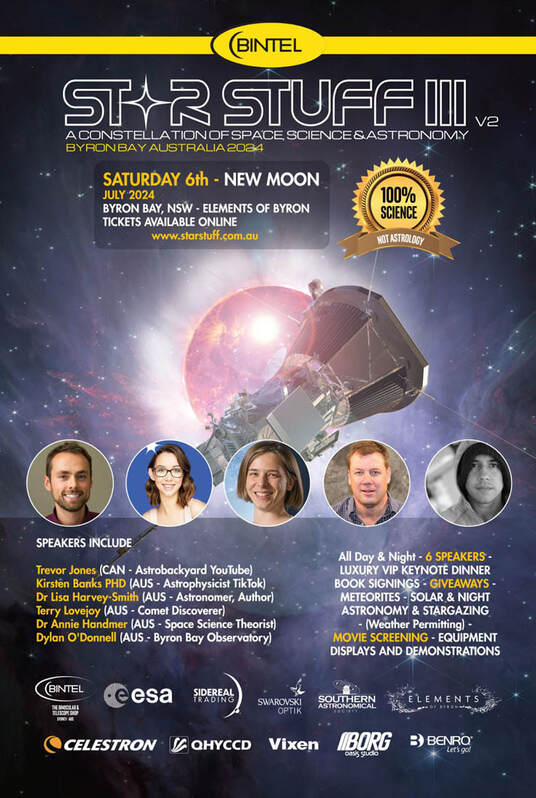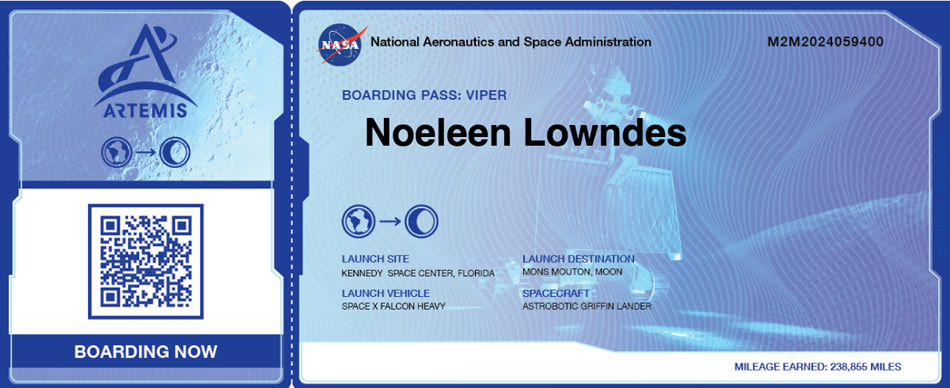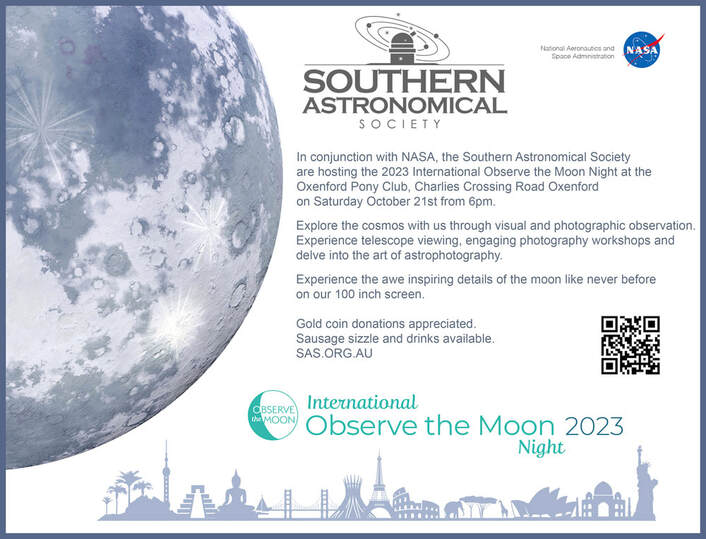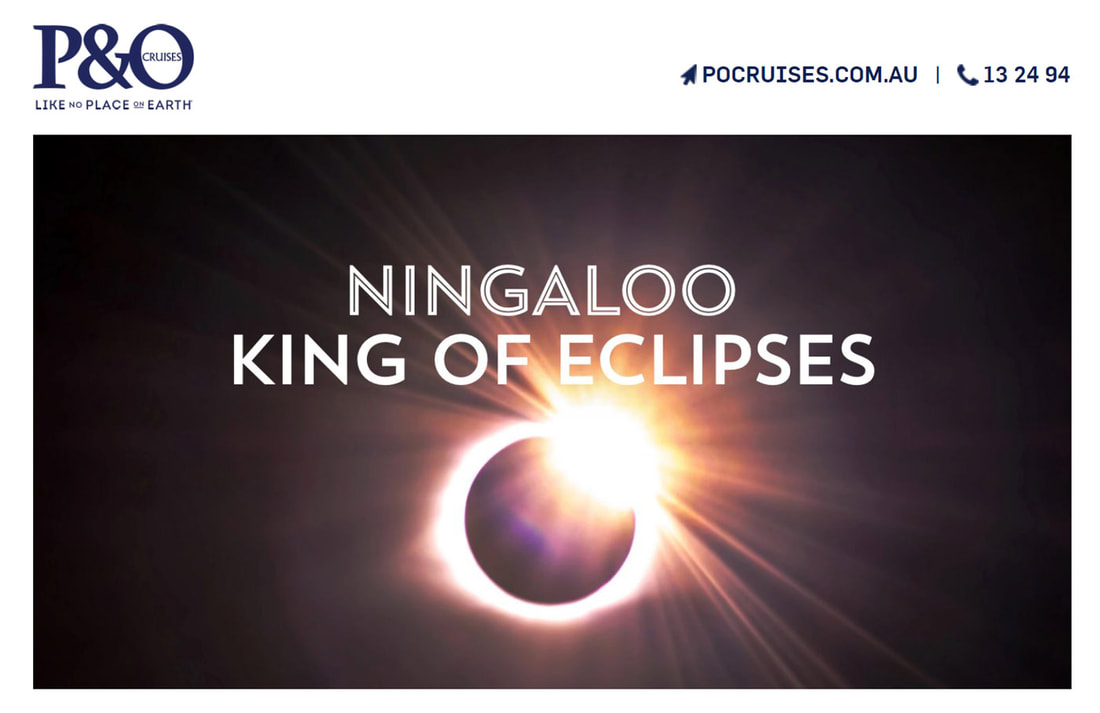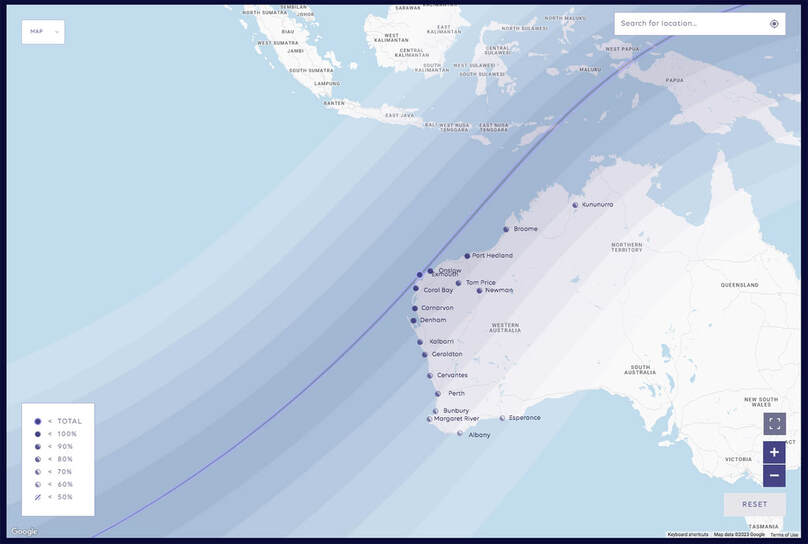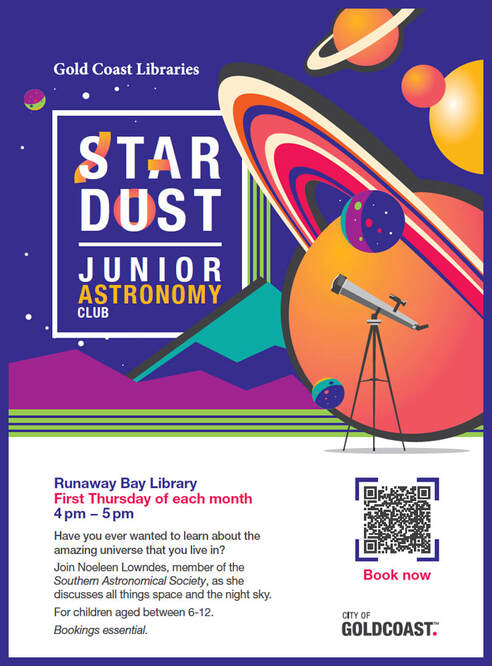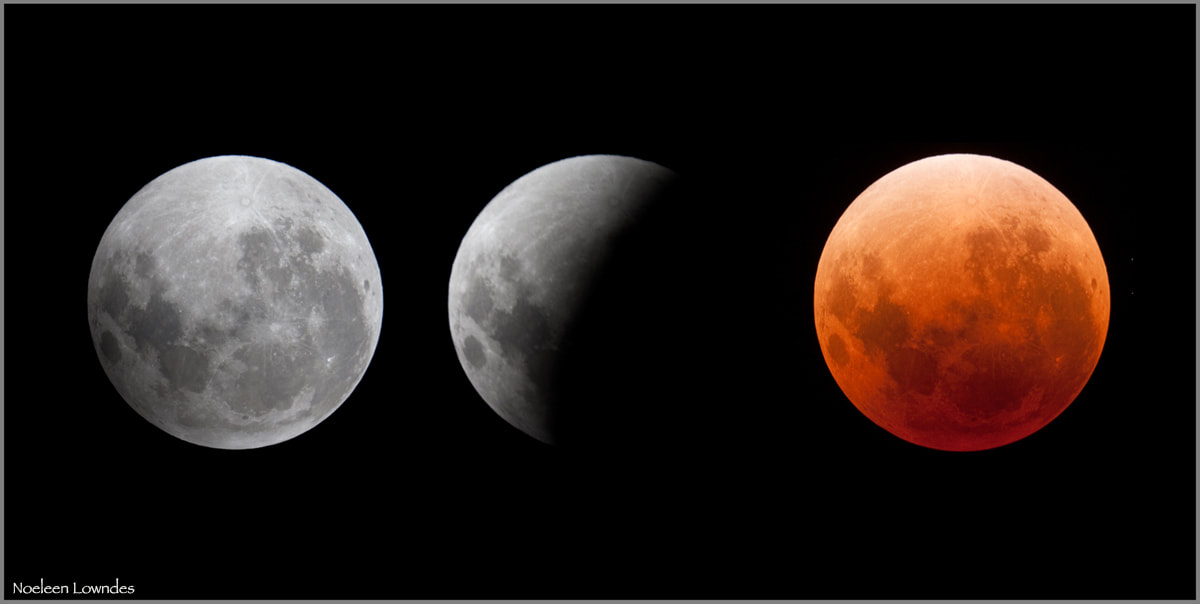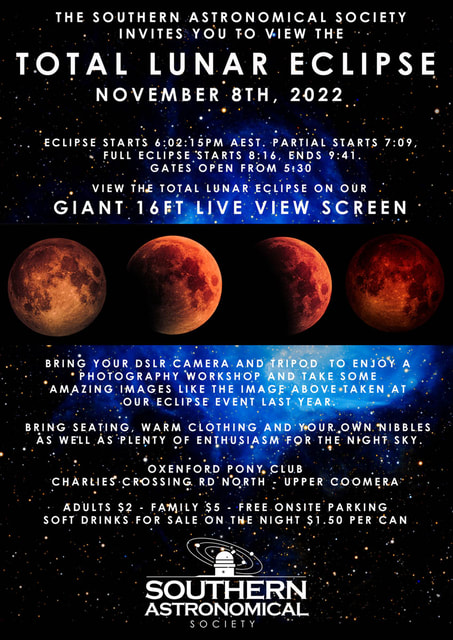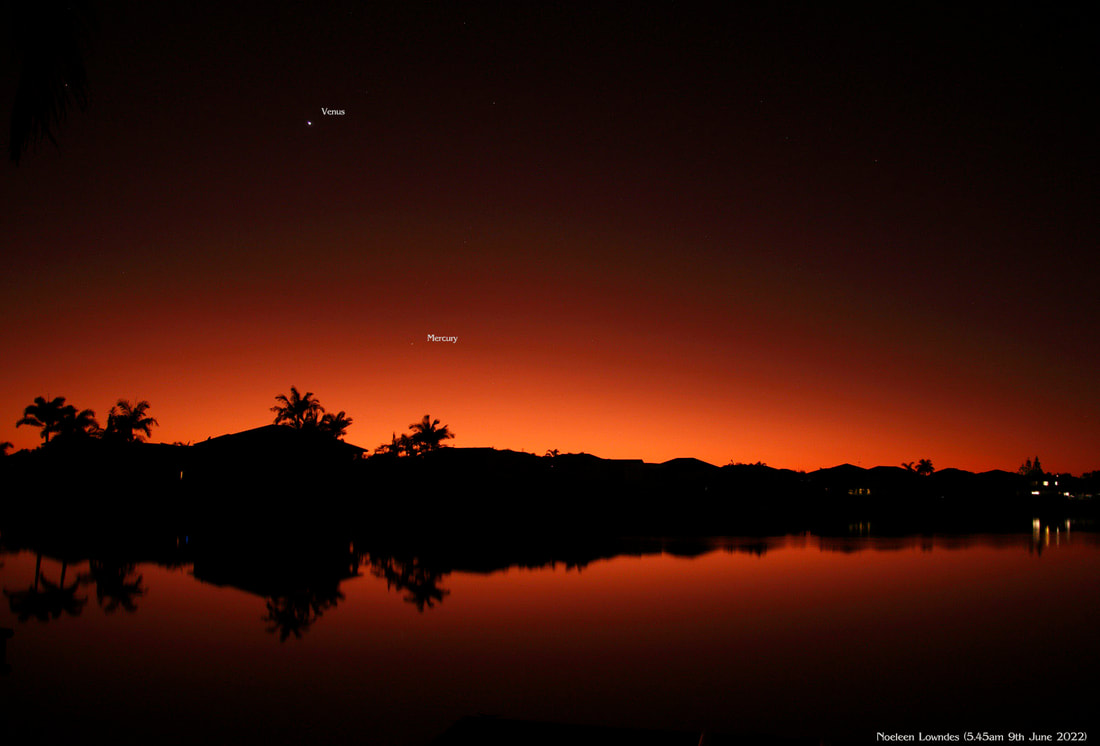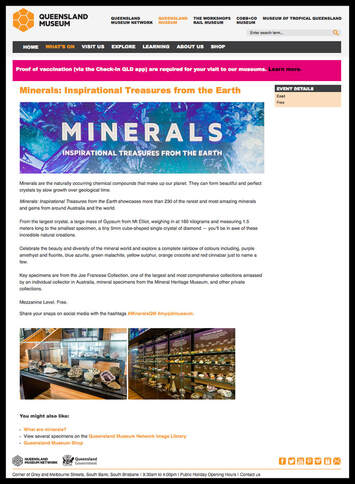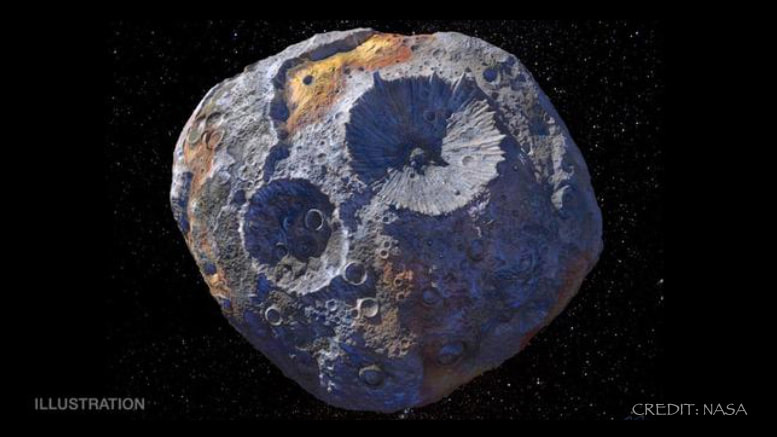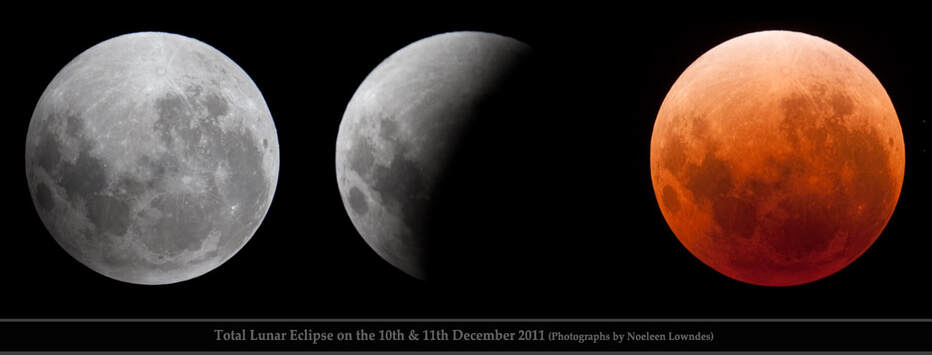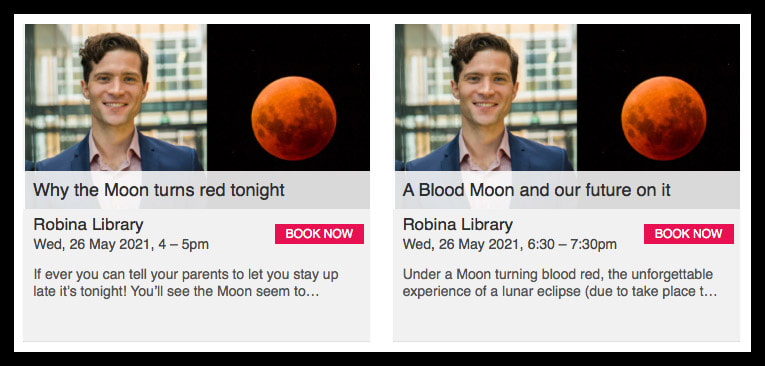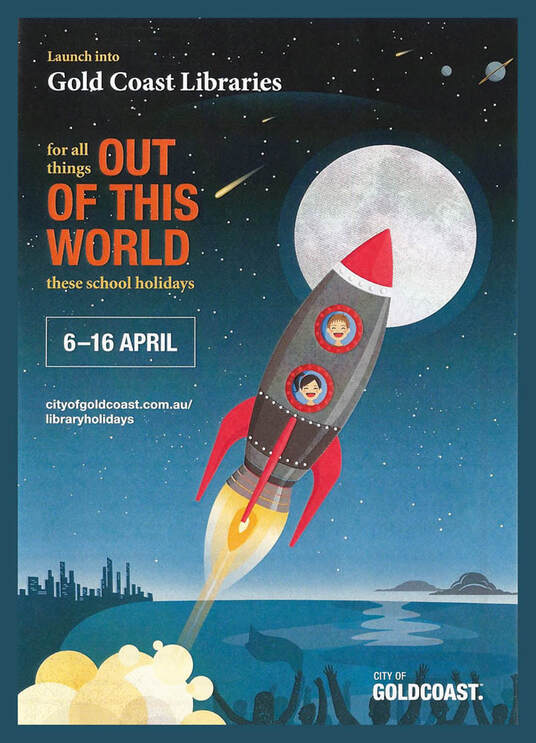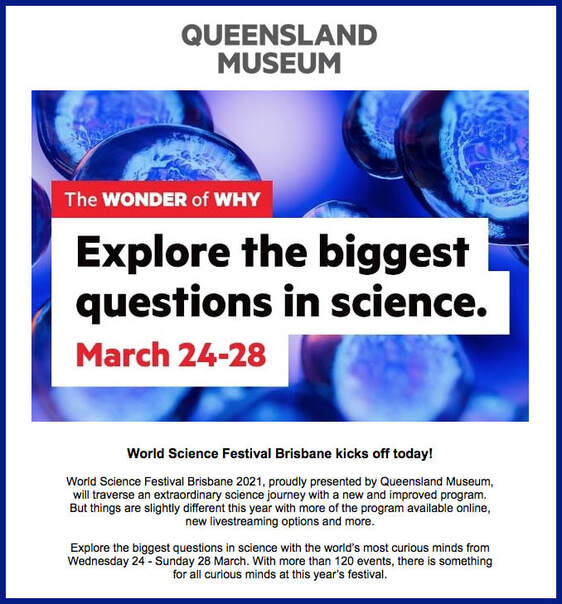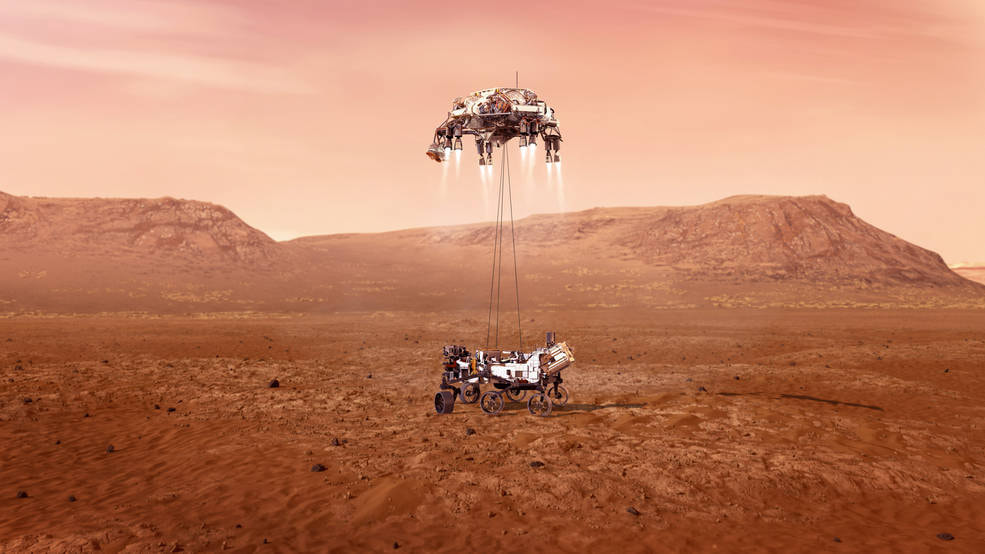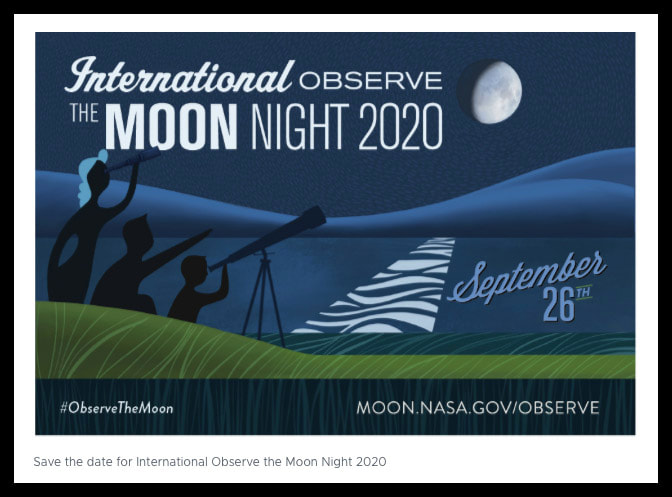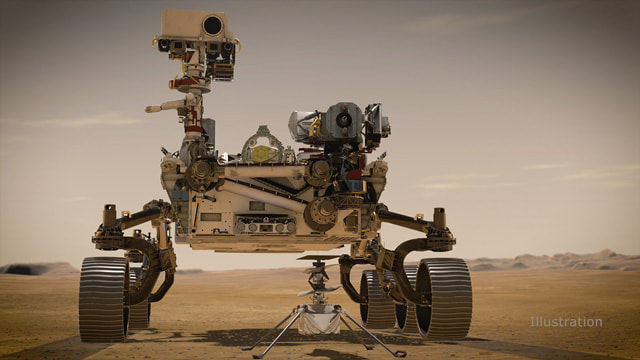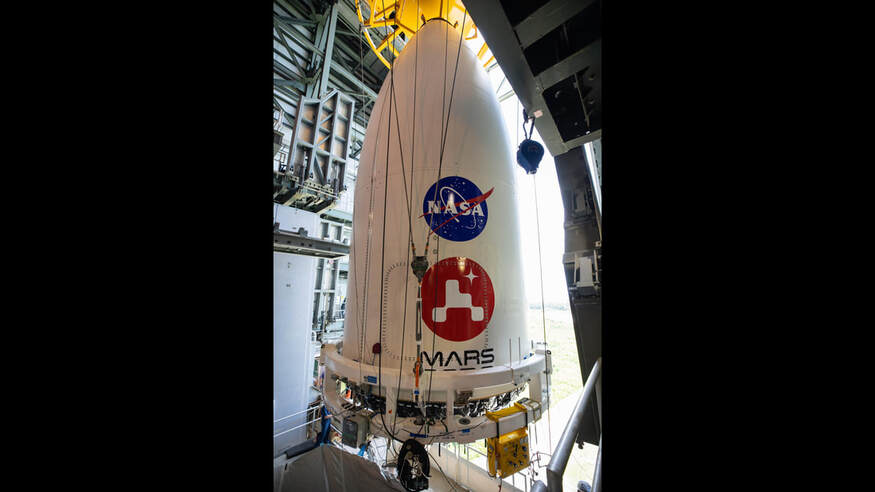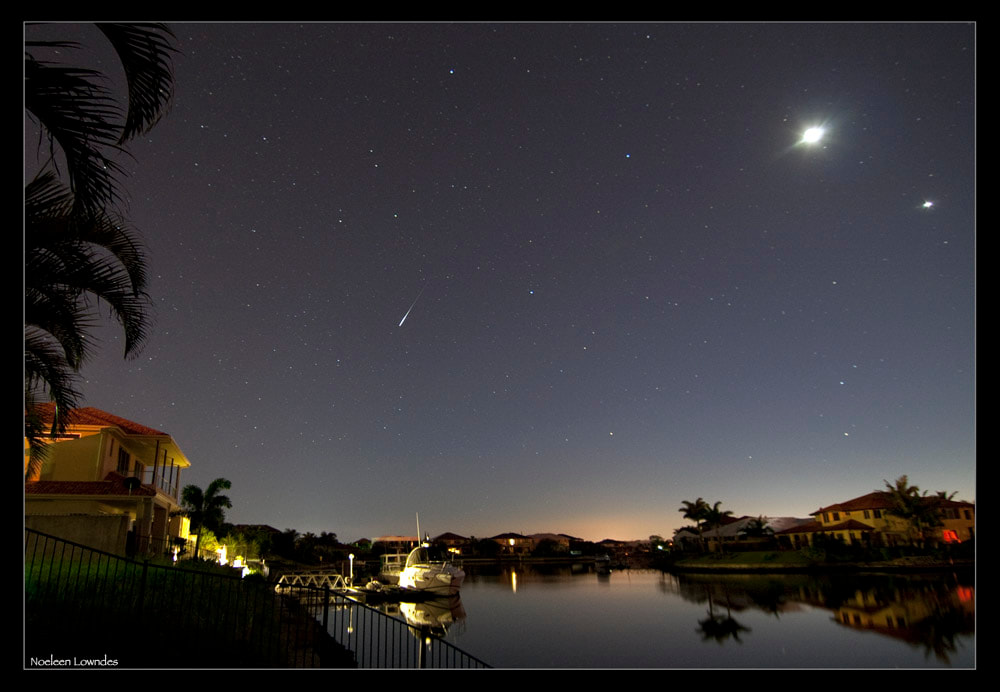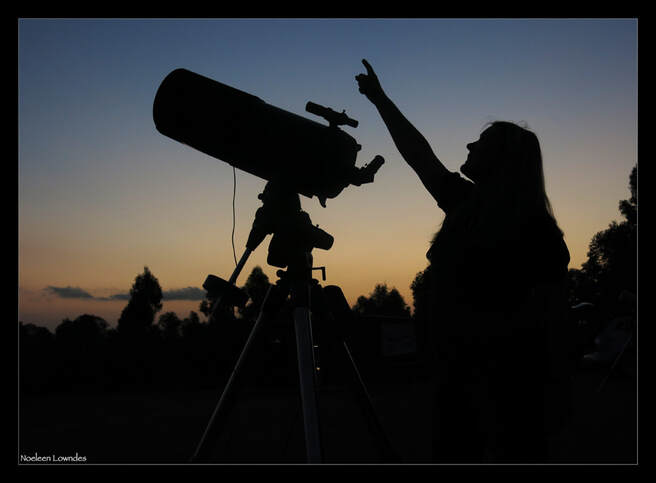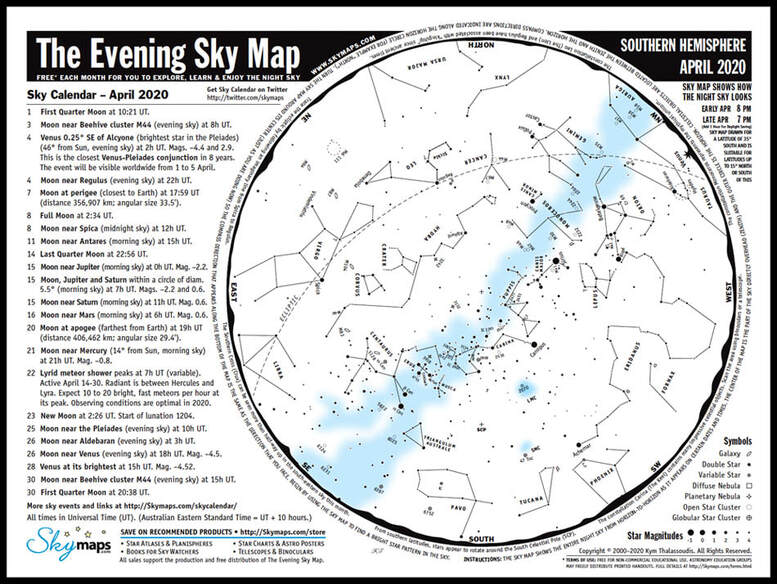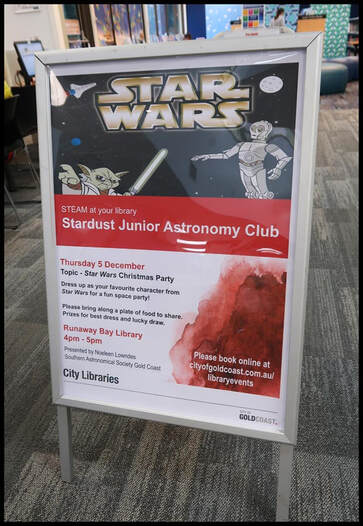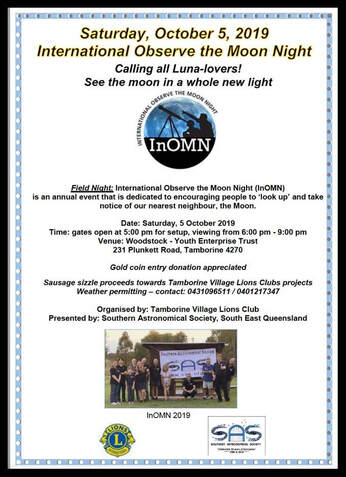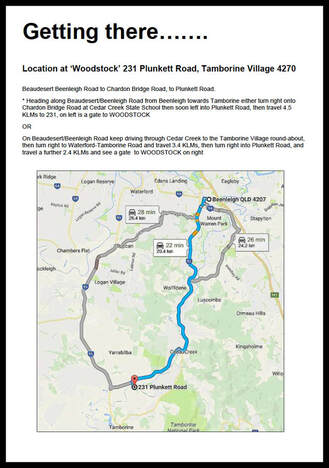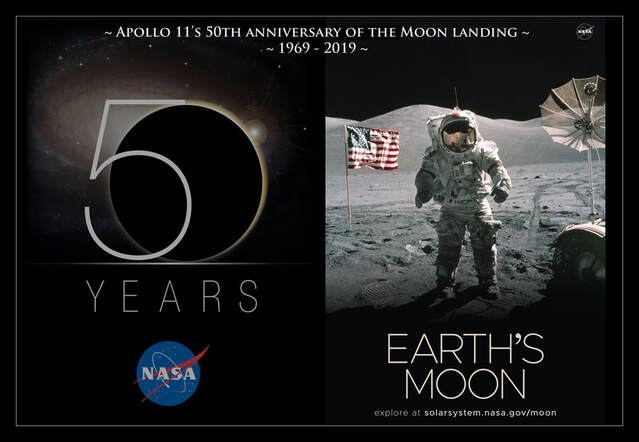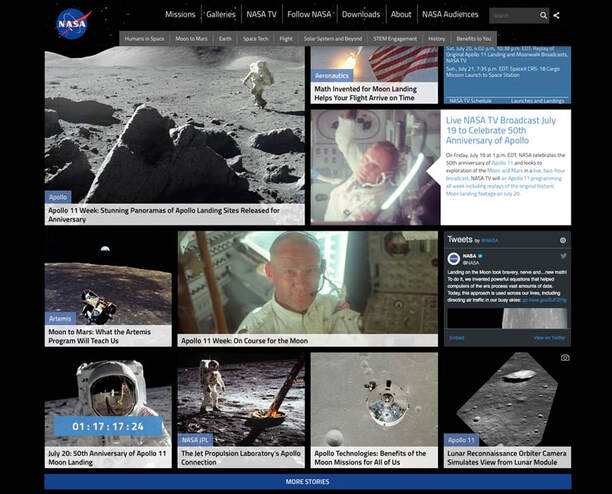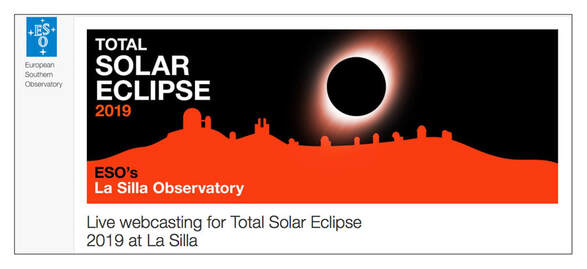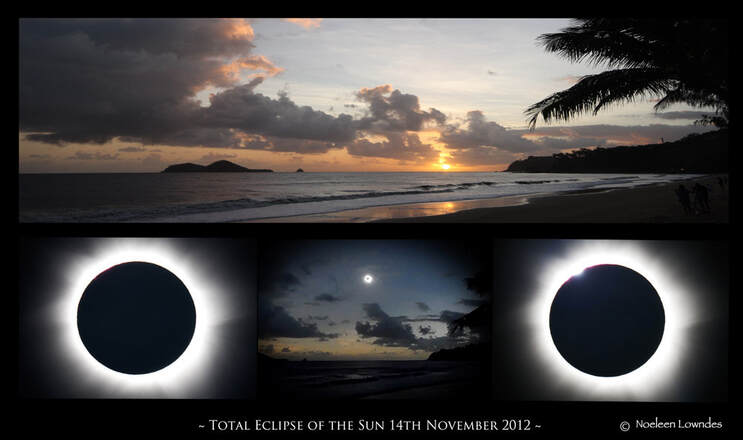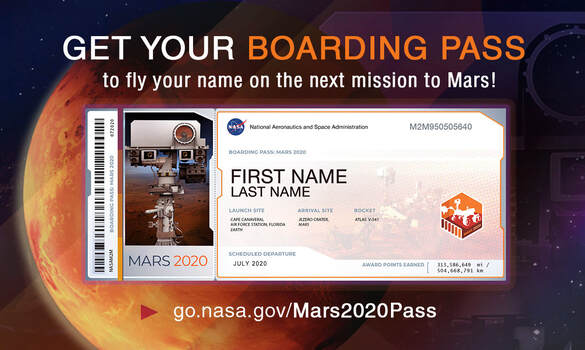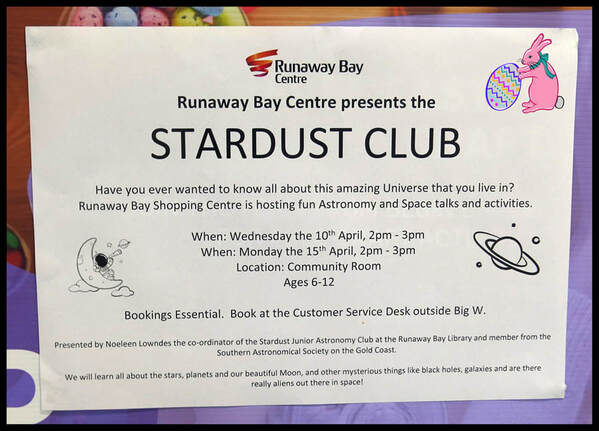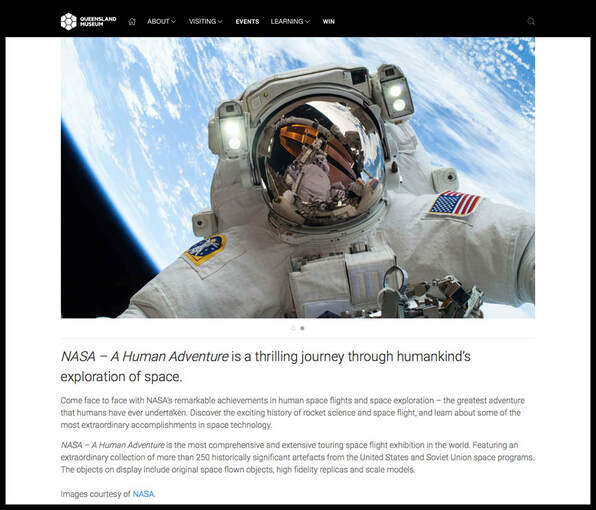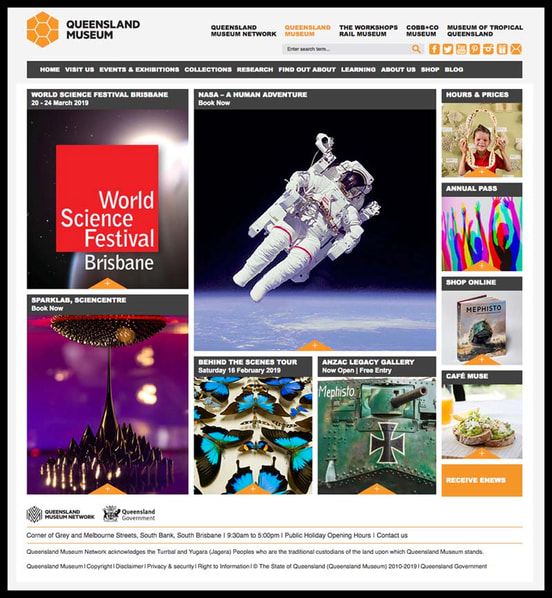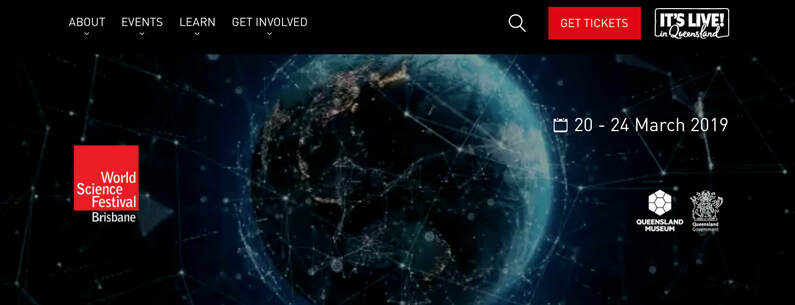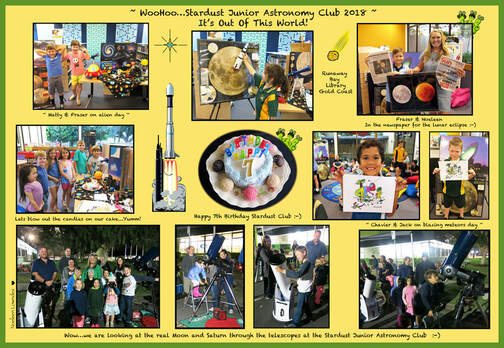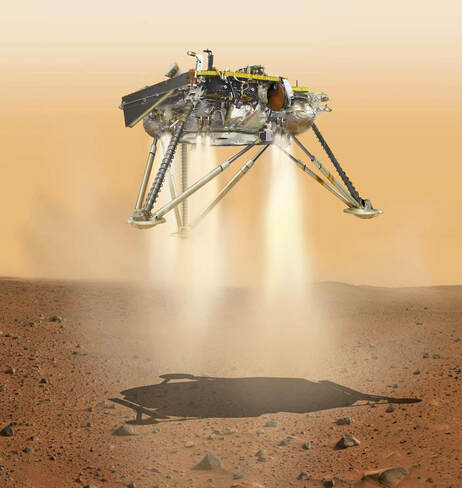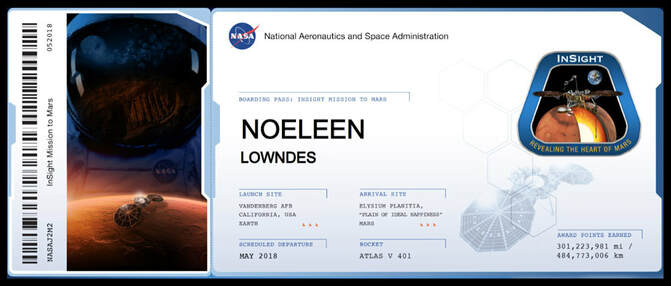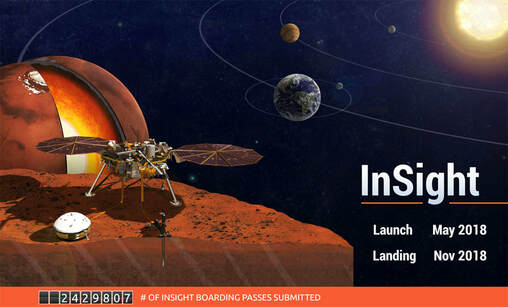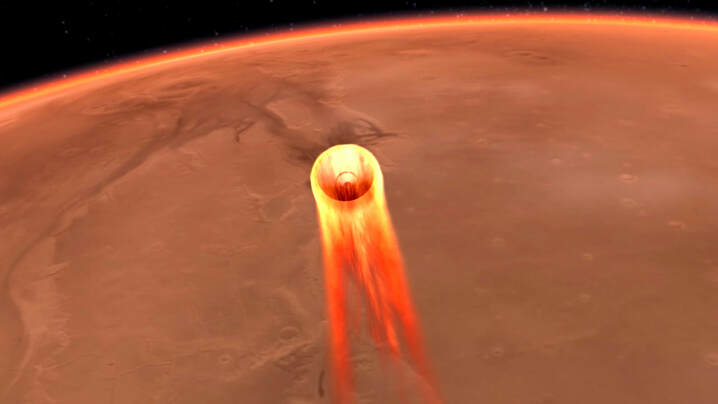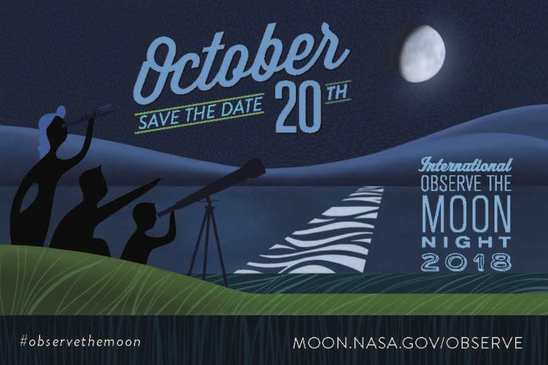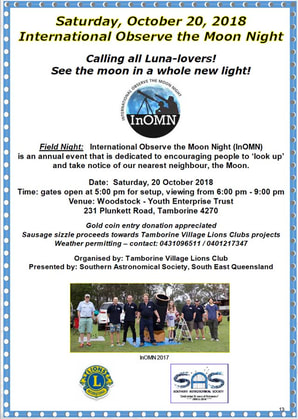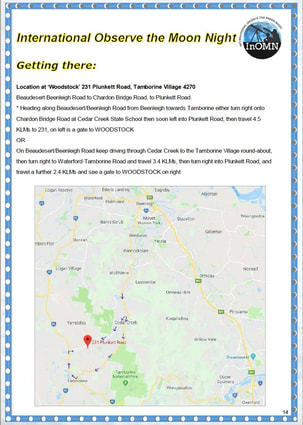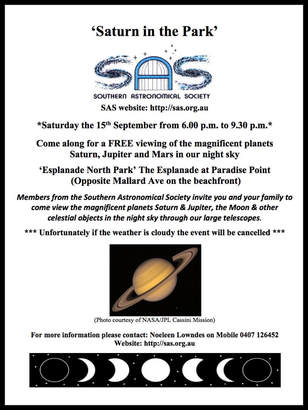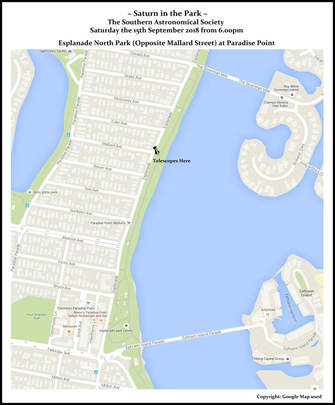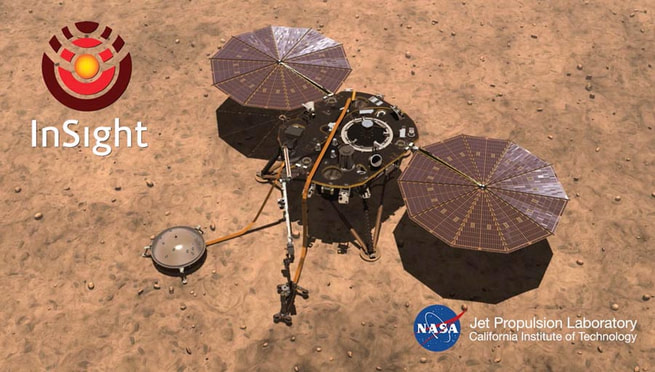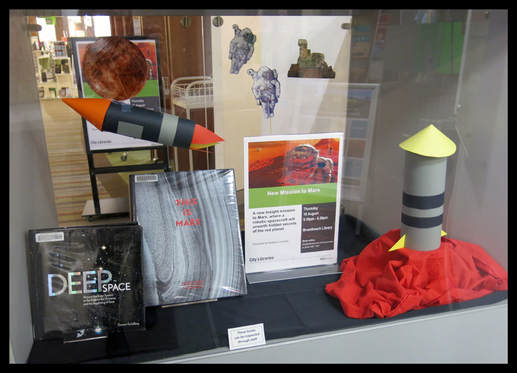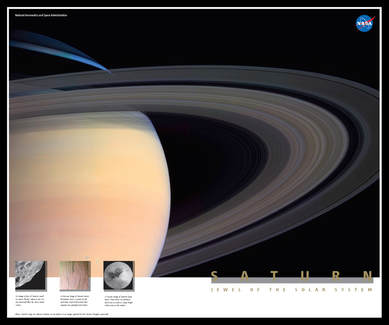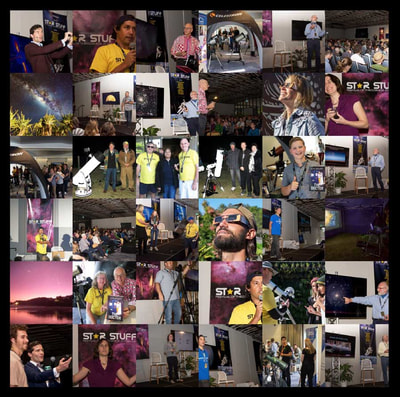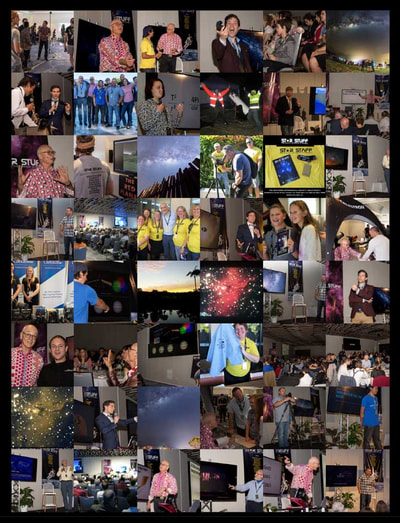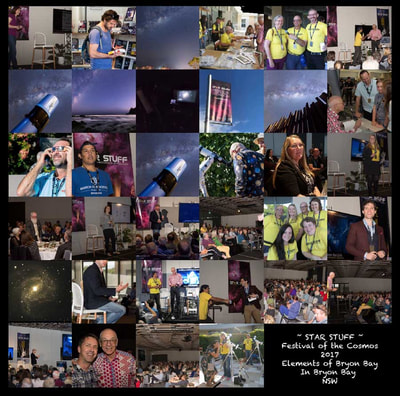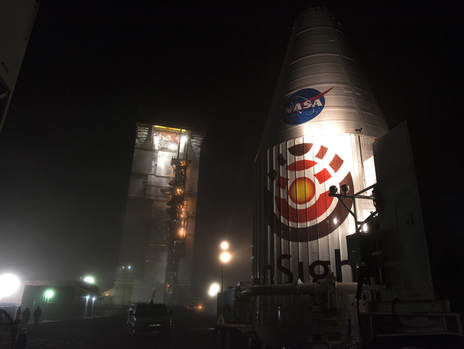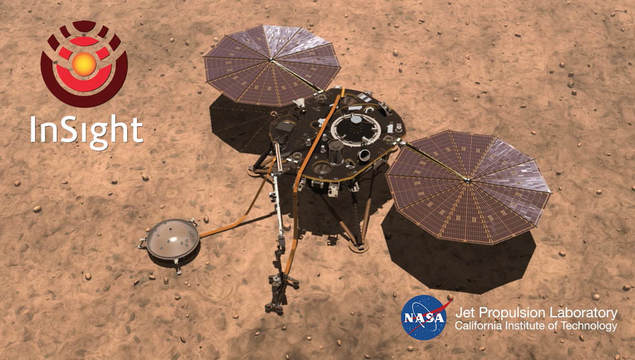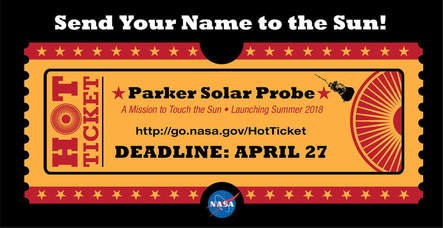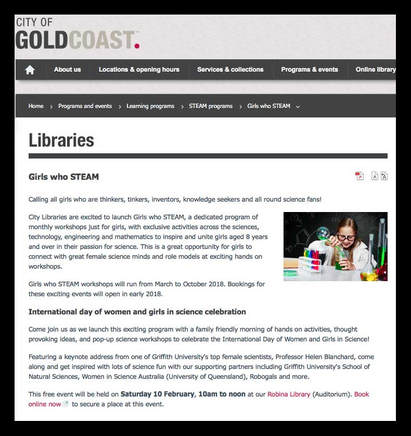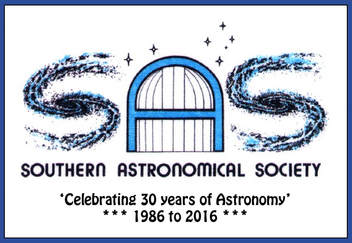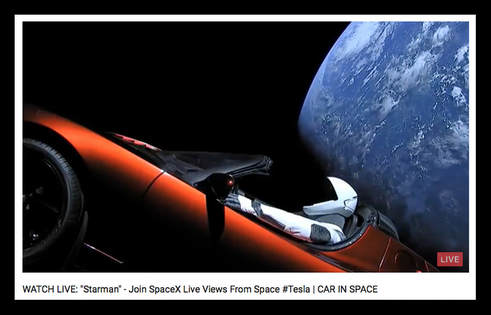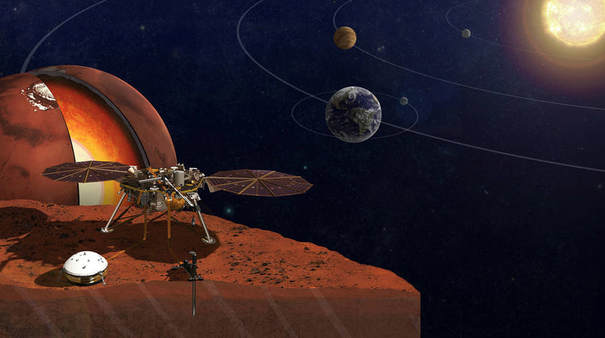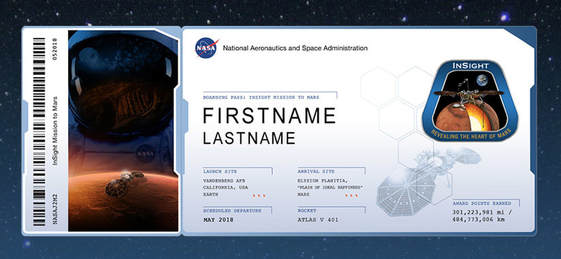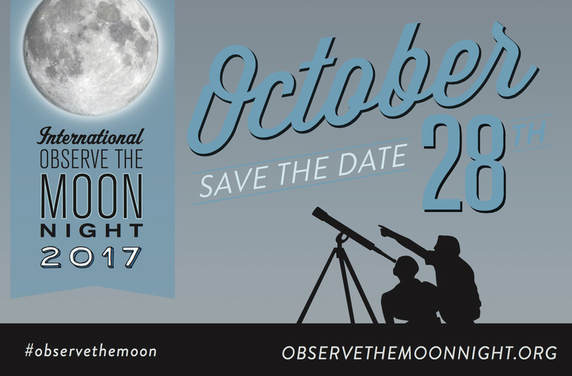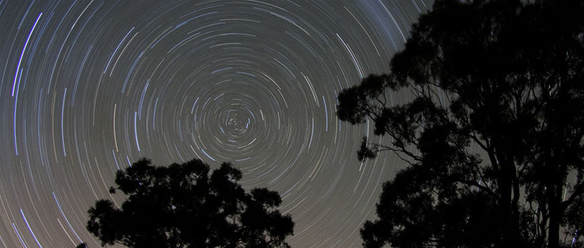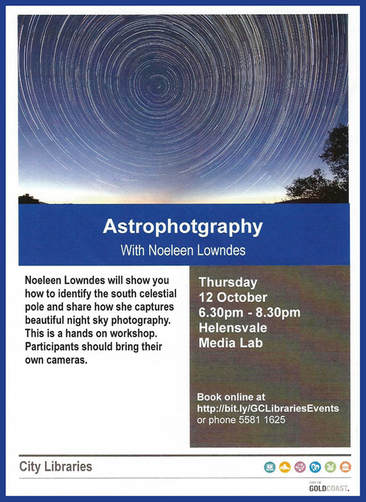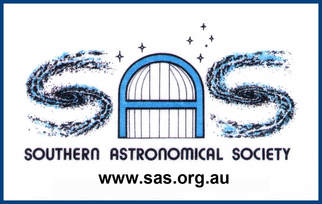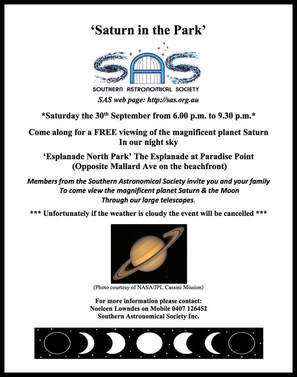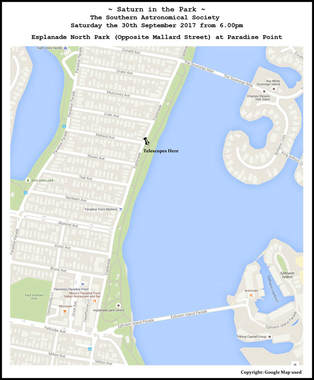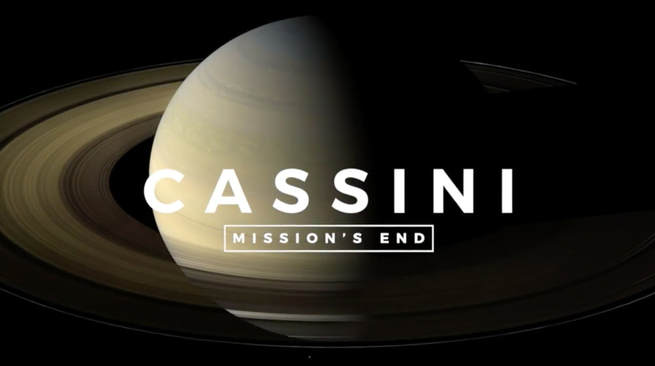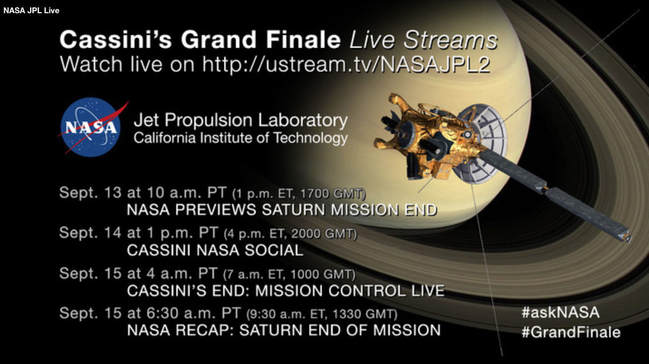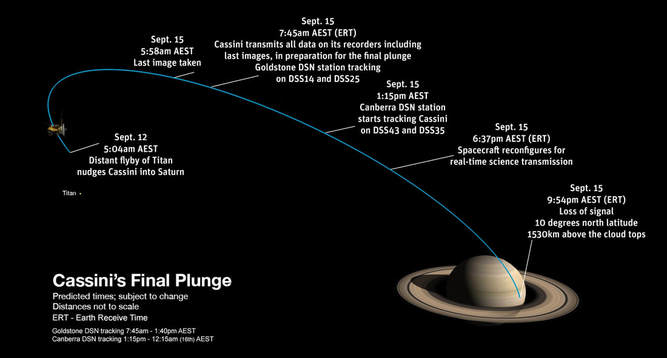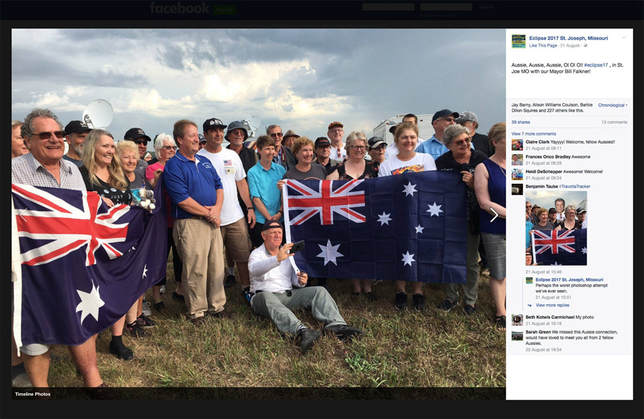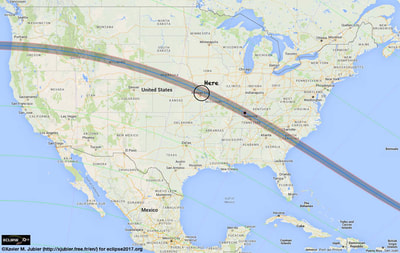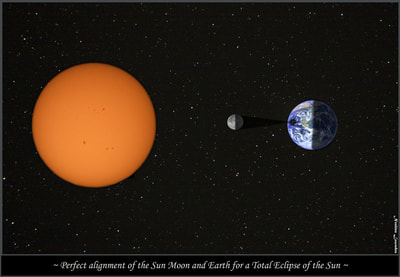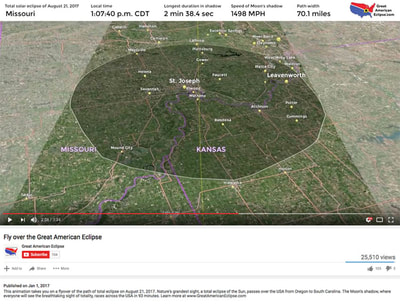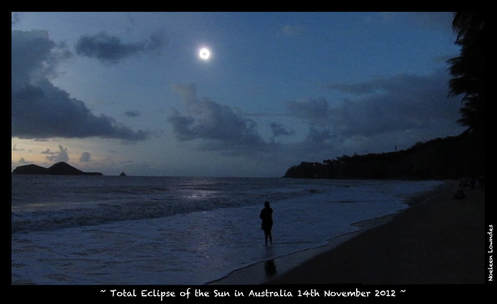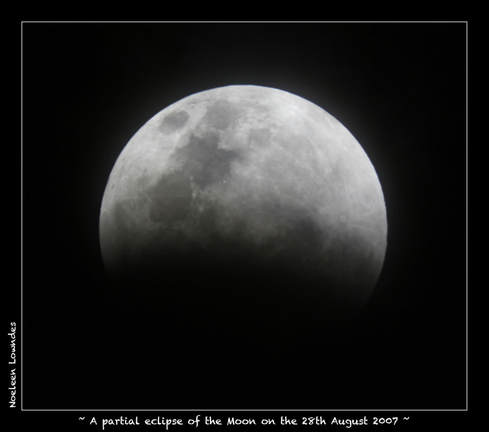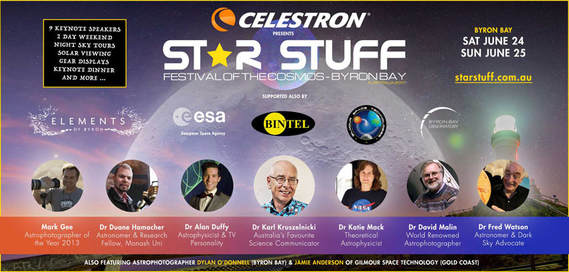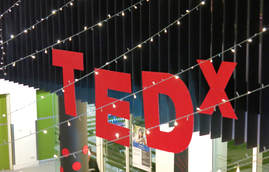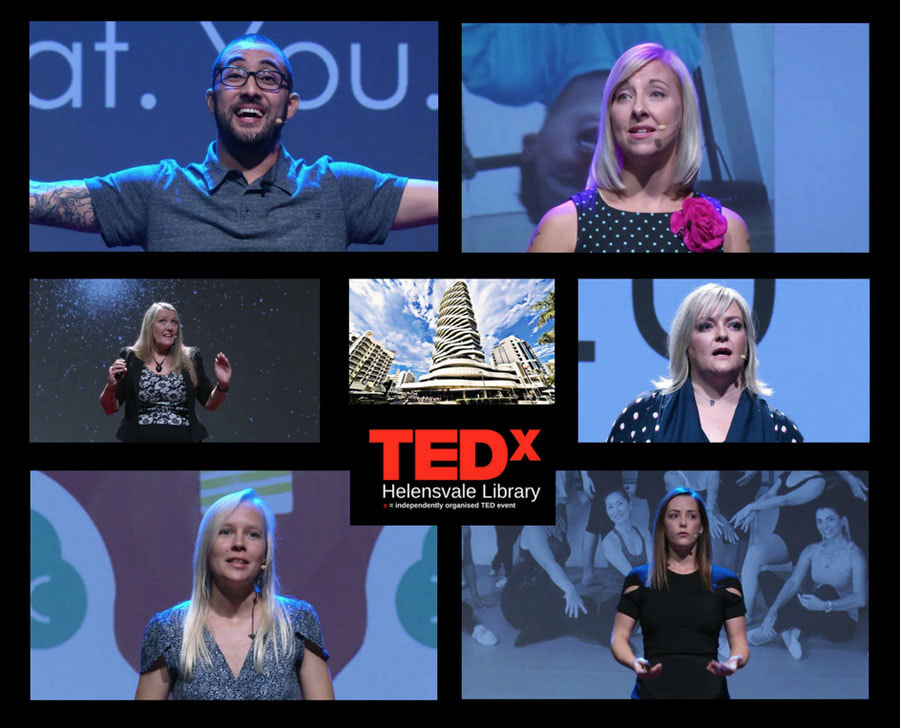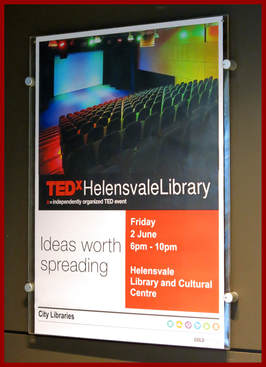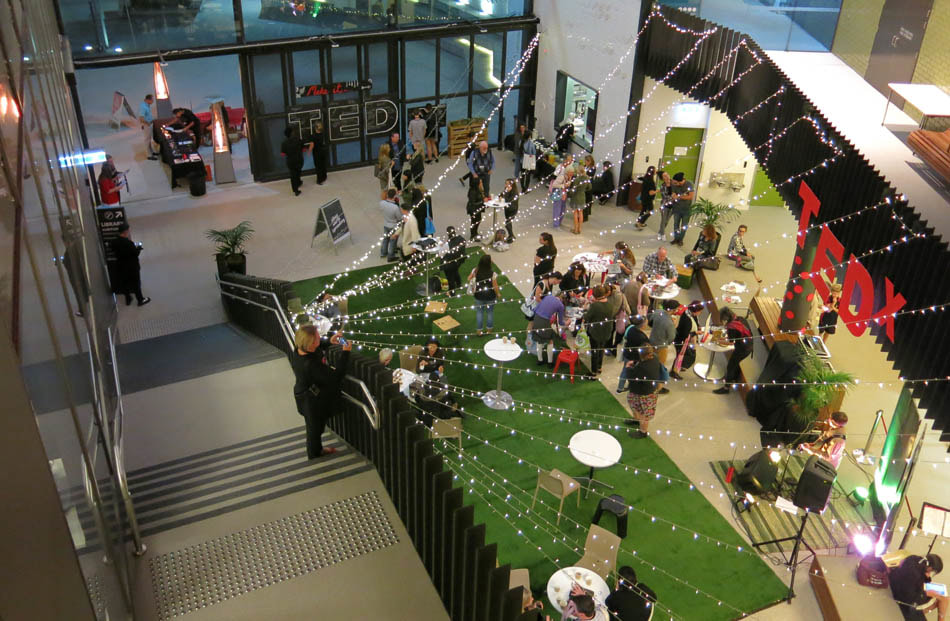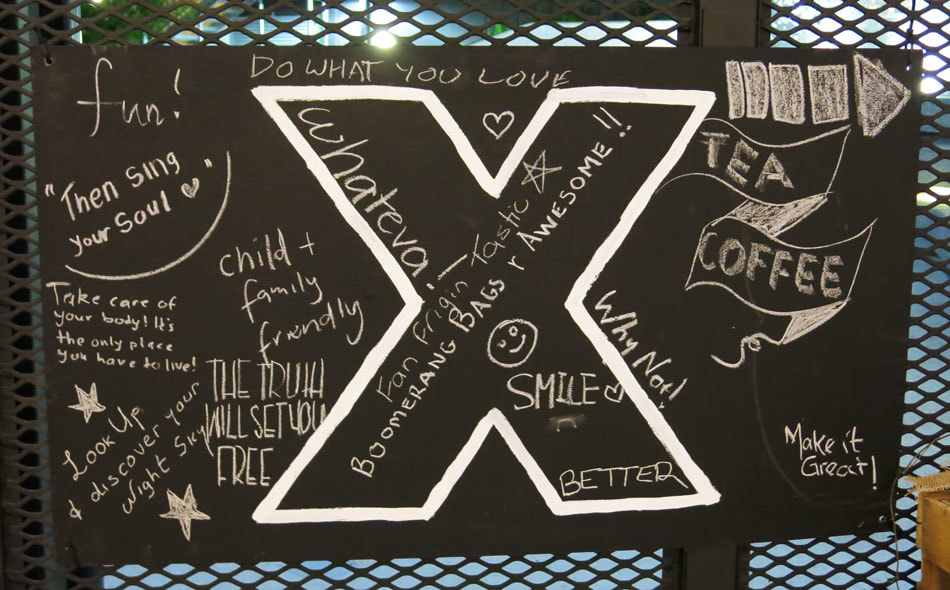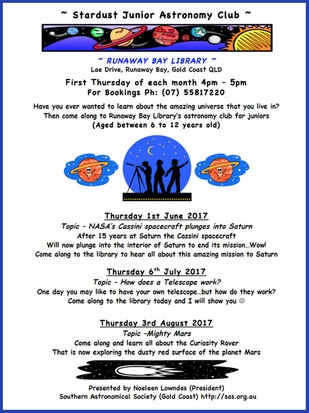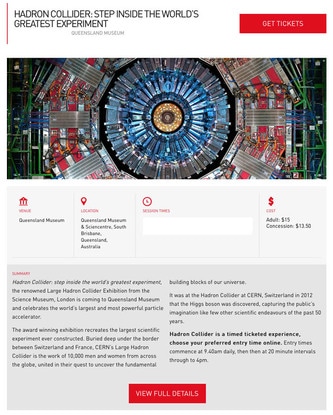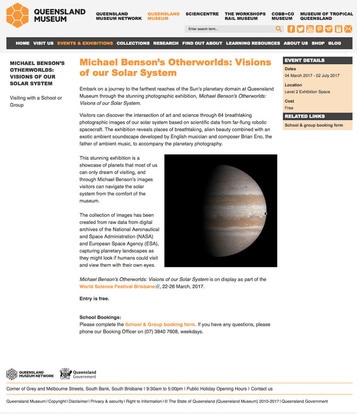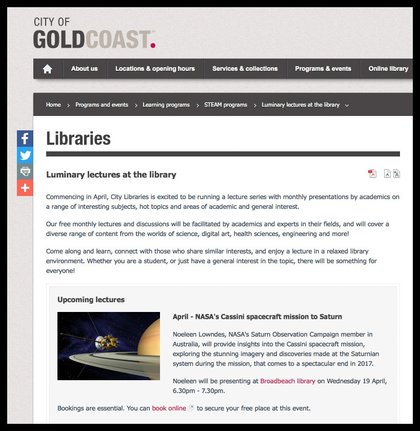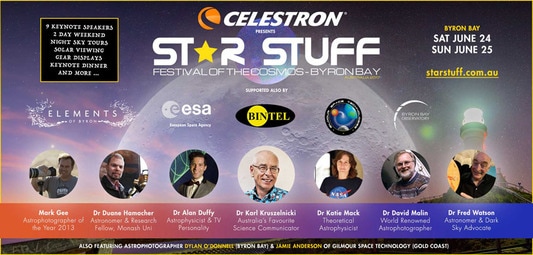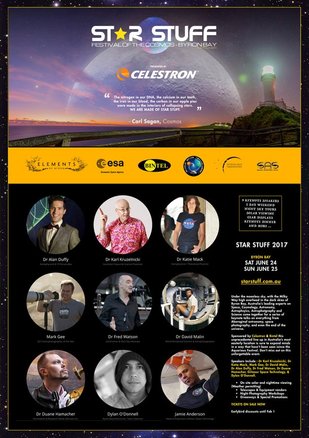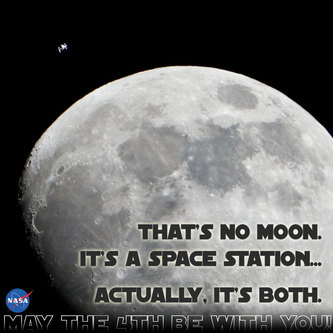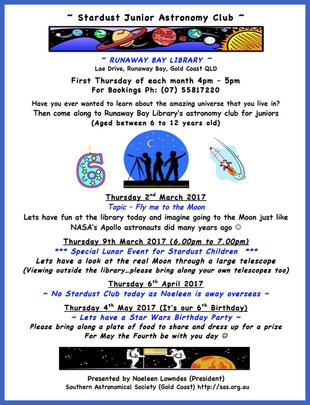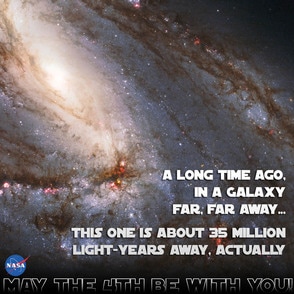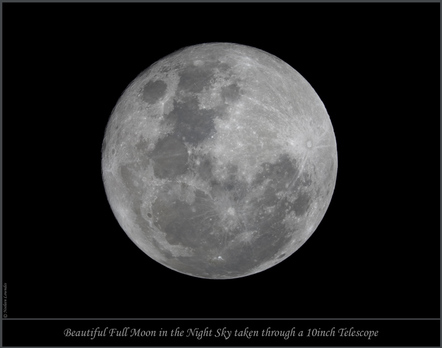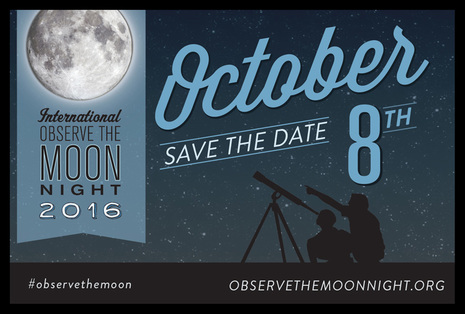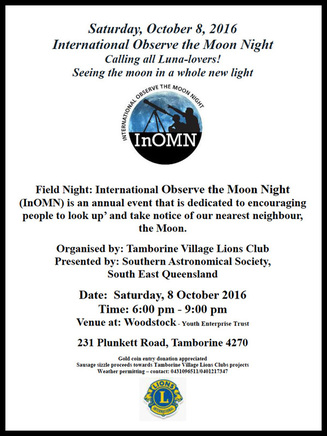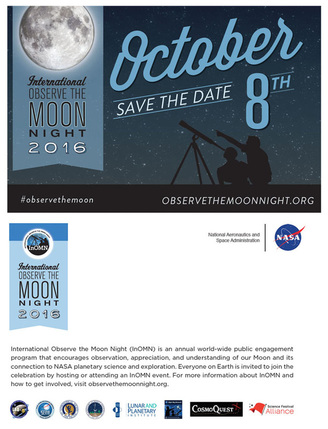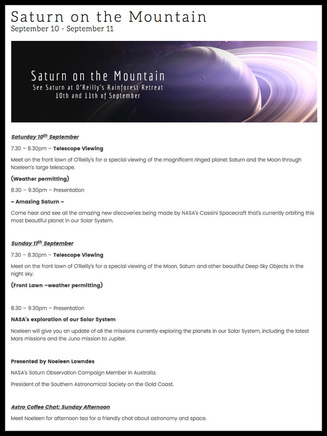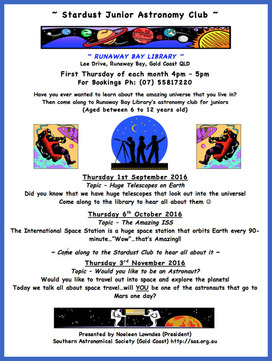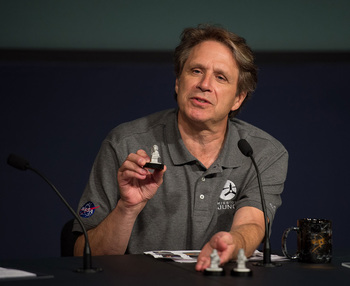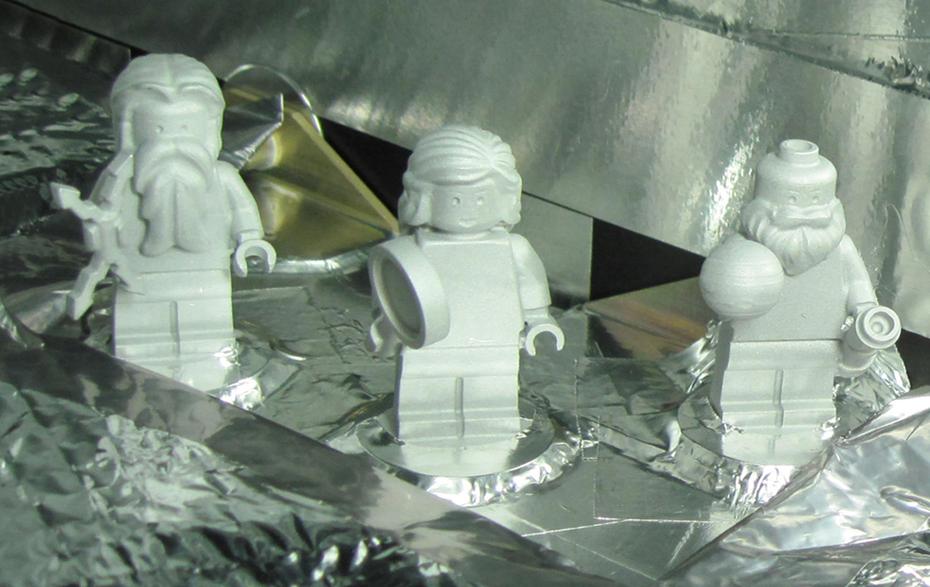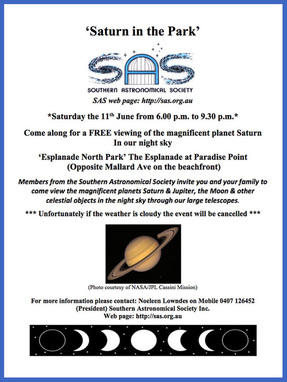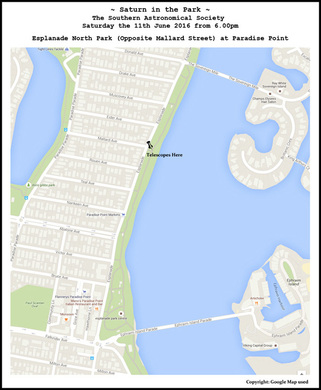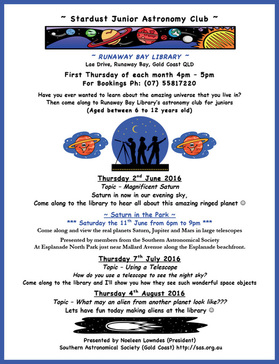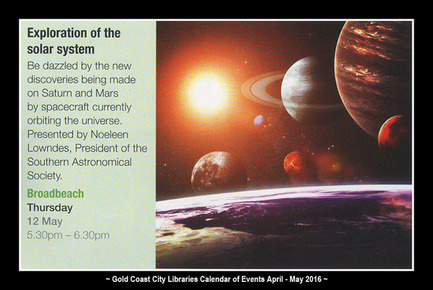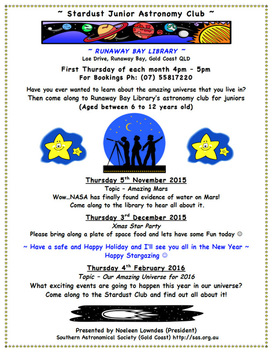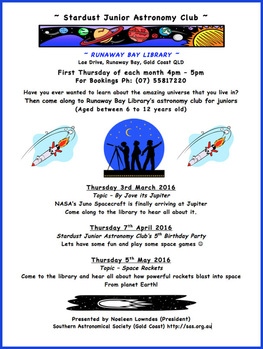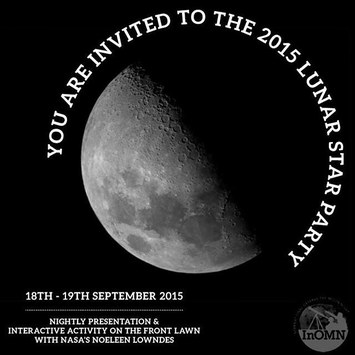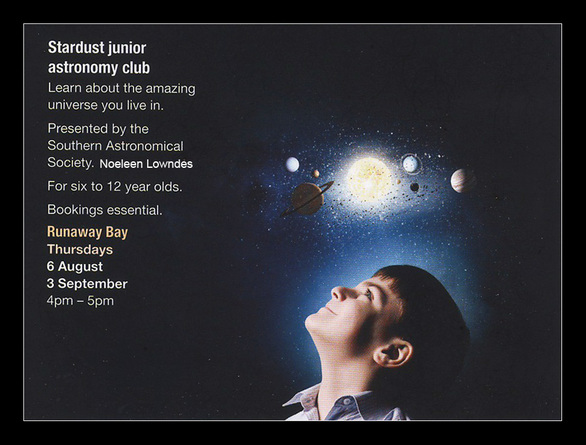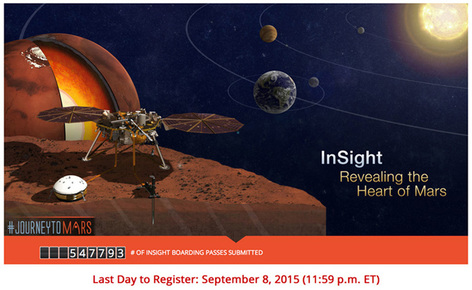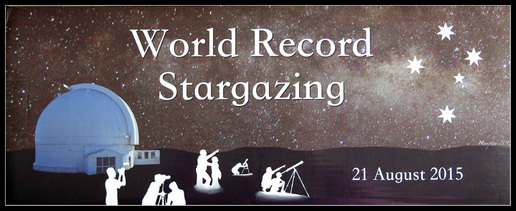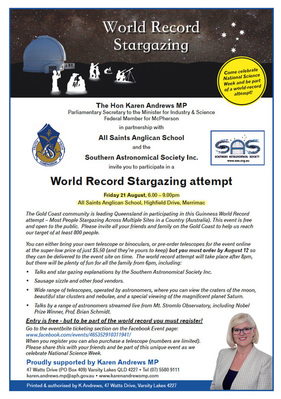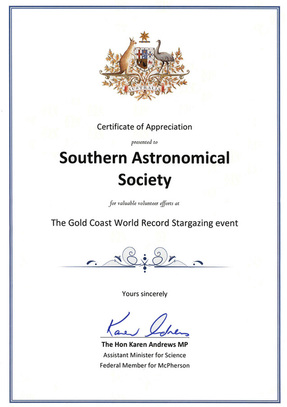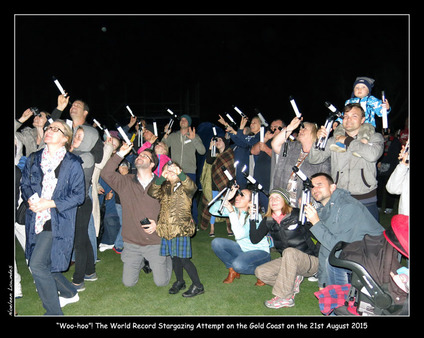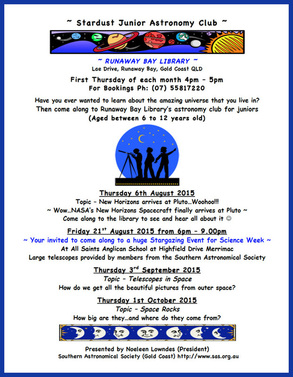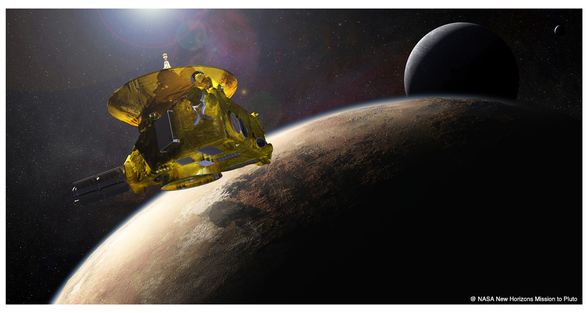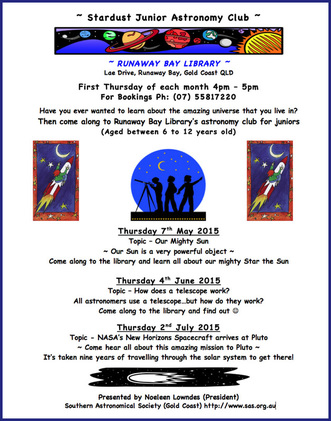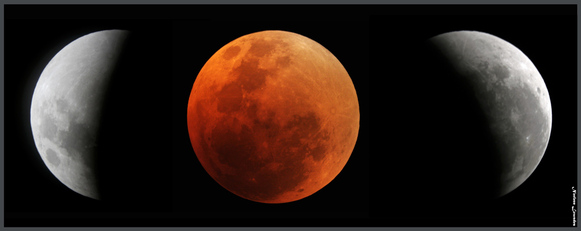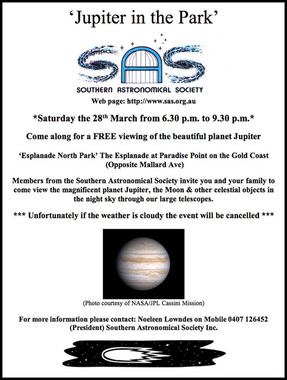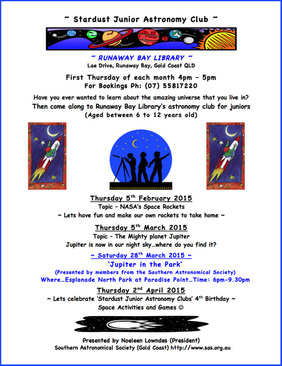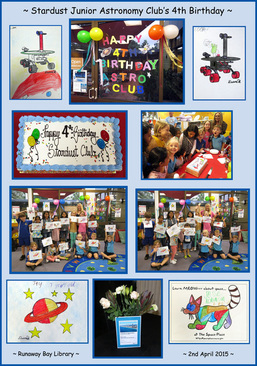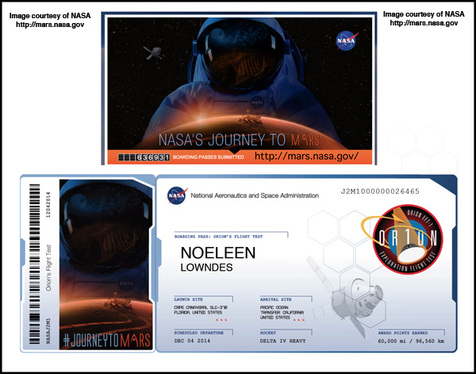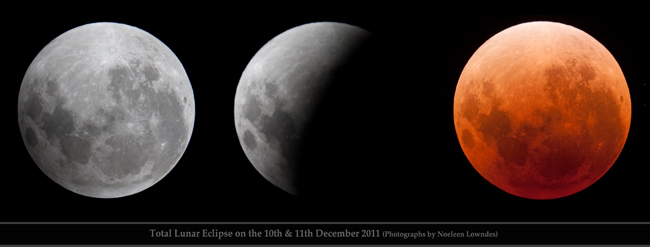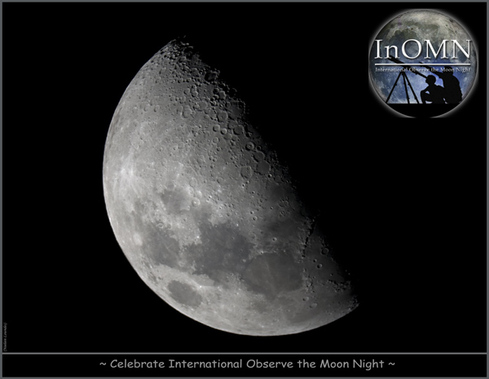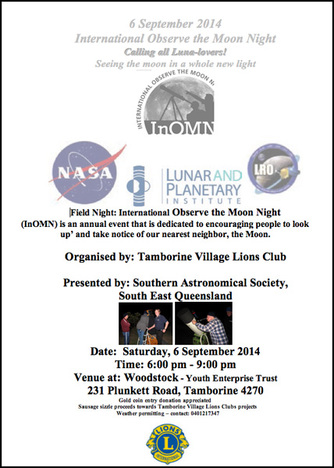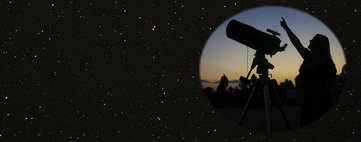~ Star Stuff 111 v2 ~
Saturday Day & Night – July 6th 2024
The Southern Astronomical Society supports Star Stuff…see you there :-)
https://www.sas.org.au
Australia’s favourite gathering of astronomers, space enthusiasts and science-forward friends is finally back again in 2024. We’re bringing back many of the speakers we had planned before the pandemic cancelled the last one.
Founded by YouTuber Dylan O’Donnell in 2017, Star Stuff is a full day of presentations from the world’s brightest and most engaging minds in space and astronomy, followed by a famous gala dinner at the incredible Elements of Byron Resort in Byron Bay, NSW Australia.
To book and find out more about this amazing astronomical event please go to:
https://starstuff.com.au
https://www.sas.org.au
Australia’s favourite gathering of astronomers, space enthusiasts and science-forward friends is finally back again in 2024. We’re bringing back many of the speakers we had planned before the pandemic cancelled the last one.
Founded by YouTuber Dylan O’Donnell in 2017, Star Stuff is a full day of presentations from the world’s brightest and most engaging minds in space and astronomy, followed by a famous gala dinner at the incredible Elements of Byron Resort in Byron Bay, NSW Australia.
To book and find out more about this amazing astronomical event please go to:
https://starstuff.com.au
~ Send Your Name to the Moon with NASA’s Viper Mission ~
Deadline is March 15th 2024
NASA VIPER Mission
https://science.nasa.gov/mission/viper/
Add your name here to have it fly aboard VIPER.
https://www3.nasa.gov/send-your-name-with-viper/
NASA's Artemis lunar rover, the Volatiles Investigating Polar Exploration Rover, or VIPER, will explore the relatively nearby but extreme environment of the Moon in search of ice and other potential resources.
This mobile robot will land at the South Pole of the Moon in late 2024 on a 100-day mission. The critical information it provides will teach us about the origin and distribution of water on the Moon and help determine how we can harvest the Moon's resources for future human space exploration.
NASA is inviting people to send their names to the surface of the Moon aboard the agency’s first robotic lunar rover, VIPER. NASA will accept names received before 11:59 p.m. EST, March 15, 2024. Once collected, the agency will take the names and attach them to the rover.
This mobile robot will land at the South Pole of the Moon in late 2024 on a 100-day mission. The critical information it provides will teach us about the origin and distribution of water on the Moon and help determine how we can harvest the Moon's resources for future human space exploration.
NASA is inviting people to send their names to the surface of the Moon aboard the agency’s first robotic lunar rover, VIPER. NASA will accept names received before 11:59 p.m. EST, March 15, 2024. Once collected, the agency will take the names and attach them to the rover.
NASA 2024: Onward and Upward
Landing science on the Moon, demonstrating quiet supersonic aircraft, and launching two new Earth climate satellites, plus a mission to Europa, one of Jupiter's icy moons, are just a FEW of the milestones we have planned for 2024.
Follow us on our journey: https://www.nasa.gov
Follow us on our journey: https://www.nasa.gov
~ International Observe the Moon Night (InOMN) 2023 ~
The Southern Astronomical Society
Is proud to host InOMN on Saturday 21st October 2023 from 6pm.
(Please see flyer below for more details)
Is proud to host InOMN on Saturday 21st October 2023 from 6pm.
(Please see flyer below for more details)
~ Ningaloo ‘King of Eclipses’ cruise on P&O Pacific Explorer ~
This once-in-a-lifetime 5-night cruise is an opportunity to view a Hybrid Solar Eclipse that will track over the North West Cape of Western Australia, including Exmouth. Pacific Explorer will be in a prime position to catch a glimpse of the first Hybrid Solar Eclipse to be visible from Australia in 1000 years. Also known as the King of Eclipse’s, our unique vantage point will put us in place to observe the sun, moon and Earth’s discs aligning. Certainly an event not to be missed!
We have invited special presenter partners to entertain and educate you as we cruise up the coast. Professional astronomers from the Astronomical Society of Australia, will give lectures, Q&As and during networking sessions share their knowledge on eclipse and astronomy basics, cutting edge astronomical research occurring in Australia and other special topics. And of course there will be stargazing to explore the Southern sky and cultural knowledge.
More information can be found at the main Western Australia Government website at:
https://ningalooeclipse.com/
https://ningalooeclipse.com/wp-content/uploads/2023/04/Ningaloo-Eclipse-downloadable-booklet.pdf
Also at the Gravity Centre in Perth at:
https://gravitycentre.com.au/2023-exmouth-solar-eclipse/
https://gravitycentre.com.au/
We have invited special presenter partners to entertain and educate you as we cruise up the coast. Professional astronomers from the Astronomical Society of Australia, will give lectures, Q&As and during networking sessions share their knowledge on eclipse and astronomy basics, cutting edge astronomical research occurring in Australia and other special topics. And of course there will be stargazing to explore the Southern sky and cultural knowledge.
More information can be found at the main Western Australia Government website at:
https://ningalooeclipse.com/
https://ningalooeclipse.com/wp-content/uploads/2023/04/Ningaloo-Eclipse-downloadable-booklet.pdf
Also at the Gravity Centre in Perth at:
https://gravitycentre.com.au/2023-exmouth-solar-eclipse/
https://gravitycentre.com.au/
~ Update for the Stardust Astronomy Club February 2023 ~
Stardust Junior Astronomy Club at Runaway Bay Library on the Gold Coast.
https://www.goldcoast.qld.gov.au/libraries/Whats-on
Yippee! After three years away because of Covid
The Stardust Junior Stardust Club will start up again on Thursday the 2nd February 2023 from 4-5pm
For budding little astronomers between the ages of 6-12 years
Thank you to Gold Coast Libraries.
Please scan the QR code on the flyer or go to the link below to book, as bookings are essential.
See you there for lots of space fun... Noeleen :-)
https://www.goldcoast.qld.gov.au/libraries/Whats-on
Yippee! After three years away because of Covid
The Stardust Junior Stardust Club will start up again on Thursday the 2nd February 2023 from 4-5pm
For budding little astronomers between the ages of 6-12 years
Thank you to Gold Coast Libraries.
Please scan the QR code on the flyer or go to the link below to book, as bookings are essential.
See you there for lots of space fun... Noeleen :-)
~ Total Eclipse of the Moon on the Gold Coast in QLD ~
Tuesday the 8th November 2022
Get ready for a beautiful lunar eclipse that begins from 7.09 pm and end at 10.49pm (AEST)
Total eclipse (Totality) will start at 8.16pm – 9.41pm that a full 1 hour and 25minutes to see a blood red Moon…Wow!
You don’t need a telescope to see this amazing astronomical event, just use your eyes or a pair of binoculars, sit back and enjoy one of the most beautiful celestial wonders of the night sky :-))
If you live on the Gold Coast or surrounding area my astronomy club the Southern Astronomical Society is having a special ‘Lunar Eclipse Night’ with gates opening at 5.30pm (Please see below the SAS flyer for all the details)
http://sas.org.au
Total eclipse (Totality) will start at 8.16pm – 9.41pm that a full 1 hour and 25minutes to see a blood red Moon…Wow!
You don’t need a telescope to see this amazing astronomical event, just use your eyes or a pair of binoculars, sit back and enjoy one of the most beautiful celestial wonders of the night sky :-))
If you live on the Gold Coast or surrounding area my astronomy club the Southern Astronomical Society is having a special ‘Lunar Eclipse Night’ with gates opening at 5.30pm (Please see below the SAS flyer for all the details)
http://sas.org.au
If your taking images, use your longest telephoto lens (200-300mm) with your camera attached to a tripod, use a cable release so you don’t touch the camera, also remember to manual focus.
You’ll only need to take short exposures when the Moon is very bright in the early partial stages, but at full eclipse be prepared to take exposures for a few seconds and increase the ISO, as there’s very little light on the surface of the Moon.
Images from past eclipse at:
http://www.mystardustobservatory.com/astro-blog/-total-eclipse-of-the-super-moon-on-the-26th-may-2021
Please see some camera settings from previous lunar eclipse on my website at:
http://www.mystardustobservatory.com/astro-blog/-total-eclipse-of-the-moon-on-the-15th-april-2014
http://www.mystardustobservatory.com/astro-blog/-total-eclipse-of-the-moon-on-the-gold-coast-8th-october-2014
All lunar eclipses are different, it all depends how much dust, smoke or moisture is in the atmosphere that determines how dark or light the eclipsed Moon will look. The only reason we are seeing the Moon at all is because the Suns light is being refracted through the Earths atmosphere and shining onto the surface of the Moon while it's orbiting through the Earths shadow.
Have fun and enjoy the lunar eclipse :-)
You’ll only need to take short exposures when the Moon is very bright in the early partial stages, but at full eclipse be prepared to take exposures for a few seconds and increase the ISO, as there’s very little light on the surface of the Moon.
Images from past eclipse at:
http://www.mystardustobservatory.com/astro-blog/-total-eclipse-of-the-super-moon-on-the-26th-may-2021
Please see some camera settings from previous lunar eclipse on my website at:
http://www.mystardustobservatory.com/astro-blog/-total-eclipse-of-the-moon-on-the-15th-april-2014
http://www.mystardustobservatory.com/astro-blog/-total-eclipse-of-the-moon-on-the-gold-coast-8th-october-2014
All lunar eclipses are different, it all depends how much dust, smoke or moisture is in the atmosphere that determines how dark or light the eclipsed Moon will look. The only reason we are seeing the Moon at all is because the Suns light is being refracted through the Earths atmosphere and shining onto the surface of the Moon while it's orbiting through the Earths shadow.
Have fun and enjoy the lunar eclipse :-)
~ The eruption of the Hunga Tonga Hunga Ha'apai volcano ~
~ Stunning coloured twilight skies seen before Dawn & after Sunset ~
On the Gold Coast in QLD, Australia in the Southern Hemisphere
Australia and most of the Southern hemisphere have been experiencing amazing displays in the sky before sunrise and after sunset, where the sunlight is being scattered by volcanic aerosol high up in our atmosphere.
In January this year an underwater volcano in Tonga erupted called Hunga Tonga-Hunga Ha’apai with the explosive power of nothing like we’ve seen since Mt Pinatubo erupted in 1991. This explosive event reached up high into the mesosphere of our Earth’s atmosphere and for 6 months now its been spreading out through the stratosphere.
At first we were only seeing these incredibly coloured skies once or twice a week, but now we are viewing them nearly every night. To add to the beauty of this event we now have a rare planetary alignment on show before dawn every morning, which makes for some breathtaking displays to view and to photograph.
Please go to my Astro Blog, where you’ll see many images that I’ve taken since March 2022, that’s when our skies finally cleared here in Queensland after months of cloudy wet weather. http://www.mystardustobservatory.com/astro-blog
If you would like to take some images for yourself, all the information on how I took the images are with the photographs, the best time is 45 minutes before dawn and up to 45 minutes after sunset…. good luck and enjoy this stunning atmospheric event :-)
The link to the NASA website explaining the Hunga-Tonga eruption is at:
https://www.nasa.gov/feature/goddard/2022/sun/nasa-mission-finds-tonga-volcanic-eruption-effects-reached-space
YouTube Channel - Geology Hub - has just posted another excellent video with scientific information about this very explosive eruption of the Hunga Tonga Hunga Ha'apai volcano; please see the latest YouTube video below:
In January this year an underwater volcano in Tonga erupted called Hunga Tonga-Hunga Ha’apai with the explosive power of nothing like we’ve seen since Mt Pinatubo erupted in 1991. This explosive event reached up high into the mesosphere of our Earth’s atmosphere and for 6 months now its been spreading out through the stratosphere.
At first we were only seeing these incredibly coloured skies once or twice a week, but now we are viewing them nearly every night. To add to the beauty of this event we now have a rare planetary alignment on show before dawn every morning, which makes for some breathtaking displays to view and to photograph.
Please go to my Astro Blog, where you’ll see many images that I’ve taken since March 2022, that’s when our skies finally cleared here in Queensland after months of cloudy wet weather. http://www.mystardustobservatory.com/astro-blog
If you would like to take some images for yourself, all the information on how I took the images are with the photographs, the best time is 45 minutes before dawn and up to 45 minutes after sunset…. good luck and enjoy this stunning atmospheric event :-)
The link to the NASA website explaining the Hunga-Tonga eruption is at:
https://www.nasa.gov/feature/goddard/2022/sun/nasa-mission-finds-tonga-volcanic-eruption-effects-reached-space
YouTube Channel - Geology Hub - has just posted another excellent video with scientific information about this very explosive eruption of the Hunga Tonga Hunga Ha'apai volcano; please see the latest YouTube video below:
Hunga Tonga Volcano Update; The Cause of Unusual Sunsets around the Globe
GeologyHub 12th June 2022
The eruption of the Hunga Tonga Hunga Ha'apai volcano is still ongoing at the present, although this is confined to a series of underwater vents. While its above water activity has ceased, its eruption has led to the generation of some unusually vivid and colorful sunsets.
These unusual sunsets are caused by the abundance aerosols and sulfur dioxide which the eruption ejected high into the atmosphere. As a result, colorful sunsets will continue to occur for as many as 18 months following January of 2022. If you would like to support this channel, consider becoming a patron at http://patreon.com/geologyhub.
https://www.youtube.com/c/GeologyHub
GeologyHub 12th June 2022
The eruption of the Hunga Tonga Hunga Ha'apai volcano is still ongoing at the present, although this is confined to a series of underwater vents. While its above water activity has ceased, its eruption has led to the generation of some unusually vivid and colorful sunsets.
These unusual sunsets are caused by the abundance aerosols and sulfur dioxide which the eruption ejected high into the atmosphere. As a result, colorful sunsets will continue to occur for as many as 18 months following January of 2022. If you would like to support this channel, consider becoming a patron at http://patreon.com/geologyhub.
https://www.youtube.com/c/GeologyHub
Hunga Tonga Volcano Update; Volcano is Erupting, A VEI 6 Caldera Forming Eruption
To the surprise of many, the Hunga Tonga Hunga Ha'apai volcano is still likely erupting right now. Additionally, a survey of the ocean floor was just published, revealing that the January 15th eruption was far larger than originally thought. In fact, the eruption truly was a VEI 6, as indicated in part by the 4 kilometer wide caldera which is now 750 meters deeper.
This video will discuss how the size of the eruption was reached, and why many scientists including myself got the initial size of the eruption so wrong. Disclaimer: Despite appearing conclusive much of the information stated in this is still rather preliminary.
If you would like to support this channel, consider becoming a patron at http://patreon.com/geologyhub.
Graphics of eruption dates are courtesy of the Global Volcanism Program, Smithsonian Institute. https://volcano.si.edu/
https://www.youtube.com/c/GeologyHub
To the surprise of many, the Hunga Tonga Hunga Ha'apai volcano is still likely erupting right now. Additionally, a survey of the ocean floor was just published, revealing that the January 15th eruption was far larger than originally thought. In fact, the eruption truly was a VEI 6, as indicated in part by the 4 kilometer wide caldera which is now 750 meters deeper.
This video will discuss how the size of the eruption was reached, and why many scientists including myself got the initial size of the eruption so wrong. Disclaimer: Despite appearing conclusive much of the information stated in this is still rather preliminary.
If you would like to support this channel, consider becoming a patron at http://patreon.com/geologyhub.
Graphics of eruption dates are courtesy of the Global Volcanism Program, Smithsonian Institute. https://volcano.si.edu/
https://www.youtube.com/c/GeologyHub
Hunga Tonga Volcano Update; Caldera Collapse, Eruption went Halfway into Space
GeologyHub 22nd February 2022
The Hunga Tonga-Hunga Ha'apai volcano in Tonga on January 15th produced a large and destructive tsunami through a new volcanic eruption. It is now a month later, and us scientists are beginning to understand just exactly how this eruption occurred, and the extent of the explosion.
Scientists now believe that this event would be best classified as a new type of volcanic eruption, especially due to the unusually tall eruption plume it generated, which reached more than halfway into space. This new eruption type might be called a "Ha'apaian eruption", although it is still up for debate. Volcanic ash advisory center: http://vaac.metservice.com/
For information on potential ash advisories of this volcano, select the Wellington center.
https://www.youtube.com/c/GeologyHub
GeologyHub 22nd February 2022
The Hunga Tonga-Hunga Ha'apai volcano in Tonga on January 15th produced a large and destructive tsunami through a new volcanic eruption. It is now a month later, and us scientists are beginning to understand just exactly how this eruption occurred, and the extent of the explosion.
Scientists now believe that this event would be best classified as a new type of volcanic eruption, especially due to the unusually tall eruption plume it generated, which reached more than halfway into space. This new eruption type might be called a "Ha'apaian eruption", although it is still up for debate. Volcanic ash advisory center: http://vaac.metservice.com/
For information on potential ash advisories of this volcano, select the Wellington center.
https://www.youtube.com/c/GeologyHub
~ Minerals: Inspirational Treasures from the Earth ~
Now on exhibition at the QLD Museum in Brisbane from January 2022
Please click link below for more information on this incredible collection of stunning minerals.
https://www.qm.qld.gov.au/Events+and+Exhibitions/Exhibitions/Permanent/Minerals+Inspirational+Treasures+from+the+Earth
https://www.qm.qld.gov.au/Events+and+Exhibitions/Exhibitions/Permanent/Minerals+Inspirational+Treasures+from+the+Earth
Please go to my Astro Blog to see some of the photos that I took of the display…some of the minerals were just so beautiful :-)
http://www.mystardustobservatory.com/astro-blog/-minerals-inspirational-treasures-from-the-earth-at-qld-museum
I just found this awesome website (links below) from ‘Earth Science Australia’
where you can learn all about the incredible minerals and rocks of our Earth.
http://earthsci.org/mineral/rockmin/mineral/minerals.html
http://earthsci.org/mineral/mineral.html
http://www.mystardustobservatory.com/astro-blog/-minerals-inspirational-treasures-from-the-earth-at-qld-museum
I just found this awesome website (links below) from ‘Earth Science Australia’
where you can learn all about the incredible minerals and rocks of our Earth.
http://earthsci.org/mineral/rockmin/mineral/minerals.html
http://earthsci.org/mineral/mineral.html
The James Webb Space Telescope is Fully Unfolded in Space!
January 12th 2022
Two weeks after launch, the James Webb Space Telescope completed the last of its 50 major deployments in space. Relive the historic moment Webb unfolded its primary mirror in space – a major milestone — from mission control at the Space Telescope Science Institute in Baltimore, Maryland.
Credits: NASA's Goddard Spaceflight Center
To keep up with the mission please go to the main (JWST) website at:
https://www.nasa.gov/mission_pages/webb/main/index.html
Or check in regularly with the new videos being released at:
https://www.nasa.gov/mission_pages/webb/videos/index.html
James West Space Telescope (JWST) Blog for all current news at:
https://blogs.nasa.gov/webb/2022/04/07/webbs-cool-view-on-how-stars-planets-form/
Credits: NASA's Goddard Spaceflight Center
To keep up with the mission please go to the main (JWST) website at:
https://www.nasa.gov/mission_pages/webb/main/index.html
Or check in regularly with the new videos being released at:
https://www.nasa.gov/mission_pages/webb/videos/index.html
James West Space Telescope (JWST) Blog for all current news at:
https://blogs.nasa.gov/webb/2022/04/07/webbs-cool-view-on-how-stars-planets-form/
~ On 25th December 2021 the James Webb Telescope will be launched ~
(Please clink the link below to watch the broadcast)
James Webb Space Telescope Launch — Official NASA Broadcast
25th December 2021
25th December 2021
https://jwst.nasa.gov/content/webbLaunch/whereIsWebb.html
https://jwst.nasa.gov/content/about/launch.html
https://jwst.nasa.gov/content/about/launch.html
~ 29 Days On The Edge ~
NASA Goddard Space Flight Centre
The greatest origin story of all unfolds with the James Webb Space Telescope. Webb's launch is a pivotal moment that exemplifies the dedication, innovation, and ambition behind NASA and its partners, the European Space Agency (ESA) and Canadian Space Agency (CSA), but it is only the beginning.
The 29 days following liftoff will be an exciting but harrowing time. Thousands of parts must work correctly, in sequence, to unfold Webb and put it in its final configuration. All while Webb flies through the expanse of space, alone, to a destination nearly one million miles away from Earth.
As the largest and most complex telescope ever sent into space, the James Webb Space Telescope is a technological marvel. By necessity, Webb takes on-orbit deployments to the extreme. Each step can be controlled expertly from the ground, giving Webb's Mission Operations Center full control to circumnavigate any unforseen issues with deployment.
Mission:
James Webb Space Telescope - JWST
The 29 days following liftoff will be an exciting but harrowing time. Thousands of parts must work correctly, in sequence, to unfold Webb and put it in its final configuration. All while Webb flies through the expanse of space, alone, to a destination nearly one million miles away from Earth.
As the largest and most complex telescope ever sent into space, the James Webb Space Telescope is a technological marvel. By necessity, Webb takes on-orbit deployments to the extreme. Each step can be controlled expertly from the ground, giving Webb's Mission Operations Center full control to circumnavigate any unforseen issues with deployment.
Mission:
James Webb Space Telescope - JWST
Credits
Michael McClare (KBRwyle): Producer
Michael McClare (KBRwyle): Director
Michael McClare (KBRwyle): Writer
Michael McClare (KBRwyle): Video Editor
Aaron E. Lepsch (ADNET): Technical Support
CREDIT: NASA's Goddard Space Flight Center
Michael McClare (KBRwyle): Producer
Michael McClare (KBRwyle): Director
Michael McClare (KBRwyle): Writer
Michael McClare (KBRwyle): Video Editor
Aaron E. Lepsch (ADNET): Technical Support
CREDIT: NASA's Goddard Space Flight Center
Hubble and Webb: A New Golden Age of Astronomy
NASA Released on December 20, 2021
The scientific community is incredibly excited to have these two highly complementary observatories operating together.
With their collaboration, they will push the boundaries of knowledge on the backdrop of a rapidly evolving astronomical landscape.
A wealth of multiwavelength and now multi-messenger astrophysical observatories, from space and from the ground, are currently operating or being planned, Hubble and Webb will work together to advance our collective understanding of the universe, ushering in a new golden age of astronomy!
For more information, visit https://nasa.gov/hubble.
Additional Credits:
Comparison of Hubble and James Webb mirror: ESA/M. Kornmesser
ESO ALMA Timelapse: ESO
Music Credits:
"Wonderful Nature" by July Tourret [SACEM] via Koka Media [SACEM], Universal Production Music France [SACEM], and Universal Production Music.
Please give credit for this item to:
NASA's Goddard Space Flight Center
With their collaboration, they will push the boundaries of knowledge on the backdrop of a rapidly evolving astronomical landscape.
A wealth of multiwavelength and now multi-messenger astrophysical observatories, from space and from the ground, are currently operating or being planned, Hubble and Webb will work together to advance our collective understanding of the universe, ushering in a new golden age of astronomy!
For more information, visit https://nasa.gov/hubble.
Additional Credits:
Comparison of Hubble and James Webb mirror: ESA/M. Kornmesser
ESO ALMA Timelapse: ESO
Music Credits:
"Wonderful Nature" by July Tourret [SACEM] via Koka Media [SACEM], Universal Production Music France [SACEM], and Universal Production Music.
Please give credit for this item to:
NASA's Goddard Space Flight Center
It's time to catch the Perseid Meteor Shower that peaks on the 12th August 2021 ~
(But try any time in the early morning hours a few days before of after this date)
Good Luck : - )
~ Celebrate NASA’s ‘Happy Asteroid Day’ 30th June 2021 ~
When I give astronomy and space presentations a lot of people are a bit afraid of when I start to talk about asteroids. This is because the thought of one hitting the Earth scares them and even though I can say the chances of that happening is very remote I cannot say for sure that it could not happen!
So as with everything in life, the best thing you can do is to be well informed about the subject and just enjoy the other side of these incredible rocks that are as old as our Solar System and have fun learning all about them :-)
NASA Jet Propulsion Laboratory ‘Happy Asteroid Day 2021’
Overview:
A global day of awareness sanctioned by the United Nations, Asteroid Day is observed each year on June 30 and is designed to educate the public about asteroids and the importance of defending our planet against a potential impact.
Take part by learning how NASA studies and tracks these relics of the solar system and get students engaged in STEM learning with lessons and activities all about asteroids and comets. Explore the links below to learn more and get started.
https://www.jpl.nasa.gov/edu/events/2021/6/30/asteroid-day/?utm_source=iContact&utm_medium=email&utm_campaign=nasajpl-edu&utm_content=edunews_asteroid-day-2021
So as with everything in life, the best thing you can do is to be well informed about the subject and just enjoy the other side of these incredible rocks that are as old as our Solar System and have fun learning all about them :-)
NASA Jet Propulsion Laboratory ‘Happy Asteroid Day 2021’
Overview:
A global day of awareness sanctioned by the United Nations, Asteroid Day is observed each year on June 30 and is designed to educate the public about asteroids and the importance of defending our planet against a potential impact.
Take part by learning how NASA studies and tracks these relics of the solar system and get students engaged in STEM learning with lessons and activities all about asteroids and comets. Explore the links below to learn more and get started.
https://www.jpl.nasa.gov/edu/events/2021/6/30/asteroid-day/?utm_source=iContact&utm_medium=email&utm_campaign=nasajpl-edu&utm_content=edunews_asteroid-day-2021
Teaching Space With NASA Live Stream – Tracking Asteroids
~ Super Moon Total Lunar Eclipse on Wednesday 26th May 2021 ~
~ You must not miss this wonderful celestial event, the images above are from a previous Gold Coast lunar eclipse in 2011 ~
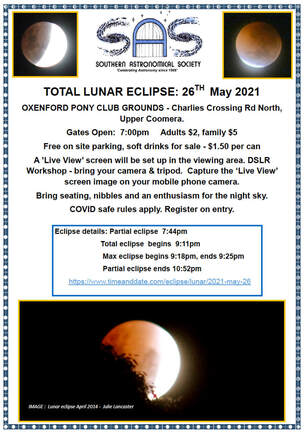 ~ Please click on flyer ~
~ Please click on flyer ~
This is the first total eclipse of the Moon to been seen here on the Gold Coast in Australia since 2018. Lunar eclipses are such wonderful celestial events to witness and completely safe to view through your binoculars or telescope.
This month’s full Moon is again special because it’s the second Super Moon or perigee Moon for the year, which means because of the Moon’s elliptical orbit around the Earth it’s much closer to our planet in distance.
For you to enjoy the event you’ll only need to go out into your own garden and look up at the Full Moon that will be to the south-eastern part of the sky, by the time the eclipse begins the Moon will be quite high up in the sky. You don’t need any fancy equipment to thoroughly enjoy this wonderful astronomical event, you can simply view the eclipse with your eyes or better still use a pair of binoculars, if you have a telescope than that’s even better, but it’s not a necessity.
A lunar eclipse is completely safe to view, as it’s reflected sunlight off the surface of the Moon, unlike a solar eclipse, which is very dangerous to look at with your eyes without proper solar glasses or filters. The whole event moves quite slowly and this eclipse lasts from beginning to end just over 5 hours…so you’ll have plenty of time to relax and enjoy the wonderful spectacle.
If you have children the best time to view the event will be from 8pm until 9.30pm that is when you will see the Moon in partial shadow and the stunning colours of the Moon in total eclipse :-)
What time will you see the Lunar Eclipse?
The beginning of the eclipse (AEST) (penumbral) begins at 6.46pm and by 7.45pm you’ll really start to see the eclipsed Moon moving into the Earths shadow.
By 9.10pm the Moon will be fully eclipsed with greatest eclipse (Totality) being at 9.19pm where you will see the darkest reddish/orange hue, total eclipse ends at 9.28pm. (Because the Moon will only make a shallow pass into the Earths shadow the lunar disc will remain quite bright along the northern limb)
After that, the eclipse all goes in reverse and takes another 2 hours for the Moon to move away from the Earths shadow, by 11.51pm a beautiful silvery full Moon will be back in our night sky.
If your taking images, you can use your longest telephoto lens with your camera on a tripod, and use a cable release (or timer) so you don’t touch the camera, also remember to manual focus. You’ll only need to take short exposures when the Moon is very bright in the early partial stages, but at full eclipse be prepared to take exposures for a few seconds, as there’s very little light on the surface of the Moon.
All lunar eclipses are different, it all depends how much dust, smoke or moisture is in the atmosphere that determines how dark or light the eclipsed Moon will look. The only reason we are seeing the Moon at all is because the Suns light is being refracted through the Earths atmosphere and shining onto the surface of the Moon while it's orbiting through the Earths shadow.
If you would like to go out and enjoy the lunar eclipse away from your home, you can find any one of the beautiful parks around the Gold Coast that have a clear sky to the north and take blankets and warm drinks to enjoy. If you have a sun shelter or tepee tent they are great for the little ones to lie down in while the older members enjoy the event.
Our Southern Astronomical Society (SAS) here on the Gold Coast is holding a public field night in the grounds of our meeting rooms at Oxenford starting at 7.00pm, please find the information below:
The Robina Library is also having a guest speaker with Professor Alan Duffy giving two talks on the Total Eclipse of the Moon on the afternoon and evening of the 26th May, one for children and one for adults please go to the What’s On at Gold Coast Libraries website to book at:
Afternoon event for children aged 10+ - https://new.goldcoast.qld.gov.au/libraries/Home?trumbaEmbed=view%3Devent%26eventid%3D152505875
Evening event for adults - https://new.goldcoast.qld.gov.au/libraries/Home?trumbaEmbed=view%3Devent%26eventid%3D152505158
Whatever way you decide to view the lunar eclipse, have lots of fun and enjoy this Amazing astronomical event, Noeleen :-)
~ For all things ‘Out Of This World’ presented by Gold Coast Libraries ~
Launch into Gold Coast Libraries these school holidays
For all things ‘Out Of This World’
6th to 16th April 2021
There are FREE space events and activities being held over these school holidays at Gold Coast Libraries for kids from 2 years to 12 years old.
As part of this exciting space event, presenter Noeleen Lowndes will deliver an astronomy experience for kids aged 7 years to 12 years. Noeleen is NASA’s SOC educator in Australia and a member of the Southern Astronomical Society on the Gold Coast.
Please go to the Gold Coast Libraries ‘What’s-on’ link below, as bookings to all events are essential:
https://new.goldcoast.qld.gov.au/libraries/Whats-on
Go deep into space with at-home resources and activities at:
https://new.goldcoast.qld.gov.au/libraries/Explore/Kids#panel-1-4
Astronomy & Space events for 7 -12 years
Destination to the planet Mars
Tuesday 6th April at Runaway Bay Library from 3.00pm to 3.45pm.
Our Amazing Moon
Tuesday 13th April at Nerang Library from 3.00pm to 3.45pm.
Starry Starry Night - How to learn the Night Sky
Friday 16th April at Elanora Library from 3.00pm to 3.45pm.
For all things ‘Out Of This World’
6th to 16th April 2021
There are FREE space events and activities being held over these school holidays at Gold Coast Libraries for kids from 2 years to 12 years old.
As part of this exciting space event, presenter Noeleen Lowndes will deliver an astronomy experience for kids aged 7 years to 12 years. Noeleen is NASA’s SOC educator in Australia and a member of the Southern Astronomical Society on the Gold Coast.
Please go to the Gold Coast Libraries ‘What’s-on’ link below, as bookings to all events are essential:
https://new.goldcoast.qld.gov.au/libraries/Whats-on
Go deep into space with at-home resources and activities at:
https://new.goldcoast.qld.gov.au/libraries/Explore/Kids#panel-1-4
Astronomy & Space events for 7 -12 years
Destination to the planet Mars
Tuesday 6th April at Runaway Bay Library from 3.00pm to 3.45pm.
Our Amazing Moon
Tuesday 13th April at Nerang Library from 3.00pm to 3.45pm.
Starry Starry Night - How to learn the Night Sky
Friday 16th April at Elanora Library from 3.00pm to 3.45pm.
Queensland Museum Presents World Science Festival
The Wonder of WHY? 24th – 28th March 2021
World Science Festival Brisbane kicks off today!
World Science Festival Brisbane 2021, proudly presented by Queensland Museum, will traverse an extraordinary science journey with a new and improved program.
But things are slightly different this year with more of the program available online, new live streaming options and more.
Explore the biggest questions in science with the world’s most curious minds from Wednesday 24 - Sunday 28 March. With more than 120 events, there is something for all curious minds at this year’s festival.
Go to website to download the program and to get tickets at:
https://www.worldsciencefestival.com.au/event-program/brisbane?
World Science Festival Brisbane 2021, proudly presented by Queensland Museum, will traverse an extraordinary science journey with a new and improved program.
But things are slightly different this year with more of the program available online, new live streaming options and more.
Explore the biggest questions in science with the world’s most curious minds from Wednesday 24 - Sunday 28 March. With more than 120 events, there is something for all curious minds at this year’s festival.
Go to website to download the program and to get tickets at:
https://www.worldsciencefestival.com.au/event-program/brisbane?
NASA Invites Public to Share Thrill of Mars Perseverance Rover Landing
NASA News: 13th February 2021
NASA is inviting the public to take part in virtual activities and events as the agency’s Mars 2020 Perseverance rover nears entry, descent, and landing on the Red Planet, with touchdown scheduled for approximately 3:55 p.m. EST Thursday, Feb. 18.
Live coverage and landing commentary from NASA’s Jet Propulsion Laboratory in Southern California will begin at 2:15 p.m. on the NASA TV Public Channeland the agency’s website, as well as the NASA App, YouTube, Twitter, Facebook, LinkedIn, Twitch, Daily Motion, and THETA.TV.
During landing, the rover will plunge through the thin Martian atmosphere at more than 12,000 mph (about 20,000 kph). A parachute and powered descent will slow the rover down to about 2 mph (3 kph). During what is known as the sky crane maneuver, the descent stage will lower the rover on three cables to land softly on six wheels at Jezero Crater.
Perseverance also is carrying a technology experiment – the Ingenuity Mars Helicopter – that will attempt the first powered, controlled flight on another planet.
“If there’s one thing we know, it’s that landing on Mars is never easy,” said NASA Associate Administrator for Communications Marc Etkind. “But as NASA’s fifth Mars rover, Perseverance has an extraordinary engineering pedigree and mission team. We are excited to invite the entire world to share this exciting event with us!”
NASA is offering many ways for the public to participate and stay up to date on landing information, mission highlights, and interaction opportunities.
To read more of this story and go to the many links please go to:
https://www.nasa.gov/press-release/nasa-invites-public-to-share-thrill-of-mars-perseverance-rover-landing
For more about Perseverance:
https://mars.nasa.gov/mars2020
and
https://nasa.gov/perseverance
For more about Ingenuity:
https://mars.nasa.gov/technology/helicopter
7 Minutes to Mars: NASA's Perseverance Rover Attempts Most Dangerous Landing Yet
All landings on Mars are difficult, but NASA's Perseverance rover is attempting to touch down in the most challenging terrain on Mars ever targeted.
The intense entry, descent, and landing phase, known as EDL, begins when the spacecraft reaches the top of the Martian atmosphere. Engineers have referred to the time it takes to land on Mars as the "seven minutes of terror."
The landing sequence is complex and targeting a location like Jezero Crater on Mars is only possible because of new landing technologies known as Range Trigger and Terrain-Relative Navigation.
The Perseverance rover is set to land on the surface of Mars on February 18, 2021.
Live coverage and landing commentary from NASA’s Jet Propulsion Laboratory in Southern California will begin at 2:15 p.m. on the NASA TV Public Channeland the agency’s website, as well as the NASA App, YouTube, Twitter, Facebook, LinkedIn, Twitch, Daily Motion, and THETA.TV.
During landing, the rover will plunge through the thin Martian atmosphere at more than 12,000 mph (about 20,000 kph). A parachute and powered descent will slow the rover down to about 2 mph (3 kph). During what is known as the sky crane maneuver, the descent stage will lower the rover on three cables to land softly on six wheels at Jezero Crater.
Perseverance also is carrying a technology experiment – the Ingenuity Mars Helicopter – that will attempt the first powered, controlled flight on another planet.
“If there’s one thing we know, it’s that landing on Mars is never easy,” said NASA Associate Administrator for Communications Marc Etkind. “But as NASA’s fifth Mars rover, Perseverance has an extraordinary engineering pedigree and mission team. We are excited to invite the entire world to share this exciting event with us!”
NASA is offering many ways for the public to participate and stay up to date on landing information, mission highlights, and interaction opportunities.
To read more of this story and go to the many links please go to:
https://www.nasa.gov/press-release/nasa-invites-public-to-share-thrill-of-mars-perseverance-rover-landing
For more about Perseverance:
https://mars.nasa.gov/mars2020
and
https://nasa.gov/perseverance
For more about Ingenuity:
https://mars.nasa.gov/technology/helicopter
7 Minutes to Mars: NASA's Perseverance Rover Attempts Most Dangerous Landing Yet
All landings on Mars are difficult, but NASA's Perseverance rover is attempting to touch down in the most challenging terrain on Mars ever targeted.
The intense entry, descent, and landing phase, known as EDL, begins when the spacecraft reaches the top of the Martian atmosphere. Engineers have referred to the time it takes to land on Mars as the "seven minutes of terror."
The landing sequence is complex and targeting a location like Jezero Crater on Mars is only possible because of new landing technologies known as Range Trigger and Terrain-Relative Navigation.
The Perseverance rover is set to land on the surface of Mars on February 18, 2021.
~ JPL What’s Up for February 2021 ~
Skywatching tips from NASA
What are some skywatching highlights in February 2021?
Find Mars all month after sunset, especially on the night of NASA's planned rover landing, Feb. 18.
Then watch the Moon glide across the Winter Circle before it pays a visit to the bright stars of the constellation Gemini.
Find Mars all month after sunset, especially on the night of NASA's planned rover landing, Feb. 18.
Then watch the Moon glide across the Winter Circle before it pays a visit to the bright stars of the constellation Gemini.
~ JPL What’s Up for January 2021 ~
Skywatching tips from NASA
What are some skywatching highlights in January 2021?
Mark Earth's closest approach to the Sun for the year, called perihelion, at the start of the month,
then spot a couple of elusive planets: Uranus on Jan. 20th and Mercury throughout the second half of the month.
Mark Earth's closest approach to the Sun for the year, called perihelion, at the start of the month,
then spot a couple of elusive planets: Uranus on Jan. 20th and Mercury throughout the second half of the month.
What’s up for December 2020
(NASA’s Jet Propulsion Laboratory)
What are some skywatching highlights in December 2020?
Catch the year's best meteor shower, the Geminids, in the middle of the month. Then witness an extremely close pairing of Jupiter and Saturn that won't be repeated for decades. And mark the shortest day of the year on the northern winter solstice.
Read more at:
https://solarsystem.nasa.gov/resources/2567/whats-up-december-2020-video/
Catch the year's best meteor shower, the Geminids, in the middle of the month. Then witness an extremely close pairing of Jupiter and Saturn that won't be repeated for decades. And mark the shortest day of the year on the northern winter solstice.
Read more at:
https://solarsystem.nasa.gov/resources/2567/whats-up-december-2020-video/
International Observe The Moon Night (InOMN) 2020
~ Saturday the 26th September 2020 ~
Because of Covit-19 a public event for InOMN will not be able to go ahead for this year but that still does not stop you or me from looking at the Moon and the night sky in your own home or safely with your family.
I will be going out to my Stardust Observatory at Leyburn to take some images of the Moon along with some pictures of Mars, Jupiter and Saturn and will post them on my Astroblog when I get back.
So go ahead log onto the InOMN website and download a Moon map and some activities on 10 ways to observe the Moon and enjoy a fantastic night…Happy Lunar Gazing, Noeleen Lowndes :-)
https://moon.nasa.gov/observe-the-moon-night/participate/10-ways-to-observe-the-moon/
I will be going out to my Stardust Observatory at Leyburn to take some images of the Moon along with some pictures of Mars, Jupiter and Saturn and will post them on my Astroblog when I get back.
So go ahead log onto the InOMN website and download a Moon map and some activities on 10 ways to observe the Moon and enjoy a fantastic night…Happy Lunar Gazing, Noeleen Lowndes :-)
https://moon.nasa.gov/observe-the-moon-night/participate/10-ways-to-observe-the-moon/
~ Countdown to NASA’s Mars 2020 Mission July 2020 ~
https://mars.nasa.gov/mars2020/timeline/launch/
Discover Mars at:
https://mars.nasa.gov
https://www.nasa.gov/perseverance
https://mars.nasa.gov/mars2020/
https://mars.nasa.gov
https://www.nasa.gov/perseverance
https://mars.nasa.gov/mars2020/
~ NASA's Mars Perseverance Rover Passes Flight Readiness Review ~
NASA JPL News: 22nd July 2020
The agency's Mars 2020 mission has one more big prelaunch review - the Launch Readiness Review, on July 27.
NASA's Mars 2020 Perseverance rover mission cleared its Flight Readiness Review Wednesday, an important milestone on its way to the launch pad. The meeting was an opportunity for the Mars 2020 team and launch vehicle provider United Launch Alliance to report on the readiness of the spacecraft, along with the Atlas V rocket, flight and ground hardware, software, personnel, and procedures.
The daily launch window on Thursday July 30 opens at 7:50 a.m. EDT
"Our deepest thanks go to the many teams who have worked so hard to get Perseverance ready to fly during these challenging times," said NASA Administrator Jim Bridenstine. "This mission is emblematic of our nation's spirit of meeting problems head-on and finding solutions together. The incredible science Perseverance will enable and the bold human missions it will help make possible are going to be inspirations for us all."
To read more of the story please goes to the link below:
https://www.jpl.nasa.gov/news/news.php?feature=7710
NASA's Mars 2020 Perseverance rover mission cleared its Flight Readiness Review Wednesday, an important milestone on its way to the launch pad. The meeting was an opportunity for the Mars 2020 team and launch vehicle provider United Launch Alliance to report on the readiness of the spacecraft, along with the Atlas V rocket, flight and ground hardware, software, personnel, and procedures.
The daily launch window on Thursday July 30 opens at 7:50 a.m. EDT
"Our deepest thanks go to the many teams who have worked so hard to get Perseverance ready to fly during these challenging times," said NASA Administrator Jim Bridenstine. "This mission is emblematic of our nation's spirit of meeting problems head-on and finding solutions together. The incredible science Perseverance will enable and the bold human missions it will help make possible are going to be inspirations for us all."
To read more of the story please goes to the link below:
https://www.jpl.nasa.gov/news/news.php?feature=7710
~ 7 Things to Know About the Mars 2020 Perseverance Rover Mission ~
NASA JPL News: July 8th 2020
NASA's next rover to the Red Planet is slated to launch no earlier than July 30. These highlights will get you up to speed on the ambitious mission.
In less than a month, NASA expects to launch the Mars 2020 Perseverance mission from Cape Canaveral, Florida. Loaded with scientific instruments, advanced computational capabilities for landing, and other new systems, the Perseverance rover is the largest, heaviest, most sophisticated vehicle NASA has ever sent to the Red Planet.
"Perseverance sets a new bar for our ambitions at Mars," said Lori Glaze, planetary science director at NASA Headquarters in Washington. "We will get closer than ever before to answering some of science's longest-standing questions about the Red Planet, including whether life ever arose there."
What drives Perseverance's mission and what will it do at the Red Planet? Here are seven things to know:
To read all about it please go to the link below:
https://www.jpl.nasa.gov/news/news.php?feature=7696
In less than a month, NASA expects to launch the Mars 2020 Perseverance mission from Cape Canaveral, Florida. Loaded with scientific instruments, advanced computational capabilities for landing, and other new systems, the Perseverance rover is the largest, heaviest, most sophisticated vehicle NASA has ever sent to the Red Planet.
"Perseverance sets a new bar for our ambitions at Mars," said Lori Glaze, planetary science director at NASA Headquarters in Washington. "We will get closer than ever before to answering some of science's longest-standing questions about the Red Planet, including whether life ever arose there."
What drives Perseverance's mission and what will it do at the Red Planet? Here are seven things to know:
To read all about it please go to the link below:
https://www.jpl.nasa.gov/news/news.php?feature=7696
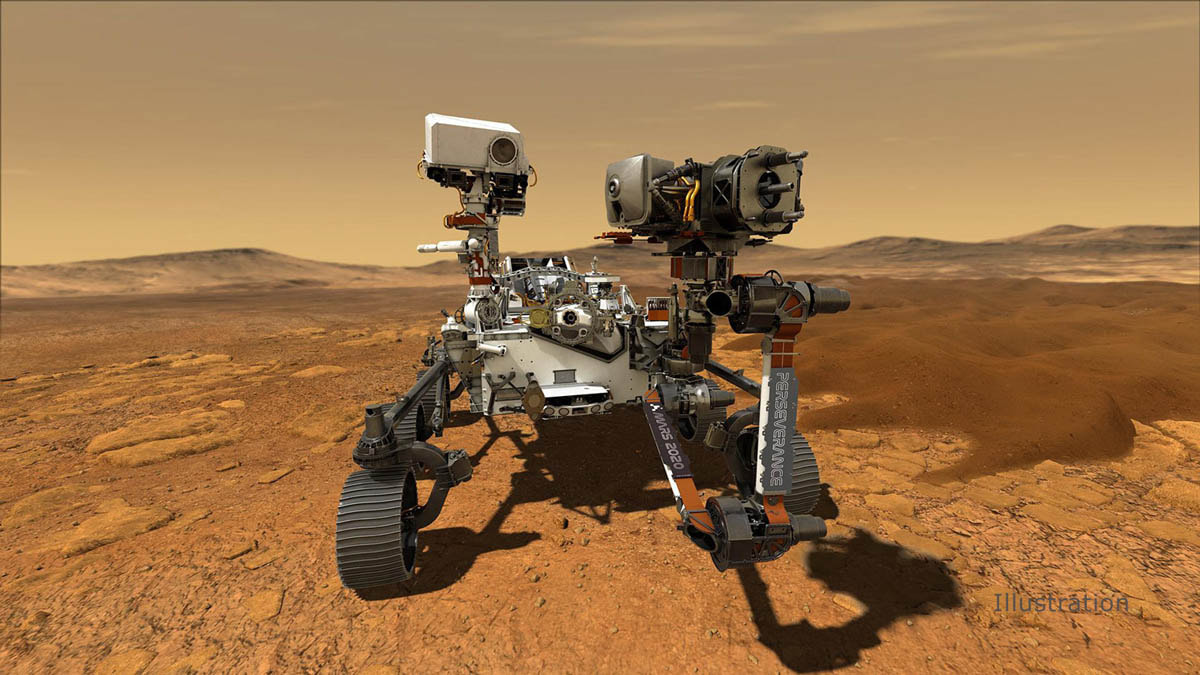
This illustration depicts NASA's Perseverance rover operating on the surface of Mars. Perseverance will land at the Red Planet's Jezero Crater a little after 3:40 p.m. EST (12:40 p.m. PST) on Feb. 18, 2021. For more information about the mission, go to https://mars.nasa.gov/mars2020/.Image Credit: NASA/JPL-Caltech
New Mission to Mars in 2020
~ Wow, this is truly amazing ~
NASA Mars Helicopter Ingenuity Animations
Quick Facts
- Mission Name: Mars 2020
- Rover Name: Perseverance
- Main Job: The Perseverance rover will seek signs of ancient life and collect rock and soil samples for possible return to Earth.
- Launch Window: July 30 - Aug. 15, 2020
- Launch Location: Cape Canaveral Air Force Station, Florida
- Landing: Feb. 18, 2021
- Landing Site: Jezero Crater, Mars
- Mission Duration: At least one Mars year (about 687 Earth days)
- Tech Demo: The Mars Helicopter is a technology demonstration, hitching a ride on the Perseverance rover.
- Fact Sheet
- Launch Press Kit
What's Up: July 2020 Skywatching Tips from NASA
NASA Jet Propulsion Laboratory
What are some skywatching highlights you can see in July 2020? Enjoy the giant planets Jupiter and Saturn with their moons, stay up late to spot Mars rising. Plus: what would you see stargazing on the Red Planet?
~ Stargazing at home during Covid-19 home isolation ~
~ May 2020 ~
There are many new things that we are now doing during this period of home isolation, why not have a special treat and go outside in your own garden and look up at the night sky. You will not be breaking any restrictions, and it could put a smile on everyone’s face :-)
There are just a few things you’ll need to do to make this a great adventure, so come along with me and I’ll show you how to have some fun learning about what wonders are out there in the night sky ready to be discovered!
First of all, you’ll want be comfortable, by that I mean dress to the conditions outside even if it’s warm at your location, after a while it can become quite cool so dress accordingly.
Second, make yourself comfy while observing; you may like to lay out some blankets or picnic rugs on the grass with lots of pillows so you all can relax and lie back to look up at the sky. If you have those outside lounges they are perfect. And don’t forget the personal insect spray, we have lots of mosquitoes here and they are very bitie!
Another thing you will need is light, just get ordinary torches and cut some red cellophane and wrap around the bulb end and attached with a rubber band, this gives off a soft red light that helps with light adaption for your eyes in seeing more of the stars out there in night sky and looking at your printed star charts.
If you have a pair of binoculars these are such a wonderful first astronomy instrument for looking closer at the Moon and Planets, also those fuzzy patches in the sky that turn out to be pretty star clusters or nebulae (areas where stars are being born or dying) a pair of 10x50mm are perfect.
Next, of course you must have snacks, if you are by yourself or are a couple how about some cheese and crackers with a glass of wine or maybe a cup of tea or coffee with cake, whatever makes YOU happy :-)
If you have children why not plan ahead and make some Star & Moon cookies served later with hot chocolate, now that will put a smile of the kids faces.
Another idea if you have children is to set up a small tent or beach Sun shelter with Stars and Moons hanging down inside, this will definitely be exciting and fun for the little ones and if they get tired they can have a nap so that everyone does not have to go inside.
Now to the real reason why we are outside in the garden, Um-hum, now what are we going to see and where do we look? Is there a Moon in the sky or a Planet that you can find, how do I know where North, South, East and West is? Here are few things that can help you…
First of all download a FREE star chart at Skymaps.com and either print it out for each member of your family or download the pdf file onto your mobile device or tablet at:
http://www.skymaps.com/downloads.html
(Please check that you download the correct map for where you live,
I live in the Southern Hemisphere so I download the Starmap for the Southern Hemisphere)
The next thing you can also do is download a FREE Planetarium App for your smart phone or tablet, the one I always recommend is called ‘Star Chart’ and it’s FREE at:
https://apps.apple.com/au/app/star-chart/id345542655
Other Astronomy Apps that are FREE are on an excellent review from The Weather Channel at: https://weloveweather.tv/top-6-astronomy-apps/
These Planetarium Apps are lots of fun and very educational as they track the sky as you move your device around the night sky, also they have a compass built in so it is showing you where North, South, East and West in the sky. (You can also use an ordinary compass for this, maybe another great time to teach your children how to use one)
Now that you are all set up with Starmaps, rugs, blankets, snacks…. lay back and enjoy the discoveries that you’ll find out there in your own back garden and have lots of fun :-)
If you are lucky enough and have a telescope hiding somewhere in the house, why don’t you go and find it so you can get some fantastic views of the Moon and Planets through the eyepiece!
If you really start to get interested in Astronomy and Space then I recommend that you find out if there is an Astronomy Club in your area, where you will find like-minded people who will help you with your new interest, my astronomy club here on the Gold Coast is the Southern Astronomical Society at: https://sas.org.au
If you would like to know more about this amazing universe then go to my Astrolinks page where you will find lots of links that will literally take you on a journey of discovery through the Universe at: http://www.mystardustobservatory.com/astro-links.html
I’ve also had the pleasure of being asked to do a TedX talk with the Helensvale Library on how I became an astronomer and how I learnt the night sky many years ago. You may like to view it hopefully it may inspire you and your family to spend more time under the night sky.
https://www.youtube.com/watch?v=KkaXnghax8c
I hope this may help you get started on a wonderful new journey of discovery, all you have to do is open up your door, walk outside and look up, it’s all there just waiting for you….
Happy stargazing everyone, stay safe and well during this very difficult time for our world.
Noeleen Lowndes in Australia
http://www.mystardustobservatory.co
There are just a few things you’ll need to do to make this a great adventure, so come along with me and I’ll show you how to have some fun learning about what wonders are out there in the night sky ready to be discovered!
First of all, you’ll want be comfortable, by that I mean dress to the conditions outside even if it’s warm at your location, after a while it can become quite cool so dress accordingly.
Second, make yourself comfy while observing; you may like to lay out some blankets or picnic rugs on the grass with lots of pillows so you all can relax and lie back to look up at the sky. If you have those outside lounges they are perfect. And don’t forget the personal insect spray, we have lots of mosquitoes here and they are very bitie!
Another thing you will need is light, just get ordinary torches and cut some red cellophane and wrap around the bulb end and attached with a rubber band, this gives off a soft red light that helps with light adaption for your eyes in seeing more of the stars out there in night sky and looking at your printed star charts.
If you have a pair of binoculars these are such a wonderful first astronomy instrument for looking closer at the Moon and Planets, also those fuzzy patches in the sky that turn out to be pretty star clusters or nebulae (areas where stars are being born or dying) a pair of 10x50mm are perfect.
Next, of course you must have snacks, if you are by yourself or are a couple how about some cheese and crackers with a glass of wine or maybe a cup of tea or coffee with cake, whatever makes YOU happy :-)
If you have children why not plan ahead and make some Star & Moon cookies served later with hot chocolate, now that will put a smile of the kids faces.
Another idea if you have children is to set up a small tent or beach Sun shelter with Stars and Moons hanging down inside, this will definitely be exciting and fun for the little ones and if they get tired they can have a nap so that everyone does not have to go inside.
Now to the real reason why we are outside in the garden, Um-hum, now what are we going to see and where do we look? Is there a Moon in the sky or a Planet that you can find, how do I know where North, South, East and West is? Here are few things that can help you…
First of all download a FREE star chart at Skymaps.com and either print it out for each member of your family or download the pdf file onto your mobile device or tablet at:
http://www.skymaps.com/downloads.html
(Please check that you download the correct map for where you live,
I live in the Southern Hemisphere so I download the Starmap for the Southern Hemisphere)
The next thing you can also do is download a FREE Planetarium App for your smart phone or tablet, the one I always recommend is called ‘Star Chart’ and it’s FREE at:
https://apps.apple.com/au/app/star-chart/id345542655
Other Astronomy Apps that are FREE are on an excellent review from The Weather Channel at: https://weloveweather.tv/top-6-astronomy-apps/
These Planetarium Apps are lots of fun and very educational as they track the sky as you move your device around the night sky, also they have a compass built in so it is showing you where North, South, East and West in the sky. (You can also use an ordinary compass for this, maybe another great time to teach your children how to use one)
Now that you are all set up with Starmaps, rugs, blankets, snacks…. lay back and enjoy the discoveries that you’ll find out there in your own back garden and have lots of fun :-)
If you are lucky enough and have a telescope hiding somewhere in the house, why don’t you go and find it so you can get some fantastic views of the Moon and Planets through the eyepiece!
If you really start to get interested in Astronomy and Space then I recommend that you find out if there is an Astronomy Club in your area, where you will find like-minded people who will help you with your new interest, my astronomy club here on the Gold Coast is the Southern Astronomical Society at: https://sas.org.au
If you would like to know more about this amazing universe then go to my Astrolinks page where you will find lots of links that will literally take you on a journey of discovery through the Universe at: http://www.mystardustobservatory.com/astro-links.html
I’ve also had the pleasure of being asked to do a TedX talk with the Helensvale Library on how I became an astronomer and how I learnt the night sky many years ago. You may like to view it hopefully it may inspire you and your family to spend more time under the night sky.
https://www.youtube.com/watch?v=KkaXnghax8c
I hope this may help you get started on a wonderful new journey of discovery, all you have to do is open up your door, walk outside and look up, it’s all there just waiting for you….
Happy stargazing everyone, stay safe and well during this very difficult time for our world.
Noeleen Lowndes in Australia
http://www.mystardustobservatory.co
What's Up: April 2020 Skywatching Tips from JPL at NASA
~ Venus & Pleiades Star Cluster conjunction 1st to the 5th April 2020 ~
We are going to have an exciting week viewing the bright planet Venus meeting up with the pretty Pleiades Star Cluster that’s currently positioned in the constellation of Taurus (The Bull).
I will post all the exciting images and sightings on my Astroblog at:
http://www.mystardustobservatory.com/astro-blog
I will post all the exciting images and sightings on my Astroblog at:
http://www.mystardustobservatory.com/astro-blog
Above you’ll find a Starmap for the Southern Hemisphere from SKymaps.com where you’ll see the planet Venus right down low on the western horizon, so all my images will be taken in a very light sky not long after sunset.
If you look out in your western sky at about 6pm you’ll see Venus blazing away in the twilight sky…it’s that bright!
To download your own higher resolution Skymap please go to Skymaps.com website,
remember to download the right Skymap for your latitude (position on Earth).
http://www.skymaps.com/downloads.html
If you look out in your western sky at about 6pm you’ll see Venus blazing away in the twilight sky…it’s that bright!
To download your own higher resolution Skymap please go to Skymaps.com website,
remember to download the right Skymap for your latitude (position on Earth).
http://www.skymaps.com/downloads.html
~ Venus Meets the Pleiades 2020 ~
From the Lowell Observatory 28th March 2020.
Once every 8 years, brilliant Venus appears to pass right through the renowned Pleiades star cluster.
This celestial meet up is called a conjunction, and it's the result of the geometries of our solar system. In this video, we'll go to the Giovale Open Deck Observatory at Lowell Observatory (https://lowell.edu/godo) to learn how to see this spectacular conjunction.
You can also join Lowell Observatory on Friday, April 3, 2020, for a live stream of this Venus-Pleiades Conjunction:
https://youtu.be/zW23N4-K1LU
This celestial meet up is called a conjunction, and it's the result of the geometries of our solar system. In this video, we'll go to the Giovale Open Deck Observatory at Lowell Observatory (https://lowell.edu/godo) to learn how to see this spectacular conjunction.
You can also join Lowell Observatory on Friday, April 3, 2020, for a live stream of this Venus-Pleiades Conjunction:
https://youtu.be/zW23N4-K1LU
Stardust Junior Astronomy Club 2020
~ RUNAWAY BAY LIBRARY ~
Lae Drive, Runaway Bay, Gold Coast QLD (Aged between 6 to 12 years old)
PLEASE NOTE: Due to all the Gold Coast City libraries being closed because of the Corona virus there will be no Stardust Club for many months.
Please still enjoy the wonderful night sky in your own garden and go to NASA’s Space Place website to find some fun space activities at: https://spaceplace.nasa.gov/
To download a Star map for the Southern Hemisphere, go to the Skymaps.com website at: http://www.skymaps.com/downloads.html
Please keep safe and well and I’ll see you all again soon, Happy Stargazing, Noeleen :-)
Please still enjoy the wonderful night sky in your own garden and go to NASA’s Space Place website to find some fun space activities at: https://spaceplace.nasa.gov/
To download a Star map for the Southern Hemisphere, go to the Skymaps.com website at: http://www.skymaps.com/downloads.html
Please keep safe and well and I’ll see you all again soon, Happy Stargazing, Noeleen :-)
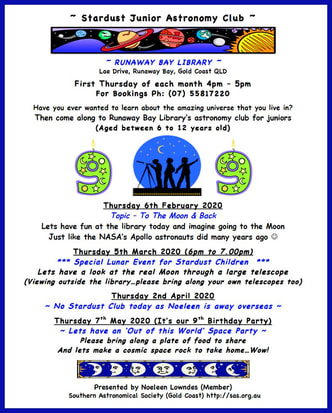
Thursday 6th February 2020
Topic – To The Moon & Back
Lets have fun at the library today and imagine going to the Moon
Just like the NASA’s Apollo astronauts did many years ago :-)
Thursday 5th March 2020 (6pm to 7.00pm)
*** Special Lunar Event for Stardust Children ***
Lets have a look at the real Moon through a large telescope
(Viewing outside the library…please bring along your own telescopes too)
Thursday 2nd April 2020
~ No Stardust Club today as Noeleen is away overseas ~
Thursday 7th May 2020 (It’s our 9th Birthday Party)
~ Lets have an ‘Out of this World’ Space Party ~
Please bring along a plate of food to share
And lets make a cosmic space rock to take home…Wow!
Presented by Noeleen Lowndes (Member)
Southern Astronomical Society (Gold Coast) http://sas.org.au
Topic – To The Moon & Back
Lets have fun at the library today and imagine going to the Moon
Just like the NASA’s Apollo astronauts did many years ago :-)
Thursday 5th March 2020 (6pm to 7.00pm)
*** Special Lunar Event for Stardust Children ***
Lets have a look at the real Moon through a large telescope
(Viewing outside the library…please bring along your own telescopes too)
Thursday 2nd April 2020
~ No Stardust Club today as Noeleen is away overseas ~
Thursday 7th May 2020 (It’s our 9th Birthday Party)
~ Lets have an ‘Out of this World’ Space Party ~
Please bring along a plate of food to share
And lets make a cosmic space rock to take home…Wow!
Presented by Noeleen Lowndes (Member)
Southern Astronomical Society (Gold Coast) http://sas.org.au
~ Star Wars Christmas Party ~
Thursday 5th December 2019 from 4pm – 5.30pm
~ Stardust Junior Astronomy Club ~
~ RUNAWAY BAY LIBRARY ~
Lae Drive, Runaway Bay, Gold Coast QLD
(Aged between 6 to 12 years old)
Dress up as your favourite character from Star Wars for a fun space party!
Please bring along a plate of food to share
Prizes for best dress and lucky door prize too :-)
Presented by Noeleen Lowndes
Southern Astronomical Society Member (Gold Coast)
http://sas.org.au
~ RUNAWAY BAY LIBRARY ~
Lae Drive, Runaway Bay, Gold Coast QLD
(Aged between 6 to 12 years old)
Dress up as your favourite character from Star Wars for a fun space party!
Please bring along a plate of food to share
Prizes for best dress and lucky door prize too :-)
Presented by Noeleen Lowndes
Southern Astronomical Society Member (Gold Coast)
http://sas.org.au
~ International Observe the Moon Night (InOMN) 2019 ~
Saturday the 5th October 2019
Calling all Luna-lovers
The Southern Astronomical Society is holding this year’s (InOmn) in support for the Tamborine Village Lions Club
At: Woodstock - Youth Enterprise Trust, 231 Plunkett Road, Tamborine 4270
Time: Gates open at 5:00 pm for setup, viewing from 6:00 pm - 9:00 pm
Gold coin entry donation appreciated
Sausage sizzle proceeds towards Tamborine Village Lions Clubs projects
Weather permitting – contact: 0431096511 / 0401217347
This is an annual event that is dedicated to encouraging people to ‘look up’ and take notice of our nearest neighbour, the Moon.
So Please come along and enjoy a wonderful night of lunar gazing :-)
View flyer below for more information and directions or click on link:
https://sas.org.au/events/international-observe-the-moon-night-2/
The Southern Astronomical Society is holding this year’s (InOmn) in support for the Tamborine Village Lions Club
At: Woodstock - Youth Enterprise Trust, 231 Plunkett Road, Tamborine 4270
Time: Gates open at 5:00 pm for setup, viewing from 6:00 pm - 9:00 pm
Gold coin entry donation appreciated
Sausage sizzle proceeds towards Tamborine Village Lions Clubs projects
Weather permitting – contact: 0431096511 / 0401217347
This is an annual event that is dedicated to encouraging people to ‘look up’ and take notice of our nearest neighbour, the Moon.
So Please come along and enjoy a wonderful night of lunar gazing :-)
View flyer below for more information and directions or click on link:
https://sas.org.au/events/international-observe-the-moon-night-2/
~ Stardust Junior Astronomy Club Meeting Dates from October to December 2019 ~
Runaway Bay Library on the 1st Thursday of each Month
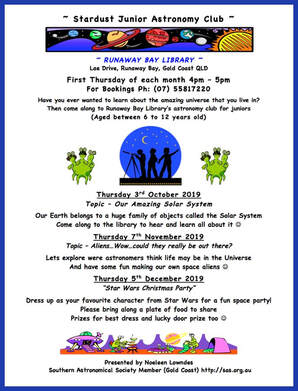 Stardust Dates to December 2019
Stardust Dates to December 2019
Meeting Date from October to December 2019
Thursday 3rd October 2019
Topic – Our Amazing Solar System
Our Earth belongs to a huge family of objects called the Solar System
Come along to the library to hear and learn all about it :-)
Thursday 7th November 2019
Topic – Aliens…Wow…could they really be out there?
Lets explore were astronomers think life may be in the Universe
And have some fun making our own space aliens
Thursday 5th December 2019
“Star Wars Christmas Party”
Dress up as your favourite character from Star Wars for a fun space party!
Please bring along a plate of food to share
Prizes for best dress and lucky door prize too :-)
Thursday 3rd October 2019
Topic – Our Amazing Solar System
Our Earth belongs to a huge family of objects called the Solar System
Come along to the library to hear and learn all about it :-)
Thursday 7th November 2019
Topic – Aliens…Wow…could they really be out there?
Lets explore were astronomers think life may be in the Universe
And have some fun making our own space aliens
Thursday 5th December 2019
“Star Wars Christmas Party”
Dress up as your favourite character from Star Wars for a fun space party!
Please bring along a plate of food to share
Prizes for best dress and lucky door prize too :-)
~ NASA 50th Anniversary of Apollo 11 from 20th July 1969 – 20th July 2019 ~
~ Please click the link below to got to NASA's dedicated website on Apollo 11 ~
https://www.nasa.gov/specials/apollo50th/index.html
https://www.nasa.gov/specials/apollo50th/index.html
NASA Celebrates 50th Anniversary of Historic Moon Landing
With Live TV Broadcast & Events
~ It’s NASA’s countdown to celebrate 50th Anniversary of Apollo’s 11 lunar landing ~
NASA will celebrate the 50th anniversary of the historic Apollo 11 Moon mission and look to the future of exploration on the Moon and Mars with a live, two-hour television broadcast Friday, July 19, and partner-led events taking place across the country from July 16 through July 20.
On July 16, 1969, astronauts Neil Armstrong, Buzz Aldrin and Michael Collins lifted off from Launch Pad 39A at NASA’s Kennedy Space Center in Florida on a journey to the Moon and into history. Four days later, while Collins orbited the Moon in the command module, Armstrong and Aldrin landed Apollo 11’s lunar module, Eagle, on the Moon’s Sea of Tranquility, becoming the first humans to set foot on the lunar surface.
NASA Celebrates 50th Anniversary of Historic Moon Landing with Live TV Broadcast & Events.
Please go to the links below to find out all about the exciting events:
https://www.nasa.gov/press-release/nasa-adds-events-to-celebration-of-50th-anniversary-of-historic-moon-landing
https://www.nasa.gov/press-release/nasa-celebrates-50th-anniversary-of-historic-moon-landing-with-live-tv-broadcast
NASA will celebrate the 50th anniversary of the historic Apollo 11 Moon mission and look to the future of exploration on the Moon and Mars with a live, two-hour television broadcast Friday, July 19, and partner-led events taking place across the country from July 16 through July 20.
On July 16, 1969, astronauts Neil Armstrong, Buzz Aldrin and Michael Collins lifted off from Launch Pad 39A at NASA’s Kennedy Space Center in Florida on a journey to the Moon and into history. Four days later, while Collins orbited the Moon in the command module, Armstrong and Aldrin landed Apollo 11’s lunar module, Eagle, on the Moon’s Sea of Tranquility, becoming the first humans to set foot on the lunar surface.
NASA Celebrates 50th Anniversary of Historic Moon Landing with Live TV Broadcast & Events.
Please go to the links below to find out all about the exciting events:
https://www.nasa.gov/press-release/nasa-adds-events-to-celebration-of-50th-anniversary-of-historic-moon-landing
https://www.nasa.gov/press-release/nasa-celebrates-50th-anniversary-of-historic-moon-landing-with-live-tv-broadcast
The European Southern Observatory’s live broadcast Concludes; AMAZING!
ESOcast 204 Light: La Silla Total Solar Eclipse Concludes
On 2 July 2019 a total solar eclipse was visible from ESO’s La Silla Observatory in Chile. 1000 people came from around the world for the chance to view this amazing event in an equally amazing place. These visitors saw the Moon cover the Sun completely, briefly turning day into night — a rare event that La Silla won’t see again until 2231.
~ ESO & NASA to Livestream South America Total Solar Eclipse 2nd July 2019 ~
NASA has partnered with the Exploratorium in San Francisco to bring live views to people across the world of a total solar eclipse,
occurring Tuesday, July 2, over South America.
The eclipse will only be visible directly to observers within the path of totality, which stretches across parts of Chile and Argentina.
NASA Live:
https://www.nasa.gov/nasalive
Live webcasting for Total Solar Eclipse 2019 at La Silla
https://www.eso.org/public/
https://www.eso.org/public/live/
This brings me back to our own Australian total eclipse of the Sun that we had here in Queensland on the 14th November 2012 where I took many beautiful images on at Ellis Beach north of Cairns of the eclipse…so I’m going to include one of my images here :-)
occurring Tuesday, July 2, over South America.
The eclipse will only be visible directly to observers within the path of totality, which stretches across parts of Chile and Argentina.
NASA Live:
https://www.nasa.gov/nasalive
Live webcasting for Total Solar Eclipse 2019 at La Silla
https://www.eso.org/public/
https://www.eso.org/public/live/
This brings me back to our own Australian total eclipse of the Sun that we had here in Queensland on the 14th November 2012 where I took many beautiful images on at Ellis Beach north of Cairns of the eclipse…so I’m going to include one of my images here :-)
We also flew all the way to the USA on the 17th August 2017 for there spectacular solar eclipse, but the US state that we were in was clouded out. But you could still enjoy the darkness of the eclipse but not the spectacle…Ahhh to be an eclipse chaser; you have to take the ups with the downs!
http://www.mystardustobservatory.com/astro-blog/-the-great-american-solar-eclipse-at-st-joseph-in-missouri
http://www.mystardustobservatory.com/astro-blog/-the-great-american-solar-eclipse-at-st-joseph-in-missouri
~ Stardust Junior Astronomy Club Meeting Dates from July to September 2019 ~
Runaway Bay Library on the 1st Thursday of each Month
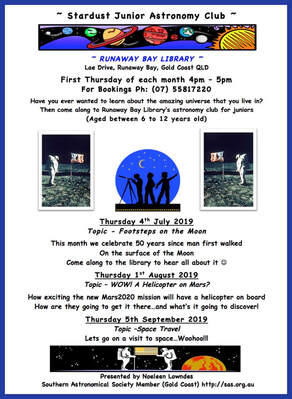
Meeting Date from July to September 2019
Thursday 4th July 2019
Topic - Footsteps on the Moon
This month we celebrate 50 years since man first walked
On the surface of the Moon
Come along to the library to hear all about it :-)
Thursday 1st August 2019
Topic – WOW! A Helicopter on Mars?
How exciting the new Mars2020 mission will have a helicopter on board
How are they going to get it there…and what’s it going to discover!
Thursday 5th September 2019
Topic –Space Travel
Lets go on a visit to space…Woohoo!!!
Thursday 4th July 2019
Topic - Footsteps on the Moon
This month we celebrate 50 years since man first walked
On the surface of the Moon
Come along to the library to hear all about it :-)
Thursday 1st August 2019
Topic – WOW! A Helicopter on Mars?
How exciting the new Mars2020 mission will have a helicopter on board
How are they going to get it there…and what’s it going to discover!
Thursday 5th September 2019
Topic –Space Travel
Lets go on a visit to space…Woohoo!!!
~ Send Your Name to Mars on NASA’s new Mars 2020 mission ~
NASA's Mars 2020 Rover is heading to the Red Planet.
Submit your name by Sept. 30, 2019, 11:59 p.m. ET, and fly along!
Submit your name by Sept. 30, 2019, 11:59 p.m. ET, and fly along!
https://mars.nasa.gov/participate/send-your-name/mars2020/
https://mars.nasa.gov/participate/send-your-name/learn
https://mars.nasa.gov/mars2020
https://mars.nasa.gov/participate/send-your-name/learn
https://mars.nasa.gov/mars2020
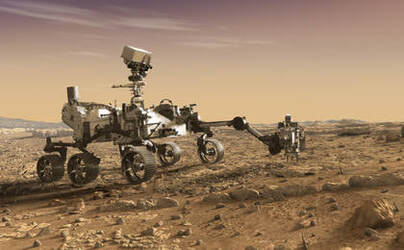
~ Mars 2020 Mission Facts ~
Launch Window
July 17 - Aug. 5, 2020
Launch Location
Cape Canaveral Air Force Station, Florida
Landing
Feb. 18, 2021
Landing Site
Jezero Crater, Mars
Mission Duration
At least one Mars year (about 687 Earth days)
~ Mars 2020 Mission Facts ~
Launch Window
July 17 - Aug. 5, 2020
Launch Location
Cape Canaveral Air Force Station, Florida
Landing
Feb. 18, 2021
Landing Site
Jezero Crater, Mars
Mission Duration
At least one Mars year (about 687 Earth days)
~ Runaway Bay Shopping Centre Easter Stardust Club ~
April 10th & April 15th 2019
Have you ever wanted to learn all about this amazing Universe that you live in?
Runaway Bay Shopping Centre is hosting fun Astronomy and Space talks and activities over the Easter holidays.
When: Wednesday the 10th April, 2pm – 3pm
When: Monday the 15th April, 2pm – 3pm
Location: Community Room near Woolworths.
Ages 6 – 12 years.
Bookings essential. Book at the Customer Service Desk outside BigW.
Presented by Noeleen Lowness the co-ordinator of the Stardust Junior Astronomy Club at the Runaway Bay Library
Member from the Southern Astronomical Society on the Gold Coast.
Runaway Bay Shopping Centre is hosting fun Astronomy and Space talks and activities over the Easter holidays.
When: Wednesday the 10th April, 2pm – 3pm
When: Monday the 15th April, 2pm – 3pm
Location: Community Room near Woolworths.
Ages 6 – 12 years.
Bookings essential. Book at the Customer Service Desk outside BigW.
Presented by Noeleen Lowness the co-ordinator of the Stardust Junior Astronomy Club at the Runaway Bay Library
Member from the Southern Astronomical Society on the Gold Coast.
NASA’s ‘A Human Adventure’ Exhibition at QLD Museum in BRISBANE
From the 15th March 2019 to 9th October 2019.
This is a Must See! NASA – A Human Adventure is a thrilling journey through humankind’s exploration of space.
Please go to the QLD Museum website for all the information at:
https://www.qm.qld.gov.au
Please go to the QLD Museum website for all the information at:
https://www.qm.qld.gov.au
~ World Science Festival Brisbane 20th to 24th March 2019 ~
Presented by Queensland Museum
~ WORLD SCIENCE FESTIVAL BRISBANE ~
Hailed by The New York Times as ‘a new cultural institution’, the World Science Festival – founded by renowned Physicist Professor Brian Greene and Emmy award-winning journalist Tracy Day – has been held annually in New York for more than a decade.
World Science Festival explores and celebrates the entanglement of science and art through a curated program of thought-provoking conversations, inspiring theatrical and cinematic experiences, interactive workshops and engaging demonstrations.
Queensland Museum Network has secured the exclusive licence to host World Science Festival in the Asia Pacific from 2016-21.
The only global extension of this hugely popular initiative, World Science Festival Brisbane reinforces Queensland Museum’s position as a leader in Science, Technology, Engineering and Mathematics (STEM) education and engagement.
To see the full list of the festival program, please go to:
http://www.worldsciencefestival.com.au/2019-festival-program/
Hailed by The New York Times as ‘a new cultural institution’, the World Science Festival – founded by renowned Physicist Professor Brian Greene and Emmy award-winning journalist Tracy Day – has been held annually in New York for more than a decade.
World Science Festival explores and celebrates the entanglement of science and art through a curated program of thought-provoking conversations, inspiring theatrical and cinematic experiences, interactive workshops and engaging demonstrations.
Queensland Museum Network has secured the exclusive licence to host World Science Festival in the Asia Pacific from 2016-21.
The only global extension of this hugely popular initiative, World Science Festival Brisbane reinforces Queensland Museum’s position as a leader in Science, Technology, Engineering and Mathematics (STEM) education and engagement.
To see the full list of the festival program, please go to:
http://www.worldsciencefestival.com.au/2019-festival-program/
~ Stardust Junior Astronomy Club at the Runaway Bay Library for 2019 ~
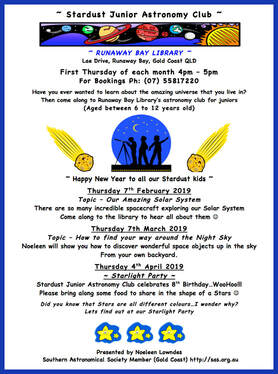 ~ Stardates dates to April 2019 ~
~ Stardates dates to April 2019 ~
~ Stardust Junior Astronomy Club at the Runaway Bay Library for 2019 ~
Happy New Year to all our budding little astronomers from the Stardust Junior Astronomy Club, we have another thrilling year ahead of us in learning all about this amazing universe that we live in and hearing all about the exciting exploration of our Solar System by the different space agencies from around the world.
It’s not only NASA now soaring ahead with discoveries, but also Europe’s (ESA), Japan’s (JAXA) and of course now China (CASC) which has just recently landed a spacecraft with a Rover on the far side of the Moon.
Wow, so many things happening out there in space and all the children that come to the Stardust club will hear all about it.
We will be celebrating our 8th year this year…WooHoo, thank you to all the ladies at the Runaway Bay Library especially Denise Donnelly, for supporting this wonderful astronomy club for the children as part of my education and outreach for our Southern Astronomical Society here on the Gold Coast :-)
Please go to the link below for all future dates for the Stardust Club:
http://www.mystardustobservatory.com/stardust-astronomy-club.html
Happy New Year to all our budding little astronomers from the Stardust Junior Astronomy Club, we have another thrilling year ahead of us in learning all about this amazing universe that we live in and hearing all about the exciting exploration of our Solar System by the different space agencies from around the world.
It’s not only NASA now soaring ahead with discoveries, but also Europe’s (ESA), Japan’s (JAXA) and of course now China (CASC) which has just recently landed a spacecraft with a Rover on the far side of the Moon.
Wow, so many things happening out there in space and all the children that come to the Stardust club will hear all about it.
We will be celebrating our 8th year this year…WooHoo, thank you to all the ladies at the Runaway Bay Library especially Denise Donnelly, for supporting this wonderful astronomy club for the children as part of my education and outreach for our Southern Astronomical Society here on the Gold Coast :-)
Please go to the link below for all future dates for the Stardust Club:
http://www.mystardustobservatory.com/stardust-astronomy-club.html
NASA Successfully Lands InSight on Mars...Amazing!
(November 27, 2018)
NASA's Interior Exploration using Seismic Investigations, Geodesy and Heat Transport (InSight) lander successfully touched down on the Red Planet after an almost seven-month, 300-million-mile (458-million-kilometer) journey from Earth.
"We hit the Martian atmosphere at 12,300 mph (19,800 kilometers per hour), and the whole sequence to touching down on the surface took only six-and-a-half minutes," said InSight project manager Tom Hoffman at NASA’s Jet Propulsion Laboratory. "During that short span of time, InSight had to autonomously perform dozens of operations and do them flawlessly – and by all indications that is exactly what our spacecraft did."
InSight will operate on the surface for one Martian year, plus 40 Martian days, or sols, until Nov. 24, 2020. The mission objectives of the two small MarCOs which relayed InSight's telemetry was completed after their Martian flyby.
https://mars.nasa.gov
"We hit the Martian atmosphere at 12,300 mph (19,800 kilometers per hour), and the whole sequence to touching down on the surface took only six-and-a-half minutes," said InSight project manager Tom Hoffman at NASA’s Jet Propulsion Laboratory. "During that short span of time, InSight had to autonomously perform dozens of operations and do them flawlessly – and by all indications that is exactly what our spacecraft did."
InSight will operate on the surface for one Martian year, plus 40 Martian days, or sols, until Nov. 24, 2020. The mission objectives of the two small MarCOs which relayed InSight's telemetry was completed after their Martian flyby.
https://mars.nasa.gov
Did you Sent Your Name to Mars!
If you did, then you are landing on the dusty red planet in just a few days time…Yay!
To check your name if you ‘Sent Your Name To Mars’
https://mars.nasa.gov/participate/send-your-name/insight/
https://mars.nasa.gov/participate/send-your-name/insight/
NASA InSight Team on Course for Mars Touchdown
NASA NEWS: November 21, 2018
NASA's Mars Interior Exploration using Seismic Investigations, Geodesy and Heat Transport (InSight) spacecraft is on track for a soft touchdown on the surface of the Red Planet on Nov. 26, the Monday after Thanksgiving.
But it's not going to be a relaxing weekend of turkey leftovers, football and shopping for the InSight mission team.
Engineers will be keeping a close eye on the stream of data indicating InSight's health and trajectory, and monitoring Martian weather reports to figure out if the team needs to make any final adjustments in preparation for landing, only five days away.
To read more of this news report from NASA please goes to link below:
https://mars.nasa.gov/news/8389/nasa-insight-team-on-course-for-mars-touchdown/?site=insight
But it's not going to be a relaxing weekend of turkey leftovers, football and shopping for the InSight mission team.
Engineers will be keeping a close eye on the stream of data indicating InSight's health and trajectory, and monitoring Martian weather reports to figure out if the team needs to make any final adjustments in preparation for landing, only five days away.
To read more of this news report from NASA please goes to link below:
https://mars.nasa.gov/news/8389/nasa-insight-team-on-course-for-mars-touchdown/?site=insight
Hold on tight, InSight ready to land on Mars …WooHoo!
NASA News: October 31, 2018
When NASA’s InSight descends to the Red Planet on Nov. 26, 2018, it is guaranteed to be a white-knuckle event.
Rob Manning, chief engineer at NASA’s Jet Propulsion Laboratory, explains the critical steps that must happen in perfect sequence to get the robotic lander safely to the surface. Credit NASA/JPL-Caltech
When NASA’s InSight descends to the Red Planet on Nov. 26, 2018, it is guaranteed to be a white-knuckle event.
Rob Manning, chief engineer at NASA’s Jet Propulsion Laboratory, explains the critical steps that must happen in perfect sequence to get the robotic lander safely to the surface. Credit NASA/JPL-Caltech
Mars InSight Spacecraft Entry, Descent and Landing
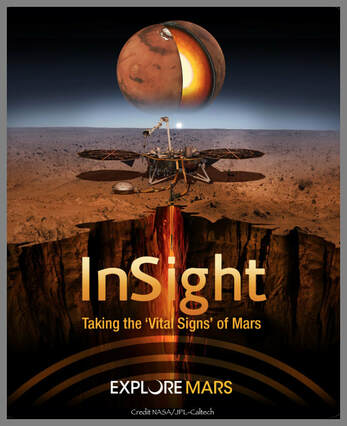
NASA News: October 26, 2018
InSight is short for Interior Exploration using Seismic Investigations, Geodesy and Heat Transport. The mission is the first outer space explorer to study the “inner space” of Mars.
The lander probes deep beneath the surface of Mars to study the fingerprints of the processes that first formed the rocky planets of our solar system.
Entry, descent, and landing (EDL) begins when the spacecraft reaches the Martian atmosphere, about 80 miles (about 128 kilometers) above the surface, and ends with the lander safe and sound on the surface of Mars six minutes later.
JPL, a division of Caltech in Pasadena, California, manages InSight for NASA's Science Mission Directorate in Washington. InSight is part of NASA's Discovery Program, managed by the agency's Marshall Space Flight Center in Huntsville, Alabama. The InSight spacecraft, including its cruise stage and lander, was built and tested by Lockheed Martin Space in Denver.
For more information about the mission, go to: https://mars.nasa.gov/insight.
Credit NASA/JPL-Caltech
InSight is short for Interior Exploration using Seismic Investigations, Geodesy and Heat Transport. The mission is the first outer space explorer to study the “inner space” of Mars.
The lander probes deep beneath the surface of Mars to study the fingerprints of the processes that first formed the rocky planets of our solar system.
Entry, descent, and landing (EDL) begins when the spacecraft reaches the Martian atmosphere, about 80 miles (about 128 kilometers) above the surface, and ends with the lander safe and sound on the surface of Mars six minutes later.
JPL, a division of Caltech in Pasadena, California, manages InSight for NASA's Science Mission Directorate in Washington. InSight is part of NASA's Discovery Program, managed by the agency's Marshall Space Flight Center in Huntsville, Alabama. The InSight spacecraft, including its cruise stage and lander, was built and tested by Lockheed Martin Space in Denver.
For more information about the mission, go to: https://mars.nasa.gov/insight.
Credit NASA/JPL-Caltech
~ International Observe the Moon Night (InOMN) for 2018 ~
~ Southern Astronomical Society Event for InOMN 2018 ~
The International Observe the Moon Night is being held on
Saturday, 20 October at ‘Woodstock’, 231 Plunkett Rd Tamborine in QLD.
Come along and enjoy a wonderful night looking at our beautiful Moon :-)
Please see flyer below for all information:
Saturday, 20 October at ‘Woodstock’, 231 Plunkett Rd Tamborine in QLD.
Come along and enjoy a wonderful night looking at our beautiful Moon :-)
Please see flyer below for all information:
International Observe the Moon Night is a worldwide celebration of lunar science and exploration held annually since 2010.
One day each year, everyone on Earth is invited to observe and learn about the Moon together, and to celebrate the cultural and personal connections we all have with our nearest neighbour.
https://moon.nasa.gov/observe-the-moon/annual-event/overview/
One day each year, everyone on Earth is invited to observe and learn about the Moon together, and to celebrate the cultural and personal connections we all have with our nearest neighbour.
https://moon.nasa.gov/observe-the-moon/annual-event/overview/
~ Saturn in the Park ~
Saturday the 15th September 2018
*Saturday the 15th September from 6.00 p.m. to 9.30 p.m.*
Come along for a FREE viewing of the magnificent planets
Saturn, Jupiter and Mars in our night sky
‘Esplanade North Park’ The Esplanade at Paradise Point
(Opposite Mallard Ave on the beachfront)
Members from the Southern Astronomical Society
Invite you and your family to come view the magnificent planets
Saturn & Jupiter, the Moon & other celestial objects in the night sky through our large telescopes.
*** Unfortunately if the weather is cloudy the event will be cancelled ***
Come along for a FREE viewing of the magnificent planets
Saturn, Jupiter and Mars in our night sky
‘Esplanade North Park’ The Esplanade at Paradise Point
(Opposite Mallard Ave on the beachfront)
Members from the Southern Astronomical Society
Invite you and your family to come view the magnificent planets
Saturn & Jupiter, the Moon & other celestial objects in the night sky through our large telescopes.
*** Unfortunately if the weather is cloudy the event will be cancelled ***
~ Missions to Mars & Saturn presented by Noeleen Lowndes for Science Week 2018 ~
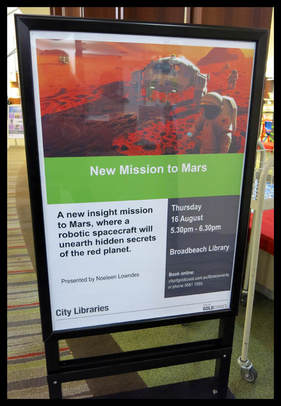
You are invited to come along to the Broadbeach Library on the Gold Coast for a presentation on NASA’s long time exploration of the red planet Mars and a update on the Cassini mission to Saturn.
Thursday the 16th August 2018 from 5.30pm – 6.30pm Q&A to 7-00pm
Please book online at: http://goldcoast.evanced.info/eventcalendar.asp
Or phone 07 55811555
The latest mission to Mars is called InSight and the spacecraft will arrive at the planet
on the 26th November 2018.
To find out more about NASA’s amazing missions to Mars please go to:
https://mars.nasa.gov
Noeleen will also give you an update on the Cassini-Huygens spacecraft that ended its 14-year mission at Saturn last September by spectacularly crashing into the dense atmosphere of the planet where the spacecraft disintegrated!
Noeleen is a lifetime member of the Southern Astronomical Society here on the Gold Coast &
NASA’s Saturn Observation Campaign Member here in Australia for the past 15 years.
http://sas.org.au
https://saturn.jpl.nasa.gov
~ Out of this world Star Stuff 11 astronomy & space event in July 2018 at Bryon Bay ~
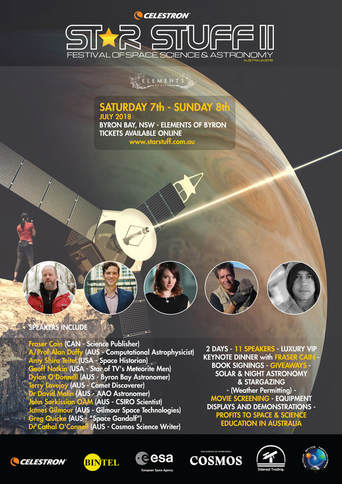
On Saturday the 7th and Sunday the 8th July 2018
~ At Elements of Bryon Resort, Bryon Bay NSW ~
The Southern Astronomical Society supports Star Stuff 11
After the incredible successful Star Stuff cosmic event of last year, SAS member Dylan O’Donnell has been working very hard to repeat this outstanding astronomical event again for this year, and our astronomy club is very proud to be supporting him with this inspiring ‘Festival of the Cosmos’.
You only have to look at the remarkable line-up of the astronomy and science keynote speakers that are attending to get a feel that this is an astronomical event that you don’t want to miss!
On the weekend there will be three renowned international guests attending, Fraser Cain (University Today) Geoff Notkin (Meteorite Expert) and Amy Shira Teitel (Space Historian).
Other renowned guests will be Dr Alan Duffy (Swinburne/ABC) Dr David Malin (AAO), Dr Cathal O’Connell (Cosmos Magazine) comet discover Terry Lovejoy, John Sarkissian (CSIRO), Greg Quicke aka “Space Gandalf”, Gilmour Space Technologies
and our own local astronomer Dylan O’Donnell.
There will also be on site daytime solar viewings through dedicated solar telescopes and night-time viewing through large telescopes kindly provided by members from the Southern Astronomical Society (weather permitting)
If you are thinking about buying a telescope or any other astronomical equipment, vendors from Celestron and Bintel
will be on site to help with all your enquiries.
There will also be other astronomical related retailers attending to tempt you into buying some new astro goodies :-)
This is a weekend not to be missed with the general admission tickets, at just $129 (AUD),
which includes 10 sessions over the two days, plus solar and night time viewings (weather permitting).
The VIP ticket, which costs $259, which includes 10 sessions over the two days, plus solar and night-time viewings (weather permitting).
It also includes the special VIP dinner with Fraser Cain as the guest speaker for the evening.
As an added bonus, every VIP ticket will go into the draw to win a Celestron Evolution 6 Computerised Telescope worth $2400 (AUD)
and the winner will be drawn at the dinner…what a wonderful prize!
To book your tickets please go to the ‘Star Stuff 11' website at: https://starstuff.com.au
Fraser Cain YouTube video to welcome you to the Star Stuff event at: https://www.youtube.com/watch?time_continue=43&v=81fzKCFMt_8
Some wonderful images above from last years event for Star Stuff1...everyone had an awesome weekend of astronomy and space :-)
NASA’s InSight spacecraft to Mars is about to launch!
NASA Press release 5th May 2018
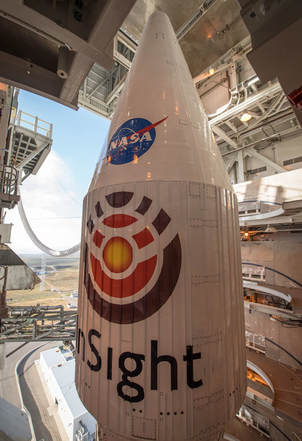
~ All systems are go for NASA’s next launch to the Red Planet ~
Please go to the NASA websites to view the launch at:
https://mars.nasa.gov/insight/
https://www.nasa.gov
https://www.nasa.gov/nasalive
Saturday's early-morning liftoff of the InSight Mars lander will mark the first time an interplanetary launch has originated from the West Coast. InSight is scheduled to launch from Vandenberg Air Force Base Space Launch Complex 3E on May 5, during a two-hour launch window opening at 4:05 a.m. PDT (7:05 a.m. EDT).
InSight, for Interior Exploration using Seismic Investigations, Geodesy and Heat Transport, will launch aboard a United Launch Alliance Atlas V rocket on a journey to study the deep interior of Mars to learn how all rocky planets formed, including Earth and its Moon.
The lander's instruments include a seismometer to detect marsquakes, and a probe that will monitor the flow of heat from the planet's interior.
In this image from May 3, 2018, United Launch Alliance (ULA) Atlas V rocket is seen with NASA's InSight spacecraft onboard.
Please go to the NASA websites to view the launch at:
https://mars.nasa.gov/insight/
https://www.nasa.gov
https://www.nasa.gov/nasalive
Saturday's early-morning liftoff of the InSight Mars lander will mark the first time an interplanetary launch has originated from the West Coast. InSight is scheduled to launch from Vandenberg Air Force Base Space Launch Complex 3E on May 5, during a two-hour launch window opening at 4:05 a.m. PDT (7:05 a.m. EDT).
InSight, for Interior Exploration using Seismic Investigations, Geodesy and Heat Transport, will launch aboard a United Launch Alliance Atlas V rocket on a journey to study the deep interior of Mars to learn how all rocky planets formed, including Earth and its Moon.
The lander's instruments include a seismometer to detect marsquakes, and a probe that will monitor the flow of heat from the planet's interior.
In this image from May 3, 2018, United Launch Alliance (ULA) Atlas V rocket is seen with NASA's InSight spacecraft onboard.
~ Send your name to the Sun on NASA’s new Parker Solar Probe ~
By the 27th April 2018
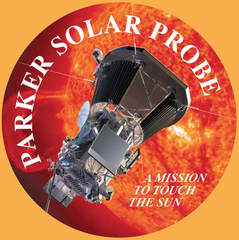 Click on patch to go to Mission website
Click on patch to go to Mission website
NASA invites you to come along on one of the hottest rides ever by sending your name to the Sun on board The Parker Solar Probe, all names will be on a microchip which will be placed on board the spacecraft during its amazing journey to the Sun.
The spacecraft is scheduled to launch on July 31 aboard a Delta IV rocket, but the launch window will be from July 31st to August 19th 2018 from Cape Canaveral in Florida.
The Parker Solar Probe will provide new data on solar activity and make critical contributions to our ability to forecast major space-weather events that impact life on Earth.
The spacecraft, designed and built by the Johns Hopkins University Applied Physics Laboratory and managed by NASA, will fly around Venus seven times to get itself into orbit around the Sun in December 2024.
So what are you waiting for, this will be the closest you’ll ever get to our living Star, the Sun…so have fun and get yourself a ticket so your name can come along for the ride, I did :-)
https://www.nasa.gov/feature/goddard/2018/public-invited-to-come-aboard-nasa-s-first-mission-to-touch-the-sun
http://parkersolarprobe.jhuapl.edu/The-Mission/Name-to-Sun/
The spacecraft is scheduled to launch on July 31 aboard a Delta IV rocket, but the launch window will be from July 31st to August 19th 2018 from Cape Canaveral in Florida.
The Parker Solar Probe will provide new data on solar activity and make critical contributions to our ability to forecast major space-weather events that impact life on Earth.
The spacecraft, designed and built by the Johns Hopkins University Applied Physics Laboratory and managed by NASA, will fly around Venus seven times to get itself into orbit around the Sun in December 2024.
So what are you waiting for, this will be the closest you’ll ever get to our living Star, the Sun…so have fun and get yourself a ticket so your name can come along for the ride, I did :-)
https://www.nasa.gov/feature/goddard/2018/public-invited-to-come-aboard-nasa-s-first-mission-to-touch-the-sun
http://parkersolarprobe.jhuapl.edu/The-Mission/Name-to-Sun/
~ Girls who STEAM event at the Robina library Saturday the 10th February 2018 ~
~ International Day of Women and Girls in Science Celebration ~
Calling all girls who are thinkers, tinkers, inventors, knowledge seekers and all round science fans!
City Libraries are excited to launch Girls who STEAM, a dedicated program of monthly workshops just for girls, with exclusive activities across the sciences, technology, engineering and mathematics to inspire and unite girls aged 8 years and over in their passion for science.
Come join us as we launch this exciting program with a family friendly morning of hands on activities, thought provoking ideas, and pop-up science workshops to celebrate the International Day of Women and Girls in Science!
This free event will be held on Saturday 10 February, 10am to noon at our Robina Library (Auditorium). Book online now to secure a place at this event.
This is a great opportunity for girls to connect with great female science minds and role models at exciting hands on workshops.
Explore STEAM programs:
http://www.goldcoast.qld.gov.au/library/girls-who-steam-11780.html
http://www.goldcoast.qld.gov.au/library/steam-programs-11684.html
Noeleen Lowndes from the Southern Astronomical Society will also be there with an astronomy and space display to answer all your questions
on how to become an astronomer or a space scientist or astronaut :-)
STEAM (science, technology, engineering, arts and mathematics) programs, where you can engage with new technologies, get creative and innovative, and learn about interesting topics from the vast realm of science.
Calling all girls who are thinkers, tinkers, inventors, knowledge seekers and all round science fans!
City Libraries are excited to launch Girls who STEAM, a dedicated program of monthly workshops just for girls, with exclusive activities across the sciences, technology, engineering and mathematics to inspire and unite girls aged 8 years and over in their passion for science.
Come join us as we launch this exciting program with a family friendly morning of hands on activities, thought provoking ideas, and pop-up science workshops to celebrate the International Day of Women and Girls in Science!
This free event will be held on Saturday 10 February, 10am to noon at our Robina Library (Auditorium). Book online now to secure a place at this event.
This is a great opportunity for girls to connect with great female science minds and role models at exciting hands on workshops.
Explore STEAM programs:
http://www.goldcoast.qld.gov.au/library/girls-who-steam-11780.html
http://www.goldcoast.qld.gov.au/library/steam-programs-11684.html
Noeleen Lowndes from the Southern Astronomical Society will also be there with an astronomy and space display to answer all your questions
on how to become an astronomer or a space scientist or astronaut :-)
STEAM (science, technology, engineering, arts and mathematics) programs, where you can engage with new technologies, get creative and innovative, and learn about interesting topics from the vast realm of science.
SpaceX Rocket ‘SUCCESSFUL FALCON HEAVY TEST LAUNCH’ with the release of Starman! February 07, 2018
On Tuesday, Feb. 6th at 3:45 PM ET, Falcon Heavy successfully lifted off from Launch Complex 39A at Kennedy Space Center in Florida. Falcon Heavy is the most powerful operational rocket in the world by a factor of two, with the ability to lift into orbit nearly 64 metric tons (141,000 lb)--a mass greater than a 737 jetliner loaded with passengers, crew, luggage and fuel.
Falcon Heavy's first stage is composed of three Falcon 9 nine-engine cores whose 27 Merlin engines together generate more than 5 million pounds of thrust at liftoff, equal to approximately eighteen 747 aircraft. Only the Saturn V moon rocket, last flown in 1973, delivered more payload to orbit.
Please go to the SpaceX website link below where you can watch a replay of the test flight, as well as a replay of the live view of Starman in orbit.
http://www.spacex.com/news/2018/02/07/falcon-heavy-test-launch
http://www.spacex.com
Falcon Heavy's first stage is composed of three Falcon 9 nine-engine cores whose 27 Merlin engines together generate more than 5 million pounds of thrust at liftoff, equal to approximately eighteen 747 aircraft. Only the Saturn V moon rocket, last flown in 1973, delivered more payload to orbit.
Please go to the SpaceX website link below where you can watch a replay of the test flight, as well as a replay of the live view of Starman in orbit.
http://www.spacex.com/news/2018/02/07/falcon-heavy-test-launch
http://www.spacex.com
~ Send Your Name To Mars by 1st November 2017 ~
~ Another Chance to Put Your Name on Mars ~
With NASA's InSIght mission to Mars Lander
With NASA's InSIght mission to Mars Lander
When it lands on Mars in November of 2018,
NASA's InSight lander will be carrying several science instruments -- along with hundreds of thousands of names from members of the public.
In 2015, nearly 827,000 people signed up to add their names to a silicon microchip onboard the robotic spacecraft. NASA is now adding a second microchip, giving the public another chance to send their names to Mars.
New submissions will be accepted through Nov. 1, 2017, at the following link:
https://mars.nasa.gov/syn/insight
NASA's InSight lander will be carrying several science instruments -- along with hundreds of thousands of names from members of the public.
In 2015, nearly 827,000 people signed up to add their names to a silicon microchip onboard the robotic spacecraft. NASA is now adding a second microchip, giving the public another chance to send their names to Mars.
New submissions will be accepted through Nov. 1, 2017, at the following link:
https://mars.nasa.gov/syn/insight
An example of a "boarding pass" that members of the public can download by participating in NASA's Frequent Fliers program. With each NASA mission that flies their names, individuals can accumulate "miles" on their boarding pass.
Credits: NASA/JPL-Caltech
Credits: NASA/JPL-Caltech
SAS 'International Observe the Moon Night 2017 ' (InOMN)
Saturday evening the 28th October 2017 from 6:00 pm - 9:00 pm
Venue: Woodstock Property at 231 Plunkett Road, Tamborine QLD
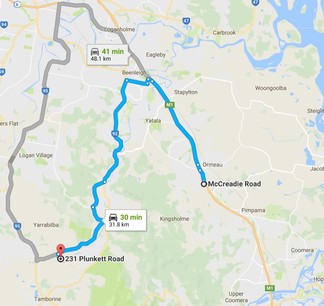
Calling all Luna-lovers, come along and enjoy an evening looking at our closest celestial neighbour with members from the SAS.
This InOMN event is an annual event that is dedicated to encouraging people to look up and take notice of our nearest neighbour, the Moon.
https://www.lpi.usra.edu/observe_the_moon_night/
Gold coin entry donation appreciated Sausage sizzle proceeds towards Tamborine Village Lions Clubs projects
***Weather permitting*** –
Contact Bryan for more information: 0431096511 or 0401217347
SAS 'International Observe the Moon Night' (InOMN)
http://sas.org.au/events/public-luna-night-for-inomn-2017/
~ Astrophotography with Noeleen Lowndes ~
Come along to the Helensvale Library Media Lab Workshop
~ On Thursday evening the 12th October 2017 from 6.30pm to 8.30pm ~
~ Astrophotography with Noeleen Lowndes ~
From the Southern Astronomical Society (Gold Coast)
Learn how to identify the south celestial pole and capture beautiful night sky photography.
Bring a camera with wide-angle lens, tripod and a remote shutter release cord for bulb mode.
Helensvale: 12 October 6.30pm – 8.30pm
From the Southern Astronomical Society (Gold Coast)
Learn how to identify the south celestial pole and capture beautiful night sky photography.
Bring a camera with wide-angle lens, tripod and a remote shutter release cord for bulb mode.
Helensvale: 12 October 6.30pm – 8.30pm
~ Saturn in the Park event for Saturday the 30th September 2017 ~
~ Members from the Southern Astronomical Society ~
Invite you and your family to a viewing of the magnificent planet Saturn and the Moon through our large telescopes.
Come along to the park for a wonderful night under the stars :-)
Date: Saturday the 30th September from 6.00 p.m. to 9.30 p.m.
Place: Esplanade North Park, The Esplanade at Paradise Point
(Opposite Mallard Ave on the beachfront)
*** Unfortunately if the weather is cloudy the event will be cancelled ***
Please see the flyer below for more information:
Invite you and your family to a viewing of the magnificent planet Saturn and the Moon through our large telescopes.
Come along to the park for a wonderful night under the stars :-)
Date: Saturday the 30th September from 6.00 p.m. to 9.30 p.m.
Place: Esplanade North Park, The Esplanade at Paradise Point
(Opposite Mallard Ave on the beachfront)
*** Unfortunately if the weather is cloudy the event will be cancelled ***
Please see the flyer below for more information:
NASA’s Cassini Spacecraft Ends Its Historic Exploration of Saturn
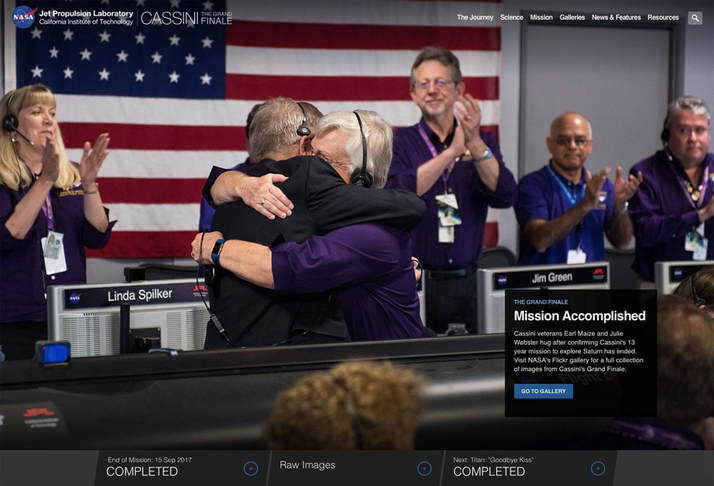
Cassini End of Mission (NHQ201709150004)
Cassini program manager at JPL, Earl Maize, left, and spacecraft operations team manager for the Cassini mission at Saturn, Julie Webster embrace after the Cassini spacecraft plunged into Saturn, Friday, Sept. 15, 2017 at NASA's Jet Propulsion Laboratory in Pasadena, California.
Since its arrival in 2004, the Cassini-Huygens mission has been a discovery machine, revolutionizing our knowledge of the Saturn system and captivating us with data and images never before obtained with such detail and clarity. On Sept. 15, 2017, operators will deliberately plunge the spacecraft into Saturn, as Cassini gathered science until the end. The “plunge” ensures Saturn’s moons will remain pristine for future exploration. During Cassini’s final days, mission team members from all around the world gathered at NASA’s Jet Propulsion Laboratory, Pasadena, California, to celebrate the achievements of this historic mission. Photo Credit: (NASA/Joel Kowsky)
Cassini plunged into Saturn's atmosphere and disintegrated about 3:31 a.m. PDT (7:31 a.m. EDT) (AEST) 9.55pm on Sept. 15, 2017.
A thrilling epoch in the exploration of our solar system came to a close today, as NASA's Cassini spacecraft made a fateful plunge into the atmosphere of Saturn, ending its 13-year tour of the ringed planet.
Please go to NASA’s JPL website to read all about the exciting end of this incredible mission to Saturn at:
https://saturn.jpl.nasa.gov/news/3121/nasas-cassini-spacecraft-ends-its-historic-exploration-of-saturn/
A thrilling epoch in the exploration of our solar system came to a close today, as NASA's Cassini spacecraft made a fateful plunge into the atmosphere of Saturn, ending its 13-year tour of the ringed planet.
Please go to NASA’s JPL website to read all about the exciting end of this incredible mission to Saturn at:
https://saturn.jpl.nasa.gov/news/3121/nasas-cassini-spacecraft-ends-its-historic-exploration-of-saturn/
~ How to Watch Cassini's last moments at Saturn ~
On the 15th September 2017
Last images from the Cassini Spacecraft are now being received!
https://saturn.jpl.nasa.gov
Here in Australia (AEST) the Canberra DSN starts tracking Cassini at 1.15pm on DSS43 & DSS35
At 6.37pm Cassini is set up for real time transmissions and by about 9.45pm the spacecraft will have plunged into the planets surface :-(
Goodbye Cassini…thank you for all the wonderful images and discoveries :-)
NASA will be streaming live feeds from mission control at the Jet Propulsion Laboratory in Pasadena, California, where scientists will be receiving the final images and data from the spacecraft.
NASA Live Streaming Channel Guide
https://saturn.jpl.nasa.gov/mission/grand-finale/for-media/#streaming
NASA TV at:
https://www.nasa.gov/multimedia/nasatv/index.html#public
NASA YouTube at:
https://www.youtube.com/nasajpl/live
If you have any trouble with these links try the National Geographic website where they are also streaming the live feed on NASA LIVE ON USTREAM at:
http://news.nationalgeographic.com/2017/09/watch-live-cassini-grand-finale-saturn-space-science/
Cassini: A Saturn Odyssey
~ Cassini's epic journey will come to an end on Sept. 15, 2017 ~
Cassini: The Wonder of Saturn
NASA’s Cassini spacecraft has explored the Saturn system since 2004, re-writing our understanding of the giant planet, its rings, moons and magnetosphere. For 13 years the spacecraft’s incredible, truly otherworldly images have revealed the wonder of Saturn in surprising, often awe-inspiring ways. Cassini is planetary exploration at its finest, proving that to truly reveal the grandeur of a world, there is no substitute for actually going there. For more information about the Cassini mission to Saturn, visit https://saturn.jpl.nasa.gov/
NASA’s Cassini spacecraft has explored the Saturn system since 2004, re-writing our understanding of the giant planet, its rings, moons and magnetosphere. For 13 years the spacecraft’s incredible, truly otherworldly images have revealed the wonder of Saturn in surprising, often awe-inspiring ways. Cassini is planetary exploration at its finest, proving that to truly reveal the grandeur of a world, there is no substitute for actually going there. For more information about the Cassini mission to Saturn, visit https://saturn.jpl.nasa.gov/
~ The Great American Solar Eclipse at St Joseph in Missouri in the USA ~
~ Eclipse 2017 at St Joseph in Missouri USA ~
Our Australian group with the Mayor of St Joseph Mr Bill Falkner…Aussie, Aussie, Aussie, Oi Oi Oi!! :-)
Our Australian group with the Mayor of St Joseph Mr Bill Falkner…Aussie, Aussie, Aussie, Oi Oi Oi!! :-)
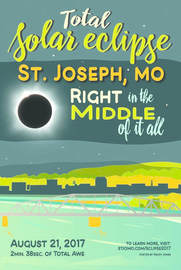
This is where we will be for the Total Eclipse of the Sun at St Joseph in Missouri.
The Sutherland Astronomical Society in NSW organised this amazing trip to the America
to not only witness the eclipse but to visit many of the NASA space centres and observatories.
Please check my Astro Blog page where I will post my story when I get back :-)
Wish us good luck with the weather, but there will be one thing that I’ll be sure of…it will be an incredible experience no matter what happens!!!
St Joseph Facebook page at:
https://www.facebook.com/Eclipse2017inStJoMo/
The Sutherland Astronomical Society in NSW organised this amazing trip to the America
to not only witness the eclipse but to visit many of the NASA space centres and observatories.
Please check my Astro Blog page where I will post my story when I get back :-)
Wish us good luck with the weather, but there will be one thing that I’ll be sure of…it will be an incredible experience no matter what happens!!!
St Joseph Facebook page at:
https://www.facebook.com/Eclipse2017inStJoMo/
~ Total Eclipse of the Sun in the USA on the 21st August 2017 ~
This total eclipse of the Sun will not be seen in Australia as the path of totality (the Moons shadow) runs right across main land America.
So I have to go and chase it….
My husband and I will be at a place called St Joseph in Missouri and we’ll be experiencing nearly the maximum time of 2 minutes and 38 seconds of totality…Woohoo!!
You don't have to travel this far to see this amazing event as NASA is going to live stream the whole eclipse (weather permitting)
Please see the links below and enjoy the experience :-)
NASA’s Total Eclipse live coverage on the 21st August 2017
Go to the website at:
https://eclipse2017.nasa.gov
Go to the live streaming of the event at:
https://eclipse2017.nasa.gov/eclipse-live-stream
So I have to go and chase it….
My husband and I will be at a place called St Joseph in Missouri and we’ll be experiencing nearly the maximum time of 2 minutes and 38 seconds of totality…Woohoo!!
You don't have to travel this far to see this amazing event as NASA is going to live stream the whole eclipse (weather permitting)
Please see the links below and enjoy the experience :-)
NASA’s Total Eclipse live coverage on the 21st August 2017
Go to the website at:
https://eclipse2017.nasa.gov
Go to the live streaming of the event at:
https://eclipse2017.nasa.gov/eclipse-live-stream
~ Partial Lunar Eclipse early Wednesday morning 8th August 2017 ~
If your excited to see a lovely partial eclipse of the Moon, you’ll need to wake up in the early hours of the morning on the 8th August and look to the western sky, there you will see a portion of the full Moon in the Earths shadow.
I’m on the east coast of Australia (Gold Coast) and my time zone is (EST) the event times outlined in my Astronomy 2017 on page 93 are as follows:
Penumbral eclipse begins: P1 – 1:48 am
Umbral eclipse begins: U1 – 3:22 am
Mid eclipse: Mid – 4:21 am
Umbral eclipse ends U4 – 5:19 am
Penumbral eclipse ends P4 – 6:53 am
Going by these times, the best time to view the event will be from 3.30 – 4.45 am if you don't want to view the whole event.
You will see the southern quarter of the Moon immersed in the umbral shadow.
You may even like to try and take some images of the event, below is an image from a previous lunar eclipse that will look like what you'll see in the western sky, but the shadow maybe in a different area on the surface of the Moon, good luck and clear skies…
I’m on the east coast of Australia (Gold Coast) and my time zone is (EST) the event times outlined in my Astronomy 2017 on page 93 are as follows:
Penumbral eclipse begins: P1 – 1:48 am
Umbral eclipse begins: U1 – 3:22 am
Mid eclipse: Mid – 4:21 am
Umbral eclipse ends U4 – 5:19 am
Penumbral eclipse ends P4 – 6:53 am
Going by these times, the best time to view the event will be from 3.30 – 4.45 am if you don't want to view the whole event.
You will see the southern quarter of the Moon immersed in the umbral shadow.
You may even like to try and take some images of the event, below is an image from a previous lunar eclipse that will look like what you'll see in the western sky, but the shadow maybe in a different area on the surface of the Moon, good luck and clear skies…
A partial part of a lunar eclipse on the 28th August 2007 taken with a Canon 350D camera and an 8inch telescope,
exposure time was 1/60th second and ISO100.
exposure time was 1/60th second and ISO100.
~ Star Stuff 24th & 25th June 2017 an Astronomy and Space Event at Bryon Bay ~
Well the Star Stuff event is nearly here!
Come along for a wonderful weekend of astronomy and space…don't forget to get your tickets at: https://starstuff.com.au and view all the incredible speakers that will be there to enrich your knowledge of the universe.
This event is fully supported by members from the Southern Astronomical Society from the Gold Coast in QLD.
http://sas.org.au/sas-supports-star-stuff-2017-at-bryon-bay/
Come along for a wonderful weekend of astronomy and space…don't forget to get your tickets at: https://starstuff.com.au and view all the incredible speakers that will be there to enrich your knowledge of the universe.
This event is fully supported by members from the Southern Astronomical Society from the Gold Coast in QLD.
http://sas.org.au/sas-supports-star-stuff-2017-at-bryon-bay/
~ TEDx Event at Helensvale Library 2nd June 2017 ~
I was invited by the lovely people from the Helensvale Library to give a TEDx talk on how I learnt all about the night sky as it may inspire other people to go outside and look up to discover there night sky...I hope it does, Happy Stargazing :-)
~ Starry Starry Night ~
Look up and discover your night sky
My TEDx talk has now gone online, please click the link below if you would like to watch it :-)
https://www.youtube.com/watch?v=KkaXnghax8c
To read more about the evening please go to my blog at:
http://www.mystardustobservatory.com/astro-blog/-tedx-talk-at-helensvale-library-2nd-june-2017
~ Starry Starry Night ~
Look up and discover your night sky
My TEDx talk has now gone online, please click the link below if you would like to watch it :-)
https://www.youtube.com/watch?v=KkaXnghax8c
To read more about the evening please go to my blog at:
http://www.mystardustobservatory.com/astro-blog/-tedx-talk-at-helensvale-library-2nd-june-2017
~ Stardust Junior Astronomy Club Dates from May - August 2017 ~
Runaway Bay Library on the Gold Coast in QLD Australia
SAS get-together at QLD Museum in Brisbane Saturday afternoon 22nd April at 1.30pm.
You are invited for a get together to view two exhibits, which are being held at the QLD Museum at South Bank in Brisbane. We will meet at the Museums Collectors Café at 1.30pm and hopefully we’ll have enough time afterwards to have a cup of coffee together.
The first exhibition will be Michael Benson’s Otherworld’s: Visions of our Solar System, which is FREE to enter, and the second exhibition is called, Hadron Collider ‘Where you will step inside the world’s greatest experiment’ (This exhibition ends on the 25th April 2017).
The entry cost for the Hadron Collider exhibition is $15 or less with a concession and you can buy tickets online or when you get there. Please go to the Brisbane Museum website to find out more about these two exhibits at: http://www.qm.qld.gov.au and we’ll look forward to seeing you there :-)
Noeleen Lowndes (President)
www.sas.org.au
The first exhibition will be Michael Benson’s Otherworld’s: Visions of our Solar System, which is FREE to enter, and the second exhibition is called, Hadron Collider ‘Where you will step inside the world’s greatest experiment’ (This exhibition ends on the 25th April 2017).
The entry cost for the Hadron Collider exhibition is $15 or less with a concession and you can buy tickets online or when you get there. Please go to the Brisbane Museum website to find out more about these two exhibits at: http://www.qm.qld.gov.au and we’ll look forward to seeing you there :-)
Noeleen Lowndes (President)
www.sas.org.au
Please go to the Brisbane Museum website to find out more about these two exhibits at: http://www.qm.qld.gov.au
~ Luminary lectures at the Gold Coast Libraries begin in 2017 ~
~ NASA’s Cassini spacecraft mission to Saturn on the 19th April 2017 from 6.30pm to 7.30pm ~
Presented by Noeleen Lowndes (SOC member in Australia)
I will be giving a presentation on the Cassini mission at the Broadbeach Library on Wednesday evening the 19th April 2017…this is my first SOC event for 2017 before Saturn is back in our skies for opposition on the 15th June.
If you live on the Gold Coast in Queensland please come along and hear all about this most amazing mission to Saturn, after nearly 20 years this incredible mission will end spectacularly on the 15th September when the Cassini spacecraft will plunge into the planets atmosphere!
Contact the library to book a seat at:
http://www.goldcoast.qld.gov.au/library/luminary-lectures-at-the-library-11686.htm
Presented by Noeleen Lowndes (SOC member in Australia)
I will be giving a presentation on the Cassini mission at the Broadbeach Library on Wednesday evening the 19th April 2017…this is my first SOC event for 2017 before Saturn is back in our skies for opposition on the 15th June.
If you live on the Gold Coast in Queensland please come along and hear all about this most amazing mission to Saturn, after nearly 20 years this incredible mission will end spectacularly on the 15th September when the Cassini spacecraft will plunge into the planets atmosphere!
Contact the library to book a seat at:
http://www.goldcoast.qld.gov.au/library/luminary-lectures-at-the-library-11686.htm
~ Star Stuff 2017 an Astronomy and Space Event at Bryon Bay ~
On the weekend of the 24th and 25th June 2017 an out of this world cosmic event will be happening at the stunning 5 star ‘Elements of Bryon Resort’ at iconic Bryon Bay.
During both days of the event, some of Australia’s leading scientists and experts will intrigue and amazed you with there presentations on such subjects as Cosmology, Astronomy and Space, Rocket Science, Astrophysics and the incredible world of astrophotography.
There will also be on site solar viewings through dedicated solar telescopes and night time viewing through large telescopes provided by members from the Southern Astronomical Society (weather permitting)
If you are thinking about buying a telescope or any other astronomical equipment, vendors from Celestron and Bintel will be on site to help with all your enquiries.
This is a weekend not to be missed with the general admission ticket, which includes the two days of presentations at just $95. The VIP ticket, which costs $250, includes the two days of talks, plus a 3 course VIP Dinner with Dr Karl as the guest speaker for the evening.
As an added bonus, every VIP ticket will go into the draw to win a Celestron Evolution 6 Computerised Telescope worth $2400 and the winner will be drawn at the dinner…what a wonderful prize!
Please see the flyer below, which outlines all the guest speakers, and has the link to the ‘Star Stuff 2017’, website where you can book your tickets: https://starstuff.com.au
Event organised by SAS member Dylan O’Donnell who is a Bryon Bay Astronomer and Team Celestron member.
During both days of the event, some of Australia’s leading scientists and experts will intrigue and amazed you with there presentations on such subjects as Cosmology, Astronomy and Space, Rocket Science, Astrophysics and the incredible world of astrophotography.
There will also be on site solar viewings through dedicated solar telescopes and night time viewing through large telescopes provided by members from the Southern Astronomical Society (weather permitting)
If you are thinking about buying a telescope or any other astronomical equipment, vendors from Celestron and Bintel will be on site to help with all your enquiries.
This is a weekend not to be missed with the general admission ticket, which includes the two days of presentations at just $95. The VIP ticket, which costs $250, includes the two days of talks, plus a 3 course VIP Dinner with Dr Karl as the guest speaker for the evening.
As an added bonus, every VIP ticket will go into the draw to win a Celestron Evolution 6 Computerised Telescope worth $2400 and the winner will be drawn at the dinner…what a wonderful prize!
Please see the flyer below, which outlines all the guest speakers, and has the link to the ‘Star Stuff 2017’, website where you can book your tickets: https://starstuff.com.au
Event organised by SAS member Dylan O’Donnell who is a Bryon Bay Astronomer and Team Celestron member.
~ Stardust Junior Astronomy Club Dates from March - May 2017 ~
At the Runaway Bay Library on the Gold Coast in QLD Australia
~ Three Super full Moons for October, November & December 2016 ~
~ Three Super full Moons for October, November & December 2016 ~
There will be three close encounters with our nearest celestial neighbour on the 16th October, the 14th November and the 14th December in 2016.
The Moon’s orbit around the Earth is not quite a circle but more like a squashed circle called an ellipse. This means that sometimes a full Moon will be closer to Earth called (Perigee) or further away called (Apogee) at full Moon.
The closest of these three Super Moons will be on the 14th November and the Moon will be at only 356,520 kilometres away from Earth. So if you can take some pictures of it rising with reference to some buildings or trees it should look spectacular. Also, if you are near a body of water like a lake or ocean the moonlight will look stunning …like a stairway to the Moon.
The Super perigee Moon on the 14th November will be the closest since the year 1948 and indeed will look brighter and a bit larger than an ordinary full Moon. But so will the other two…so if you missed seeing the first two, you’ve still got the last one on the 14th December to enjoy…
There will be three close encounters with our nearest celestial neighbour on the 16th October, the 14th November and the 14th December in 2016.
The Moon’s orbit around the Earth is not quite a circle but more like a squashed circle called an ellipse. This means that sometimes a full Moon will be closer to Earth called (Perigee) or further away called (Apogee) at full Moon.
The closest of these three Super Moons will be on the 14th November and the Moon will be at only 356,520 kilometres away from Earth. So if you can take some pictures of it rising with reference to some buildings or trees it should look spectacular. Also, if you are near a body of water like a lake or ocean the moonlight will look stunning …like a stairway to the Moon.
The Super perigee Moon on the 14th November will be the closest since the year 1948 and indeed will look brighter and a bit larger than an ordinary full Moon. But so will the other two…so if you missed seeing the first two, you’ve still got the last one on the 14th December to enjoy…
Science at NASA has a great article and YouTube video explaining this phenomenon at:
https://science.nasa.gov/news-articles/2016-ends-with-three-supermoons
Please see the video below:
~ International Observe the Moon Night ~
Saturday, October 8, 2016
Calling all Luna-lovers!
~ Seeing the moon in a whole new light ~
Come along and enjoy a wonderful night with members from the Southern Astronomical Society who will set up their large telescopes
and show you our amazing Moon & other celestial objects in the night sky
Time: 6:00 pm - 9:00 pm
Venue at: Woodstock - Youth Enterprise Trust
231 Plunkett Road, Tamborine 4270
Noeleen Lowndes (President)
Southern Astronomical Society in Australia
http://sas.org.au
Please see the flyer below with all the information for this InOMN event for 2016
and show you our amazing Moon & other celestial objects in the night sky
Time: 6:00 pm - 9:00 pm
Venue at: Woodstock - Youth Enterprise Trust
231 Plunkett Road, Tamborine 4270
Noeleen Lowndes (President)
Southern Astronomical Society in Australia
http://sas.org.au
Please see the flyer below with all the information for this InOMN event for 2016
Saturn on the Mountain
At O'Reilly's Rainforest Retreat
Saturday 10th September – Sunday 11th September 2016
~ See Amazing Saturn at O’Reilly’s Rainforest Retreat ~
I’ll be giving talks on this incredible mission to Saturn by the Cassini Spacecraft and showing everyone the real planet Saturn in the night sky with my large telescope.
Every year I’m invited to this beautiful World Heritage nature resort to give astronomy and space presentations to their guests and visitors, where we all have a wonderful time viewing the wonders of the universe…so please come along and join us. https://oreillys.com.au
Noeleen Lowndes, NASA’s Saturn Observation Campaign Member in Australia. https://saturn.jpl.nasa.gov
Please see the flyer below for all the details…and happy stargazing to all, Noeleen :-)
I’ll be giving talks on this incredible mission to Saturn by the Cassini Spacecraft and showing everyone the real planet Saturn in the night sky with my large telescope.
Every year I’m invited to this beautiful World Heritage nature resort to give astronomy and space presentations to their guests and visitors, where we all have a wonderful time viewing the wonders of the universe…so please come along and join us. https://oreillys.com.au
Noeleen Lowndes, NASA’s Saturn Observation Campaign Member in Australia. https://saturn.jpl.nasa.gov
Please see the flyer below for all the details…and happy stargazing to all, Noeleen :-)
~ Stardust Junior Astronomy Club Dates from August 2016 - November 2016 ~
At the Runaway Bay Library on the Gold Coast in QLD Australia
~ NASA’s Juno Spacecraft arrives at Jupiter on the 4th July 2016 ~
Jupiter: Into the Unknown (NASA Juno Mission Trailer)
Published on Jun 23, 2016
Secrets lie deep within Jupiter, shrouded in the solar system's strongest magnetic field and most lethal radiation belts. On July 4, 2016, NASA's Juno spacecraft will plunge into uncharted territory, entering orbit around the gas giant and passing closer than any spacecraft before. Juno will see Jupiter for what it really is, but first it must pass the trial of orbit insertion. For more information: http://www.nasa.gov/juno and http://missionjuno.swri.edu
Secrets lie deep within Jupiter, shrouded in the solar system's strongest magnetic field and most lethal radiation belts. On July 4, 2016, NASA's Juno spacecraft will plunge into uncharted territory, entering orbit around the gas giant and passing closer than any spacecraft before. Juno will see Jupiter for what it really is, but first it must pass the trial of orbit insertion. For more information: http://www.nasa.gov/juno and http://missionjuno.swri.edu
~ The Juno Spacecraft Carries Three Special Figurines to Jupiter ~
NASA's Jupiter-bound Juno spacecraft will carry the 1.5-inch likeness of Galileo Galilei, the Roman god Jupiter and his wife Juno to Jupiter when the spacecraft launches this Friday, Aug. 5. The inclusion of the three mini-statues, or figurines, is part of a joint outreach and educational program developed as part of the partnership between NASA and the LEGO Group to inspire children to explore science, technology, engineering and mathematics.
In Greek and Roman mythology, Jupiter drew a veil of clouds around himself to hide his mischief. From Mount Olympus, Juno was able to peer through the clouds and reveal Jupiter's true nature. Juno holds a magnifying glass to signify her search for the truth, while her husband holds a lightning bolt. The third LEGO crew member is Galileo Galilei, who made several important discoveries about Jupiter, including the four largest satellites of Jupiter (named the Galilean moons in his honor). Of course, the miniature Galileo has his telescope with him on the journey. (NASA)
In Greek and Roman mythology, Jupiter drew a veil of clouds around himself to hide his mischief. From Mount Olympus, Juno was able to peer through the clouds and reveal Jupiter's true nature. Juno holds a magnifying glass to signify her search for the truth, while her husband holds a lightning bolt. The third LEGO crew member is Galileo Galilei, who made several important discoveries about Jupiter, including the four largest satellites of Jupiter (named the Galilean moons in his honor). Of course, the miniature Galileo has his telescope with him on the journey. (NASA)
‘Saturn in the Park’
*Saturday the 11th June from 6.00 p.m. to 9.30 p.m.
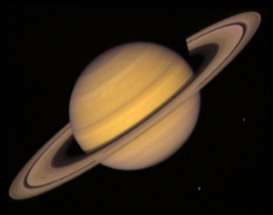 (Photo courtesy of NASA/JPL Cassini Mission)
(Photo courtesy of NASA/JPL Cassini Mission)
Come along for a FREE viewing of the magnificent planet Saturn in our night sky
‘Esplanade North Park’ The Esplanade at Paradise Point on the Gold Coast
(Opposite Mallard Ave on the beachfront)
Members from the Southern Astronomical Society invite you and your family to come view the magnificent planets Saturn & Jupiter, the Moon & other celestial objects in the night sky through our large telescopes.
*** Unfortunately if the weather is cloudy the event will be cancelled **
(Please see flyer and directions below for more details)
‘Esplanade North Park’ The Esplanade at Paradise Point on the Gold Coast
(Opposite Mallard Ave on the beachfront)
Members from the Southern Astronomical Society invite you and your family to come view the magnificent planets Saturn & Jupiter, the Moon & other celestial objects in the night sky through our large telescopes.
*** Unfortunately if the weather is cloudy the event will be cancelled **
(Please see flyer and directions below for more details)
Southern Astronomical Society website at: http://sas.org.au
~ Stardust Junior Astronomy Club Dates from June 2016 - August 2016 ~
~ Exploration of the Solar System ~
Thursday 12th May 2016 from 5.30pm - 7.00pm
Come along to the Broadbeach Library and hear all about the new discoveries being at the magnificent planet Saturn by NASA’s Cassini spacecraft whichis currently in orbit about Saturn. Also hear and see all the other new discoveries being made at the other planets in our Solar System.
Presented by Noeleen Lowndes
NASA’s Saturn Observation Campaign Member in Australia
https://saturn.jpl.nasa.gov
http://sas.org.au
Presented by Noeleen Lowndes
NASA’s Saturn Observation Campaign Member in Australia
https://saturn.jpl.nasa.gov
http://sas.org.au
~ World Science Festival being held in Brisbane 9th -13th March 2016 ~
The World Science Festival is being held from Wednesday the 9th to Sunday the 13th March in Brisbane.
This will be a great opportunity to attend some wonderful presentations on astronomy, space and the world’s latest scientific discoveries, including a presentation on the latest confirmation of Albert Einstein’s 1915 prediction of Gravitational Waves. The website link where you’ll find the full program list is at: http://www.worldsciencefestival.com.au/program/program-listing/
There is also a FREE Science Street Party being held at South Bank in the heart of BRISBANE on Saturday the 12th and Sunday the 13th March 2016 from 10am-4pm each day.
Please see below a YouTube video with Brian Greene explaining what Gravitational Waves are and how they are going to change the way we think about out universe!
This will be a great opportunity to attend some wonderful presentations on astronomy, space and the world’s latest scientific discoveries, including a presentation on the latest confirmation of Albert Einstein’s 1915 prediction of Gravitational Waves. The website link where you’ll find the full program list is at: http://www.worldsciencefestival.com.au/program/program-listing/
There is also a FREE Science Street Party being held at South Bank in the heart of BRISBANE on Saturday the 12th and Sunday the 13th March 2016 from 10am-4pm each day.
Please see below a YouTube video with Brian Greene explaining what Gravitational Waves are and how they are going to change the way we think about out universe!
Please go to this link if you would like to go to Brian Greene’s presentation:
http://www.worldsciencefestival.com.au/news/breaking-news-spectacular-confirmation-of-einsteins-prediction/
Brian Greene: Why is our universe fine-tuned for life?
https://www.youtube.com/watch?v=bf7BXwVeyWw
http://www.worldsciencefestival.com.au/news/breaking-news-spectacular-confirmation-of-einsteins-prediction/
Brian Greene: Why is our universe fine-tuned for life?
https://www.youtube.com/watch?v=bf7BXwVeyWw
~ Stardust Junior Astronomy Club Dates from November 2015 - May 2016 ~
~ Lunar Star Party Weekend at O’Reilly’s Rainforest Retreat for InOMN 2015 ~
~ Friday 18th & Saturday 19th September 2015 ~
~ Lunar Star Party Weekend at O’Reilly’s Rainforest Retreat ~
In celebration of International Observe the Moon Night (InOMN) 2015
Come along to the top of the mountain in the beautiful Gold Coast Hinterland and enjoy a wonderful weekend of lunar presentations including viewings of our Moon and Saturn through a large telescope.
Presented by Noeleen Lowndes
NASA’s Saturn Observation Campaign Member in Australia
President of the Southern Astronomical Society (Gold Coast)
On Friday the 18th and Saturday the 19th September 2015, free for all guests and the community of Lamington National Park.
Address: Lamington National Park Road, via Canungra in Queensland Phone: 1800 688722
http://www.oreillys.com.au/
http://observethemoonnight.org/
In celebration of International Observe the Moon Night (InOMN) 2015
Come along to the top of the mountain in the beautiful Gold Coast Hinterland and enjoy a wonderful weekend of lunar presentations including viewings of our Moon and Saturn through a large telescope.
Presented by Noeleen Lowndes
NASA’s Saturn Observation Campaign Member in Australia
President of the Southern Astronomical Society (Gold Coast)
On Friday the 18th and Saturday the 19th September 2015, free for all guests and the community of Lamington National Park.
Address: Lamington National Park Road, via Canungra in Queensland Phone: 1800 688722
http://www.oreillys.com.au/
http://observethemoonnight.org/
Gold Coast City Libraries - Calendar of Events - August to September 2015
~ Stardust Junior Astronomy Club ~
https://www.goldcoast.qld.gov.au/library/default.html
~ Stardust Junior Astronomy Club ~
https://www.goldcoast.qld.gov.au/library/default.html
~ Send your name to Mars ~
Why don’t you have some fun and Send your name to Mars on NASA’s next space mission called InSight…but you’ll have to be quick as it closes on the 8th September 2015. Please go to website below and download your special Mars certificate :-)
http://mars.nasa.gov/participate/send-your-name/insight/
http://mars.nasa.gov/participate/send-your-name/insight/
~ World Record Stargazing Event in Australia Friday 21st August 6.00 – 9.00pm ~
~ Your invited to be part of this wonderful event for Science Week ~
Please go to my blog to read all the information or click on the flyer below:
http://www.mystardustobservatory.com/astro-blog/world-record-stargazing-event-friday-21st-august-600-900pm
Please go to my blog to read all the information or click on the flyer below:
http://www.mystardustobservatory.com/astro-blog/world-record-stargazing-event-friday-21st-august-600-900pm
~ Stardust Junior Astronomy Club dates from August to October 2015 ~
Runaway Bay Library
~ NASA’s New Horizons Spacecraft finally arrives at Pluto on Tuesday the 14th July 2015 ~
~ Please go to my blog page at to read all about this incredible mission to Pluto ~
http://www.mystardustobservatory.com/astro-blog/nasas-new-horizons-spacecraft-arrives-at-pluto-on-tuesday-14th-july-2015
Please go to the websites below for more information and to witness live coverage of this wonderful event:
https://www.nasa.gov/mission_pages/newhorizons/main/index.html
http://solarsystem.nasa.gov/planets/plutotoolkit.cfm
http://www.cdscc.nasa.gov/
http://solarsystem.nasa.gov/docs/New_Horizons_fact_sheet_2015.pdf
http://www.nasa.gov/multimedia/nasatv/
http://solarsystem.nasa.gov/docs/Pluto_Encounter_NASA_Televised_Events_Plan.pdf
http://www.mystardustobservatory.com/astro-blog/nasas-new-horizons-spacecraft-arrives-at-pluto-on-tuesday-14th-july-2015
Please go to the websites below for more information and to witness live coverage of this wonderful event:
https://www.nasa.gov/mission_pages/newhorizons/main/index.html
http://solarsystem.nasa.gov/planets/plutotoolkit.cfm
http://www.cdscc.nasa.gov/
http://solarsystem.nasa.gov/docs/New_Horizons_fact_sheet_2015.pdf
http://www.nasa.gov/multimedia/nasatv/
http://solarsystem.nasa.gov/docs/Pluto_Encounter_NASA_Televised_Events_Plan.pdf
~ New Horizons Will Shed More Light on Pluto Than Ever Before ~
~ Reflections on Clyde Tombaugh “NASA Solar System’ ~
Annette and Alden Tombaugh, the children of Clyde Tombaugh, remember their father and his discovery of Pluto.
~ Stardust Junior Astronomy Club dates from May to July 2015 ~
Runaway Bay Library
~ Total Lunar Eclipse on the Gold Coast in Australia Saturday 4th April 2015 ~
This is the first total eclipse of the Moon for the year, and it’s fully visible across eastern Australia, especially here on the Gold Coast.
As you go west across Australia, the eclipse will have begun in twilight.
For you to enjoy the event you’ll only need to have a clear eastern to northern horizon, and you don’t need any fancy equipment to thoroughly enjoy this wonderful astronomical event. You can simply view the eclipse with your eyes or better still use a pair of binoculars, if you have a telescope than that’s even better, but it’s not a necessity.
A lunar eclipse is completely safe to view, as it’s reflected sunlight off the surface of the Moon, unlike a solar eclipse, which is very dangerous to look at with your eyes without proper solar glasses or filters.
The whole event moves quite slowly and this eclipse lasts from beginning to end just on six hours…so you’ll have plenty of time to relax and enjoy the spectacle. This eclipse is also a bit unusual, as totality will only last about 5 minutes…so make sure your viewing the eclipse at that time to see it at its darkest, which here on the Gold Coast will be 10pm. (The Moon will now be high up in the Northern sky)
The beginning of the eclipse (penumbral) begins at 7.00pm and by 7.45pm you’ll really start to see the eclipsed Moon moving into the Earths shadow. (Please see all the times below)
If your taking images, you can use your longest telephoto lens with your camera on a tripod, you’ll only need to take short exposures when the Moon is very bright in the early stages, but at full eclipse be prepared to take exposures for a few seconds, as there’s very little light on the surface of the Moon.
All lunar eclipses are different, it all depends how much dust, smoke or moisture is in the atmosphere that determines how dark or light the eclipsed Moon will look. The only reason we are seeing the Moon at all is because the Suns light is being refracted through the Earths atmosphere and shining onto the surface of the Moon while it's orbiting through the Earths shadow.
The following information is from Astronomy 2015 published by Quasar Publishing and many astronomers use this publication every day for there astronomical times and information.
Astronomy 2015, page 87: AEST AWST
Penumbral eclipse begins (P1) 7:00pm 5:00pm
Partial eclipse begins (U1) 8:15pm 6:15pm
Total eclipse begins (U2) 9:54pm 7:54pm
Greatest eclipse (Totality) 10.00pm 8:00pm
Total eclipse Ends (U3) 10:06pm 8:06pm
Partial eclipse ends (U4) 11:45pm 9:45pm
Penumbral eclipse ends (P4) 01:01am 11:01pm
Enjoy the eclipse :-)
As you go west across Australia, the eclipse will have begun in twilight.
For you to enjoy the event you’ll only need to have a clear eastern to northern horizon, and you don’t need any fancy equipment to thoroughly enjoy this wonderful astronomical event. You can simply view the eclipse with your eyes or better still use a pair of binoculars, if you have a telescope than that’s even better, but it’s not a necessity.
A lunar eclipse is completely safe to view, as it’s reflected sunlight off the surface of the Moon, unlike a solar eclipse, which is very dangerous to look at with your eyes without proper solar glasses or filters.
The whole event moves quite slowly and this eclipse lasts from beginning to end just on six hours…so you’ll have plenty of time to relax and enjoy the spectacle. This eclipse is also a bit unusual, as totality will only last about 5 minutes…so make sure your viewing the eclipse at that time to see it at its darkest, which here on the Gold Coast will be 10pm. (The Moon will now be high up in the Northern sky)
The beginning of the eclipse (penumbral) begins at 7.00pm and by 7.45pm you’ll really start to see the eclipsed Moon moving into the Earths shadow. (Please see all the times below)
If your taking images, you can use your longest telephoto lens with your camera on a tripod, you’ll only need to take short exposures when the Moon is very bright in the early stages, but at full eclipse be prepared to take exposures for a few seconds, as there’s very little light on the surface of the Moon.
All lunar eclipses are different, it all depends how much dust, smoke or moisture is in the atmosphere that determines how dark or light the eclipsed Moon will look. The only reason we are seeing the Moon at all is because the Suns light is being refracted through the Earths atmosphere and shining onto the surface of the Moon while it's orbiting through the Earths shadow.
The following information is from Astronomy 2015 published by Quasar Publishing and many astronomers use this publication every day for there astronomical times and information.
Astronomy 2015, page 87: AEST AWST
Penumbral eclipse begins (P1) 7:00pm 5:00pm
Partial eclipse begins (U1) 8:15pm 6:15pm
Total eclipse begins (U2) 9:54pm 7:54pm
Greatest eclipse (Totality) 10.00pm 8:00pm
Total eclipse Ends (U3) 10:06pm 8:06pm
Partial eclipse ends (U4) 11:45pm 9:45pm
Penumbral eclipse ends (P4) 01:01am 11:01pm
Enjoy the eclipse :-)
‘Jupiter in the Park’
Saturday 28th March 2015 at Paradise Point everyone welcomed
Members from the Southern Astronomical Society invite you and your family to come view the magnificent planet Jupiter, the Moon & other celestial objects in the night sky through our large telescopes.
*Saturday the 28th March from 6.30 p.m. to 9.30 p.m.*
*Saturday the 28th March from 6.30 p.m. to 9.30 p.m.*
~ Stardust Junior Astronomy Club dates from February to April 2015 ~
Runaway Bay Library
~ Send your Name to Mars ~
But be quick registration ends 31st October 2014
NASA’s doing it again, inviting the public to be part of all the excitement on the next space mission to the incredible red planet Mars.
I can’t believe that over 1 million earthlings have now registered since I first register a few weeks ago…. Amazing!!!
http://mars.nasa.gov/participate/send-your-name/orion-first-flight/
NASA’s Main Mars Website at: http://mars.nasa.gov/
I can’t believe that over 1 million earthlings have now registered since I first register a few weeks ago…. Amazing!!!
http://mars.nasa.gov/participate/send-your-name/orion-first-flight/
NASA’s Main Mars Website at: http://mars.nasa.gov/
~ Total Lunar Eclipse Wednesday 8th October 2014 ~
This is our second lunar eclipse for the year here in Australia, but unlike the last eclipse seen in April when the Moon was fully eclipsed at Moonrise this time we’ll see the whole eclipse above the horizon. Please read more on my latest blog.
The following information is from Astronomy 2014 published by Quasar Publishing and we astronomers use it every day for our astronomical times and information.
Astronomy 2014, page 85 AEST AWST UT
Penumbral eclipse begins (P1) 6:14pm 4:14pm 08:14am
Partial eclipse begins (U1) 7:14pm 5:15pm 09:14am
Total eclipse begins (U2) 8:25pm 6:25pm 10:24am
Greatest eclipse (Totality) 8:55pm 6:55pm 10:54am
Total eclipse Ends (U3) 9:25pm 7:25pm 11:24am
Partial eclipse ends (U4) 10:35pm 8:35pm 12:34pm
Penumbral eclipse ends (P4) 11:35pm 9:35pm 13:35pm
If you would like to see some images from the last lunar eclipse taken in April with just my DSLR camera and telephoto lens on a tripod please go to my blog at: http://www.mystardustobservatory.com/astro-blog/-total-eclipse-of-the-moon-on-the-15th-april-2014
The following information is from Astronomy 2014 published by Quasar Publishing and we astronomers use it every day for our astronomical times and information.
Astronomy 2014, page 85 AEST AWST UT
Penumbral eclipse begins (P1) 6:14pm 4:14pm 08:14am
Partial eclipse begins (U1) 7:14pm 5:15pm 09:14am
Total eclipse begins (U2) 8:25pm 6:25pm 10:24am
Greatest eclipse (Totality) 8:55pm 6:55pm 10:54am
Total eclipse Ends (U3) 9:25pm 7:25pm 11:24am
Partial eclipse ends (U4) 10:35pm 8:35pm 12:34pm
Penumbral eclipse ends (P4) 11:35pm 9:35pm 13:35pm
If you would like to see some images from the last lunar eclipse taken in April with just my DSLR camera and telephoto lens on a tripod please go to my blog at: http://www.mystardustobservatory.com/astro-blog/-total-eclipse-of-the-moon-on-the-15th-april-2014
~ Lunar Star Party Weekend at O’Reilly’s Rainforest Retreat for InOMN 2014 ~
~ Friday 5th & Saturday 6th September 2014 ~
~ Lunar Star Party Weekend at O’Reilly’s Rainforest Retreat ~
In celebration of International Observe the Moon Night (InOMN) 2014
Come along to the top the mountain in the beautiful Gold Coast Hinterland for a wonderful weekend full of lunar presentations and viewings of our Moon and Saturn through a large telescope.
Presented by Noeleen Lowndes
NASA’s Saturn Observation Campaign Member in Australia
President of the Southern Astronomical Society (Gold Coast)
On Friday the 5th and Saturday the 6th September 2014, free for all guests and the community of Lamington National Park.
Address: Lamington National Park Road, via Canungra in Queensland Phone: 1800 688722
http://www.oreillys.com.au/
http://observethemoonnight.org/
In celebration of International Observe the Moon Night (InOMN) 2014
Come along to the top the mountain in the beautiful Gold Coast Hinterland for a wonderful weekend full of lunar presentations and viewings of our Moon and Saturn through a large telescope.
Presented by Noeleen Lowndes
NASA’s Saturn Observation Campaign Member in Australia
President of the Southern Astronomical Society (Gold Coast)
On Friday the 5th and Saturday the 6th September 2014, free for all guests and the community of Lamington National Park.
Address: Lamington National Park Road, via Canungra in Queensland Phone: 1800 688722
http://www.oreillys.com.au/
http://observethemoonnight.org/
